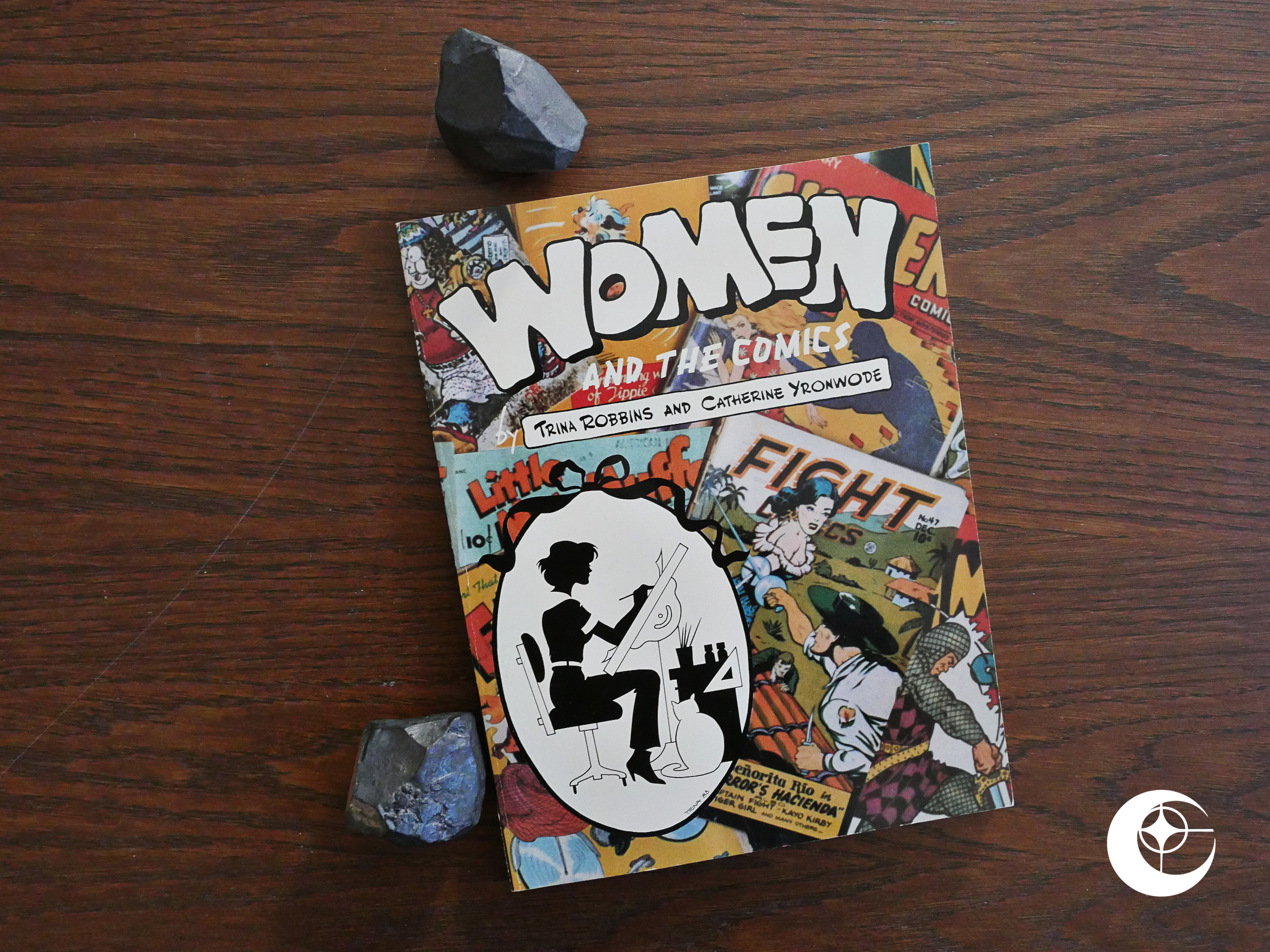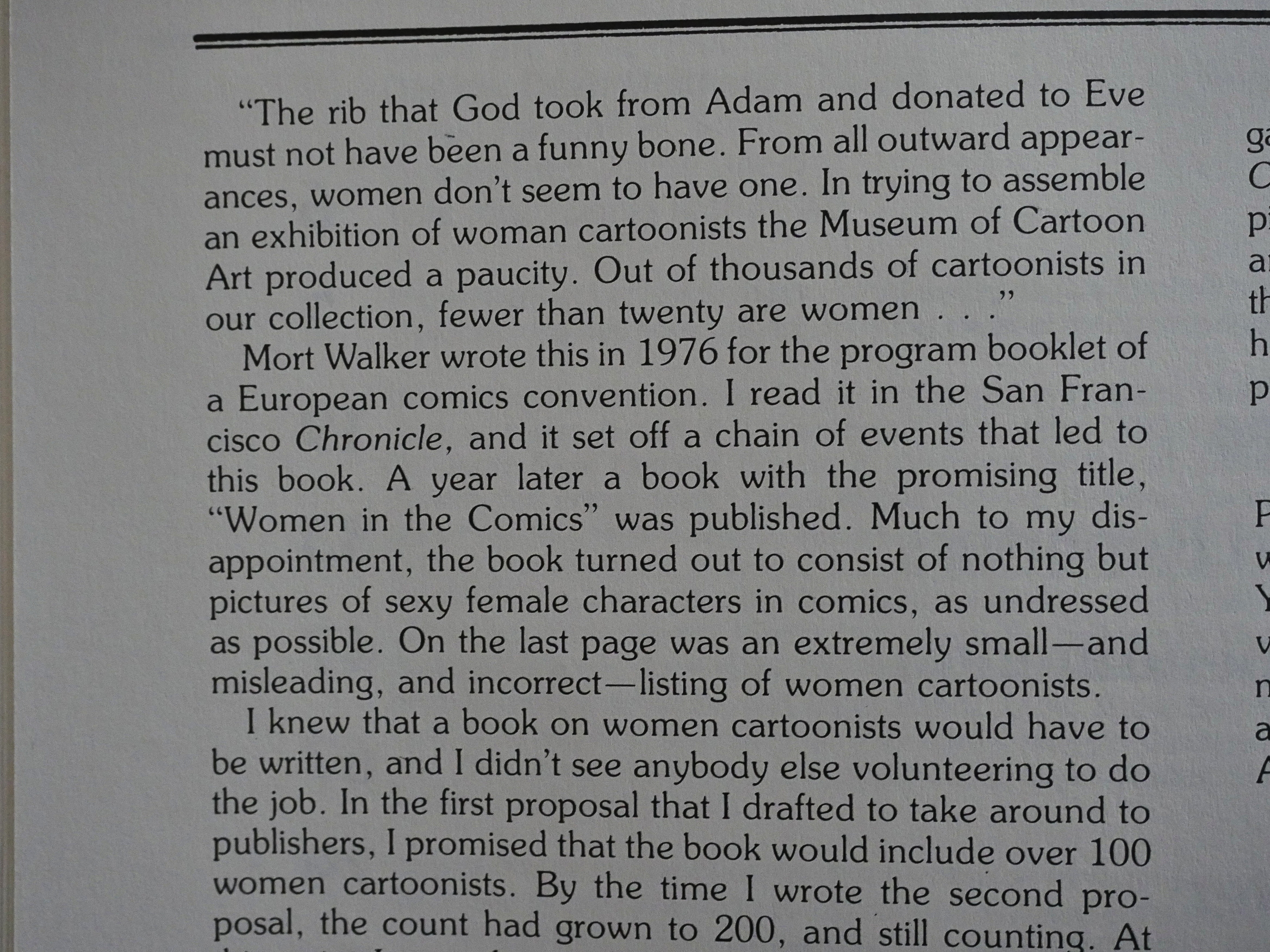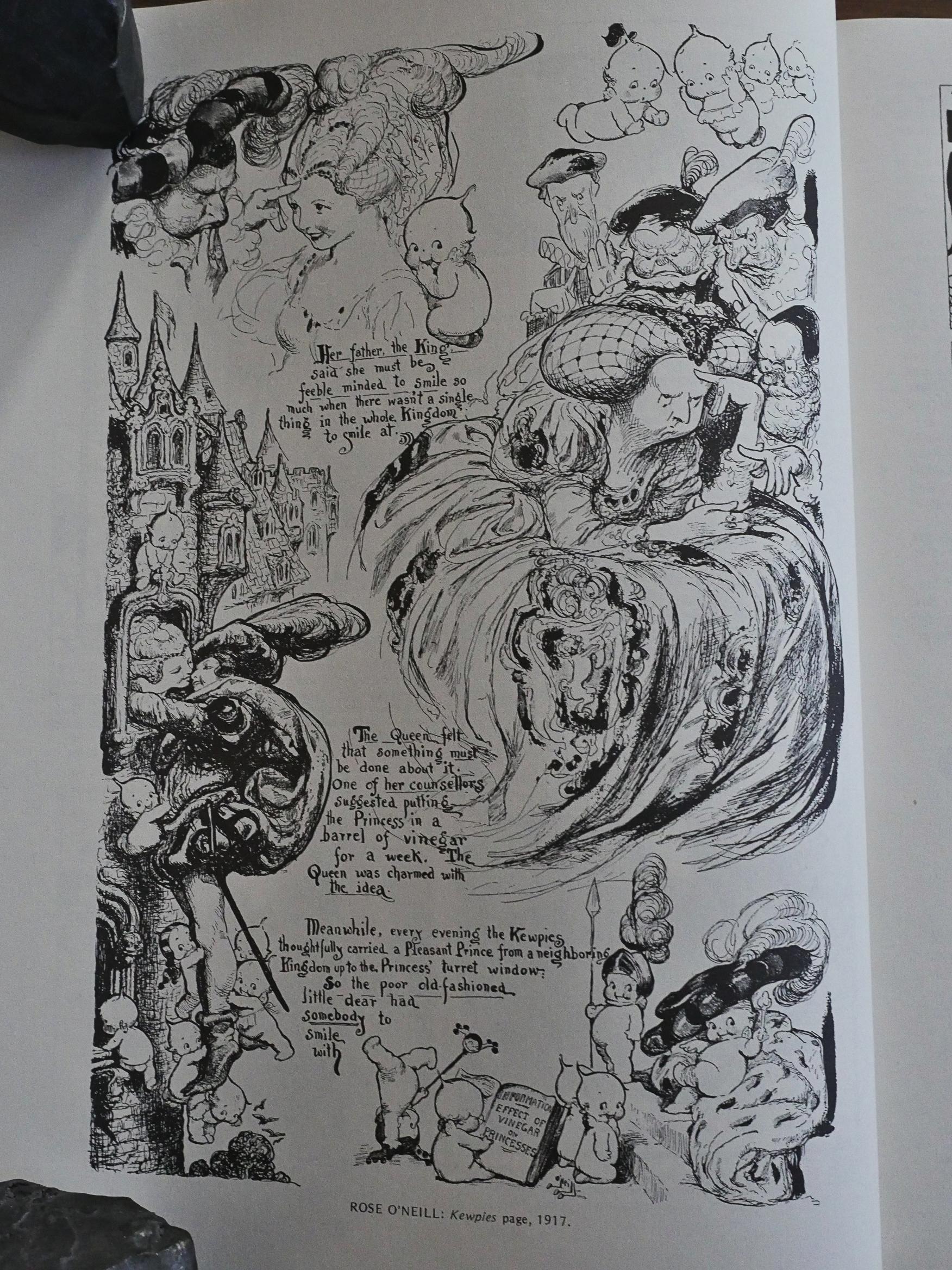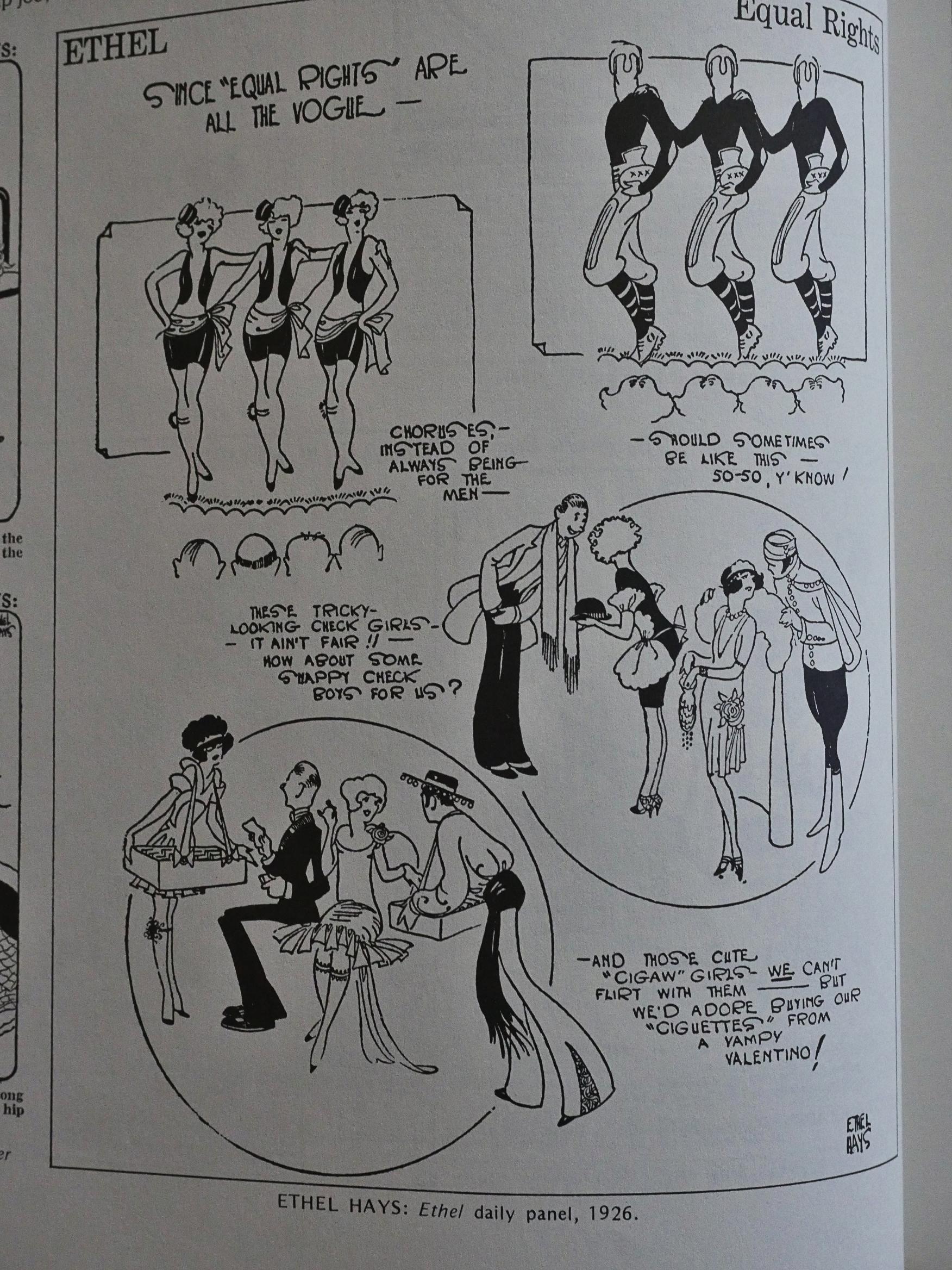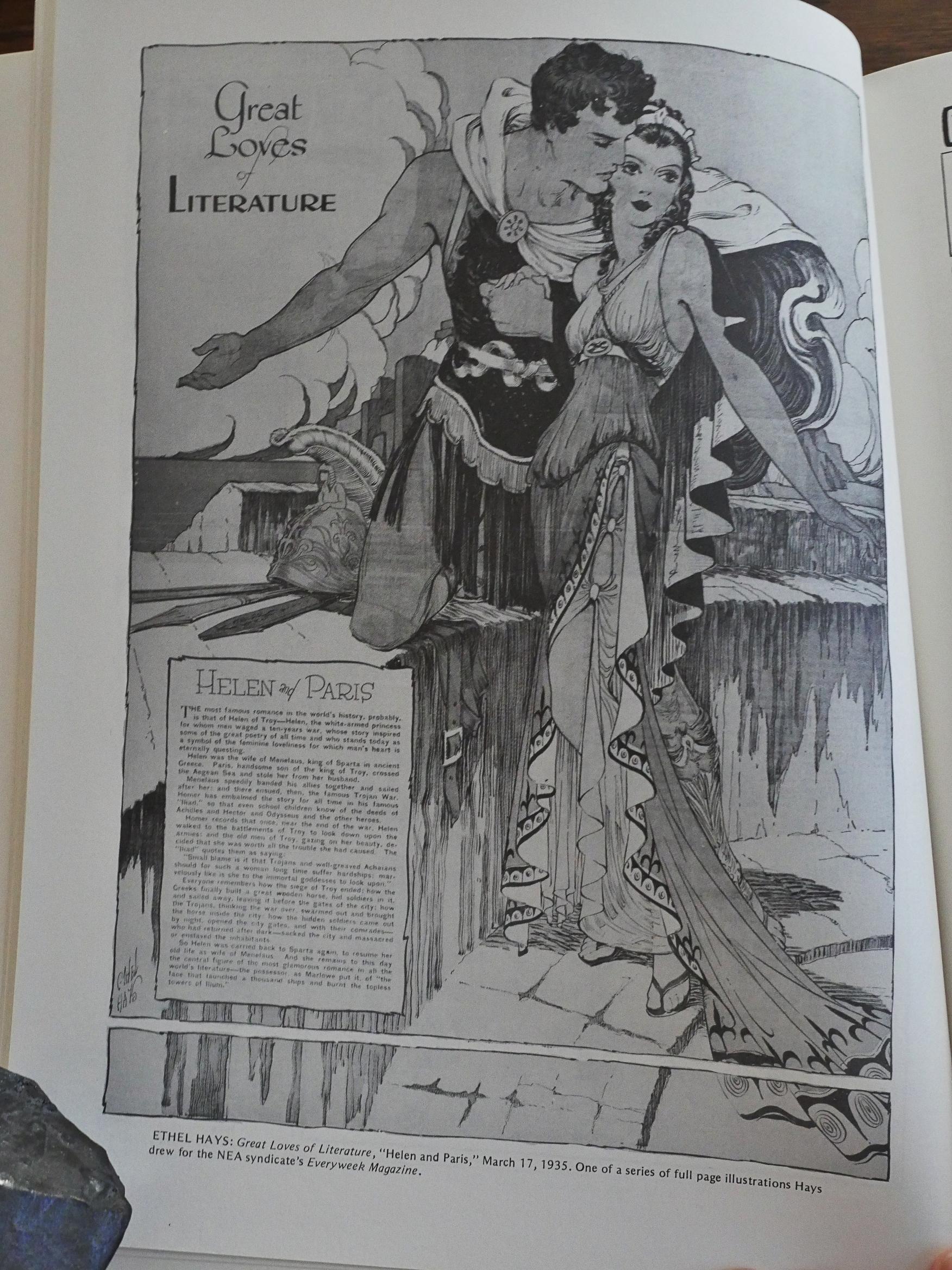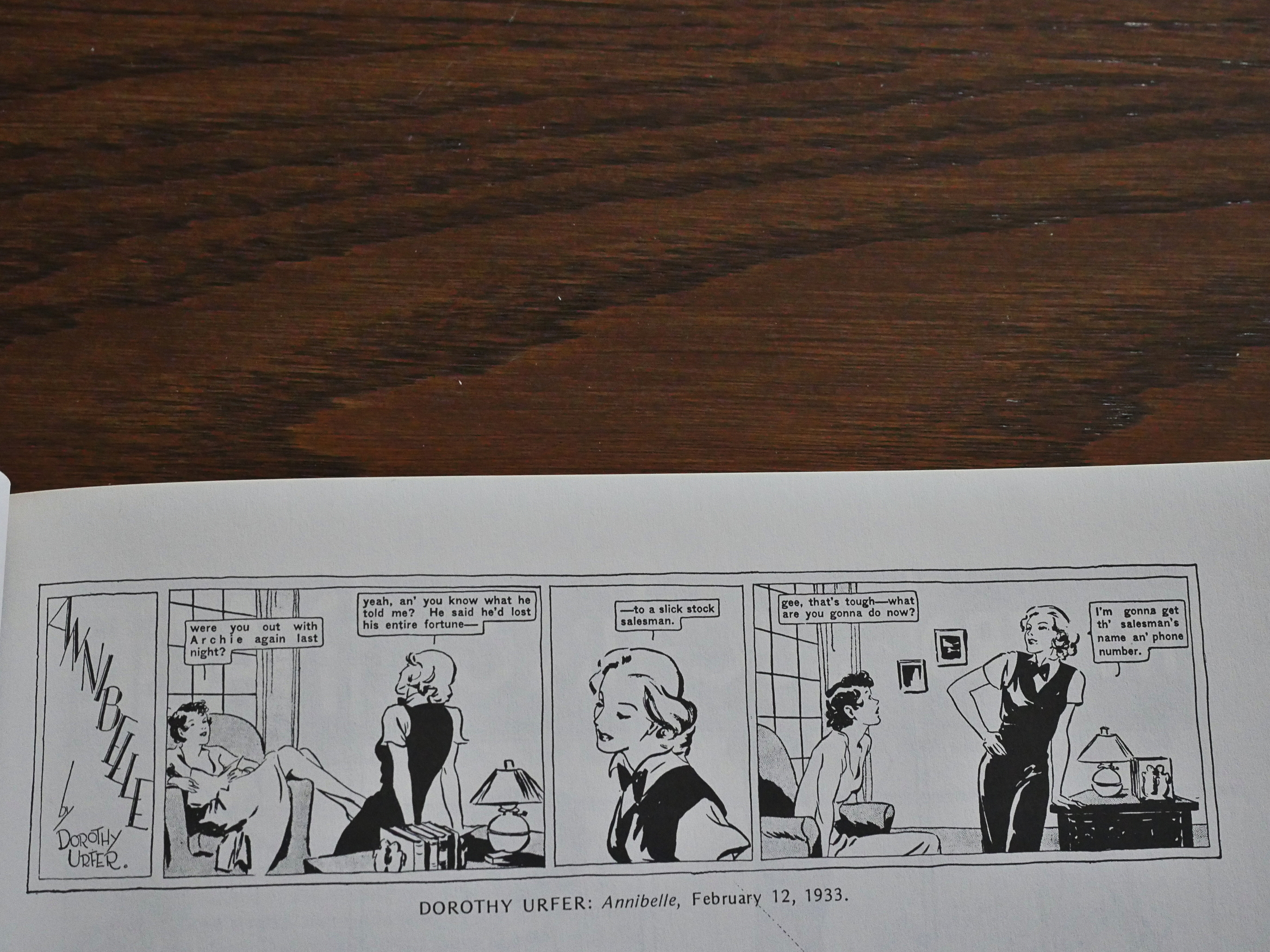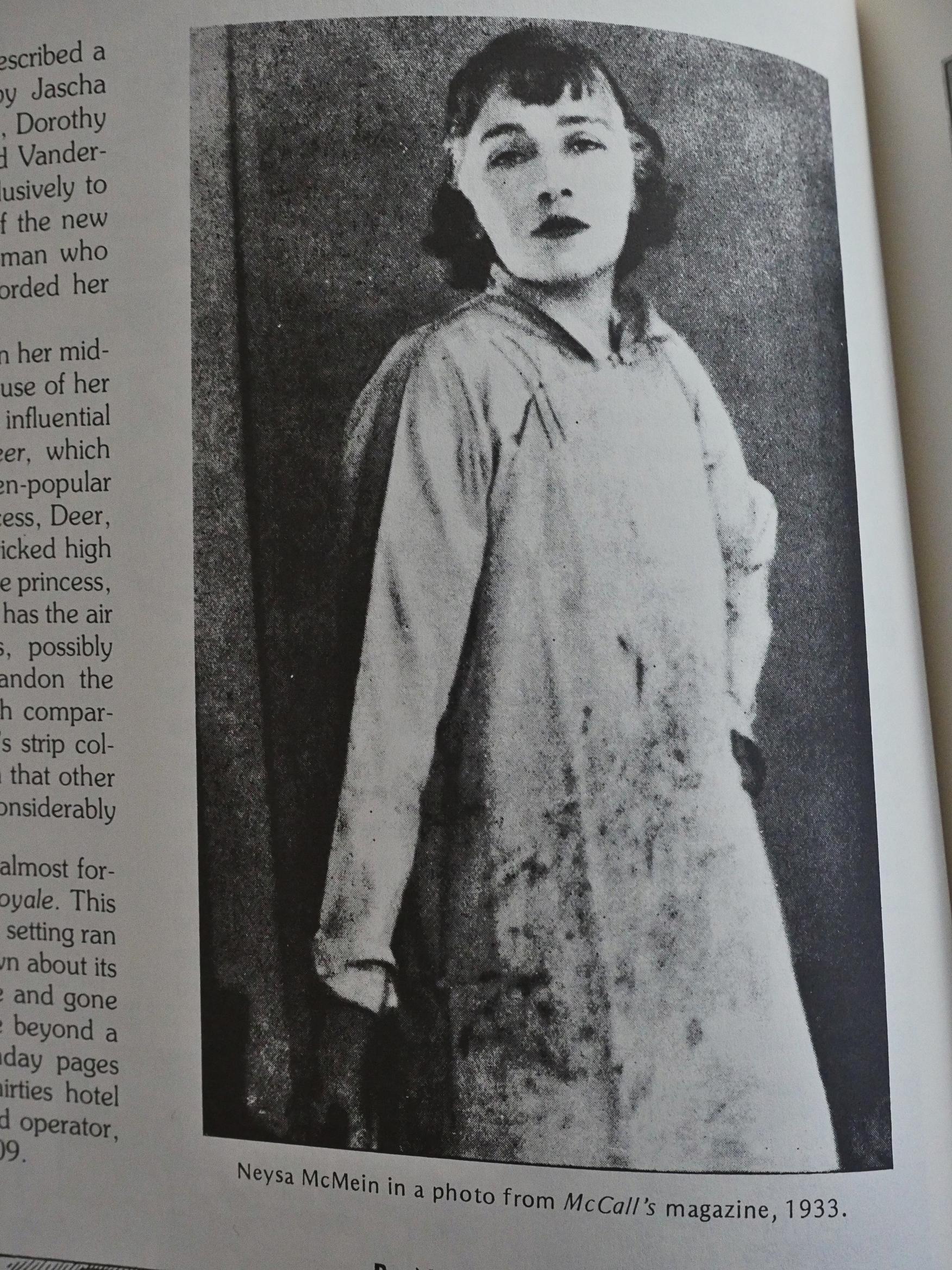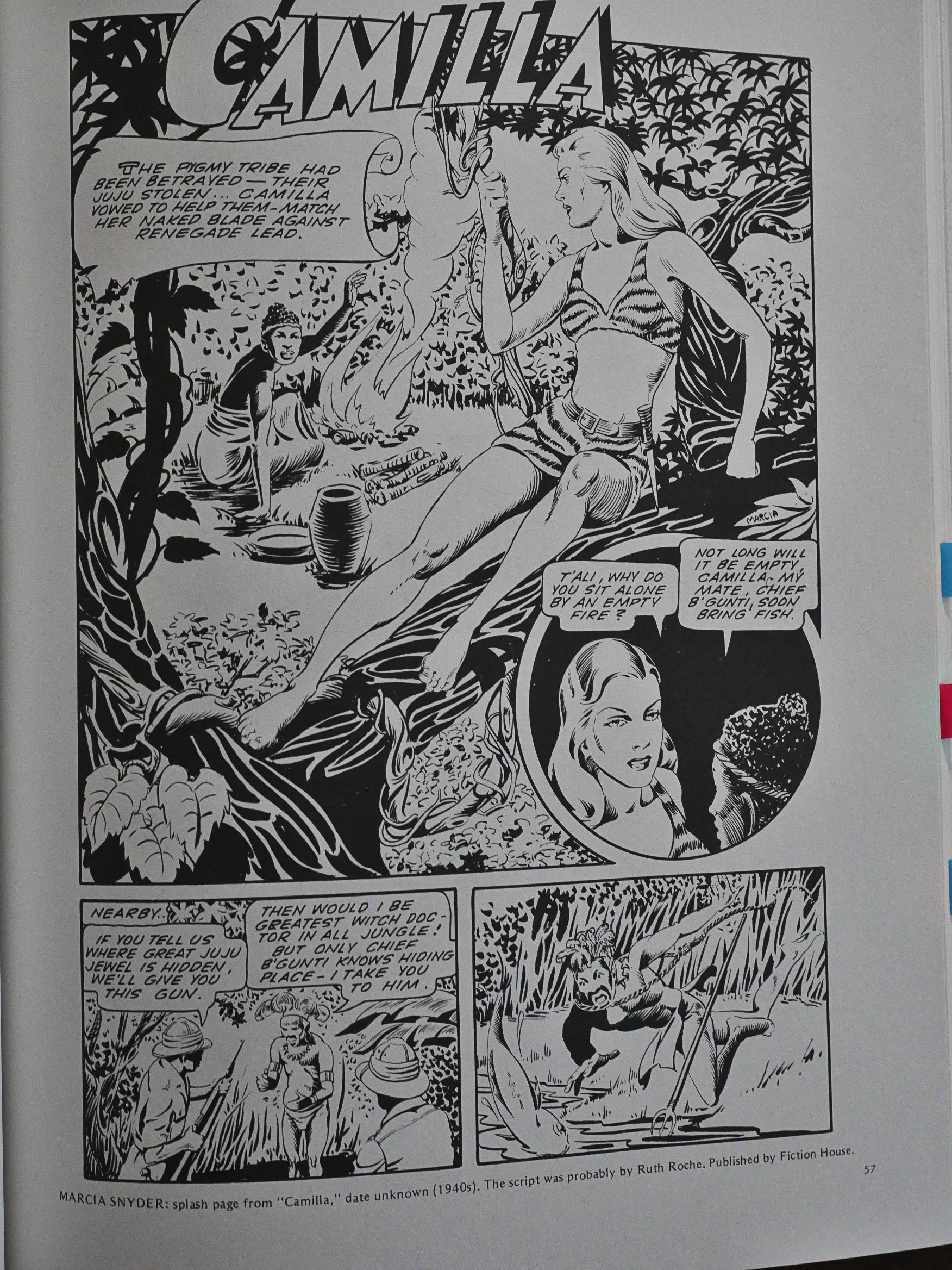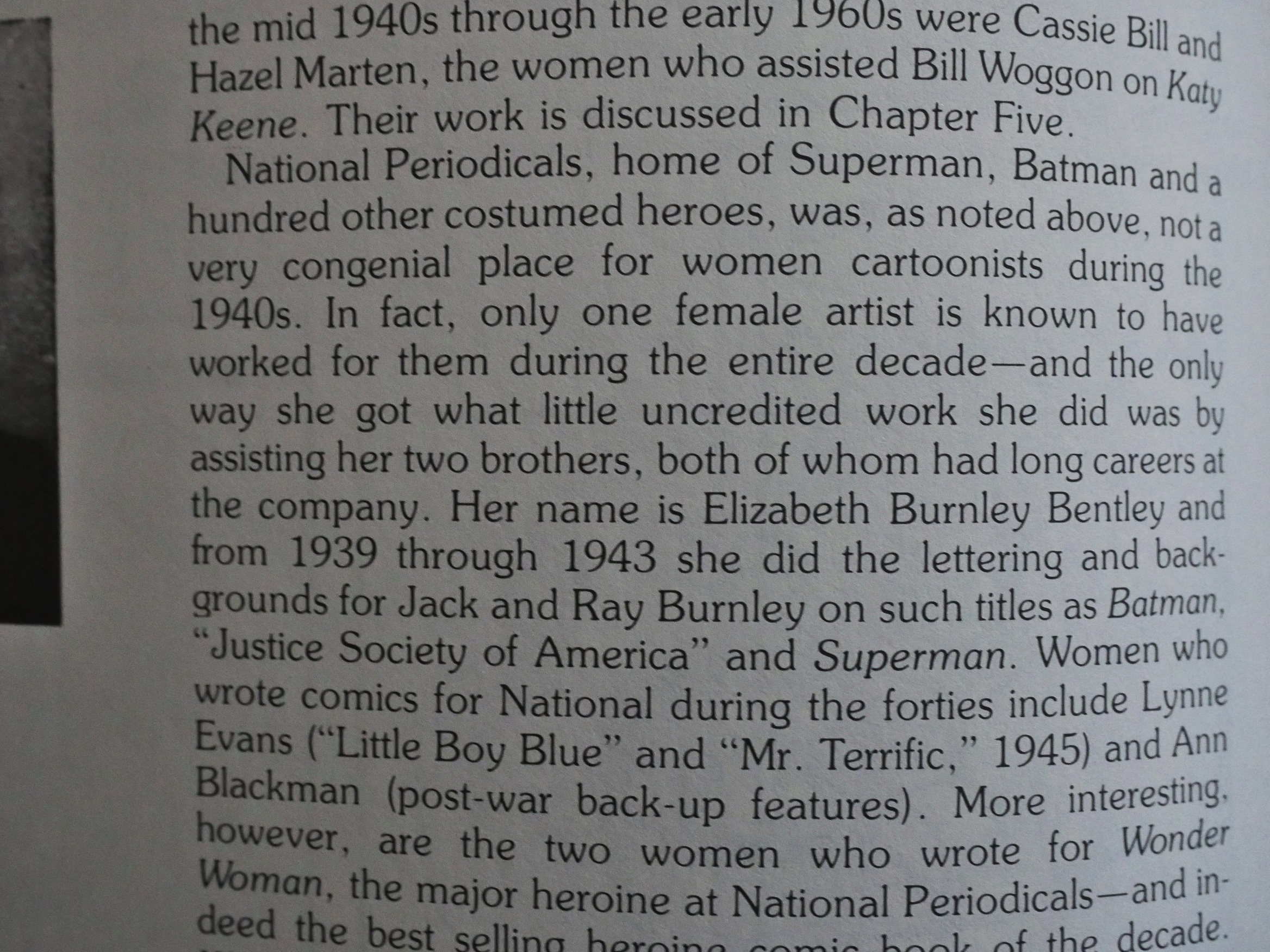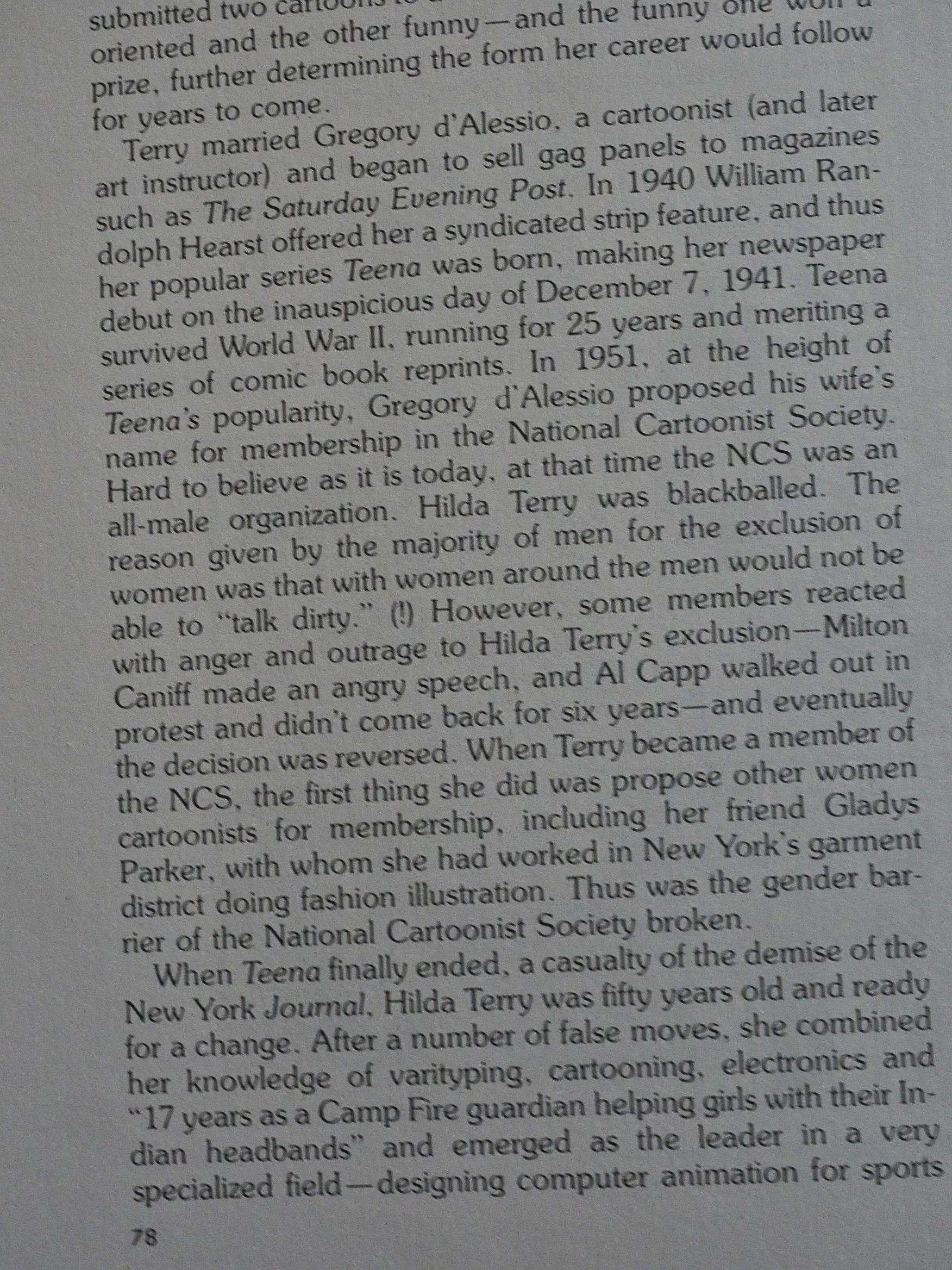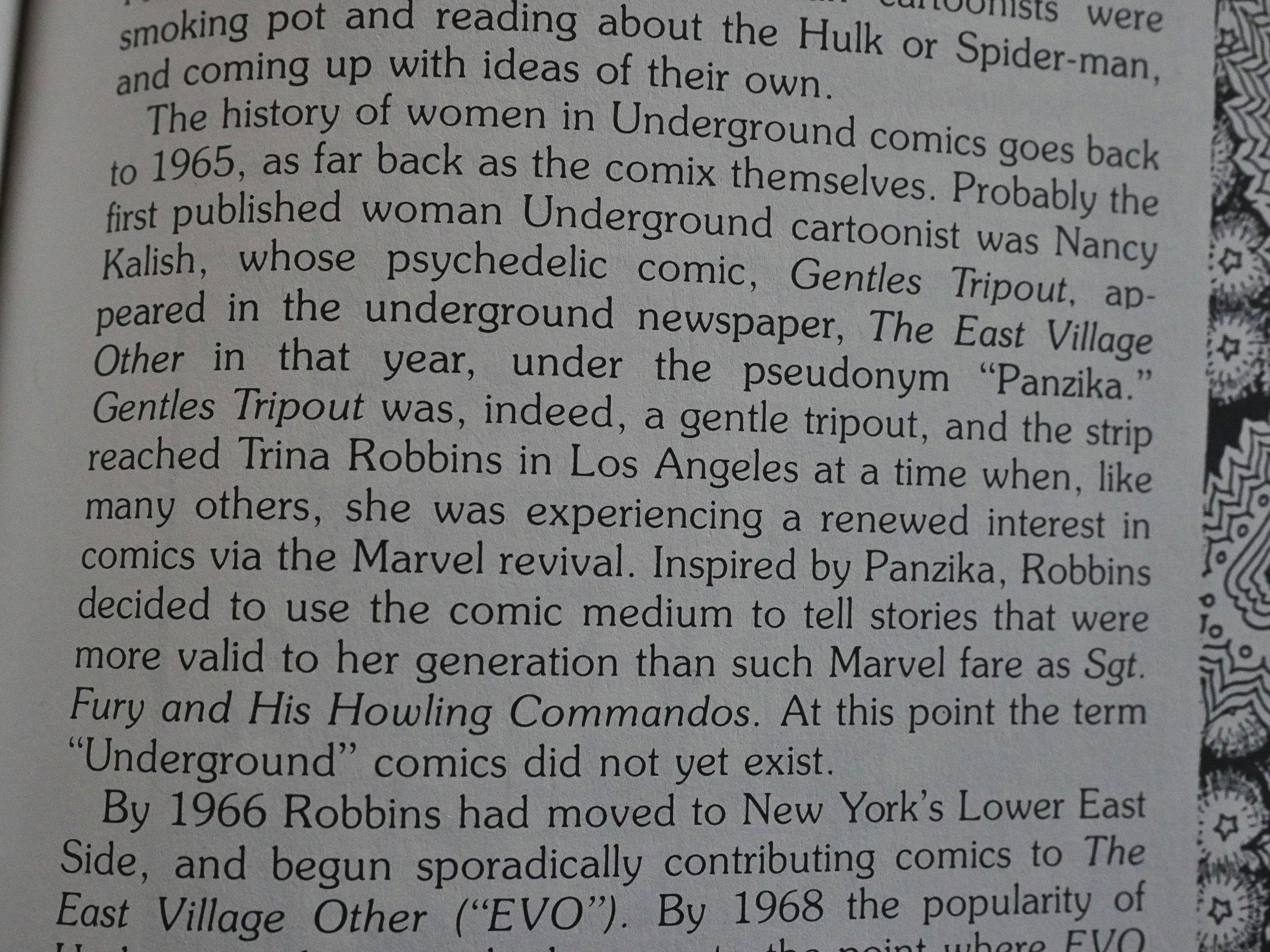Miracleman (1985) #1-24, Miracleman 3-D (1985) #1, The Miracleman Family (1988) #1-2, Miracleman: Apocrypha (1991) #1-3 by Alan Moore et al.
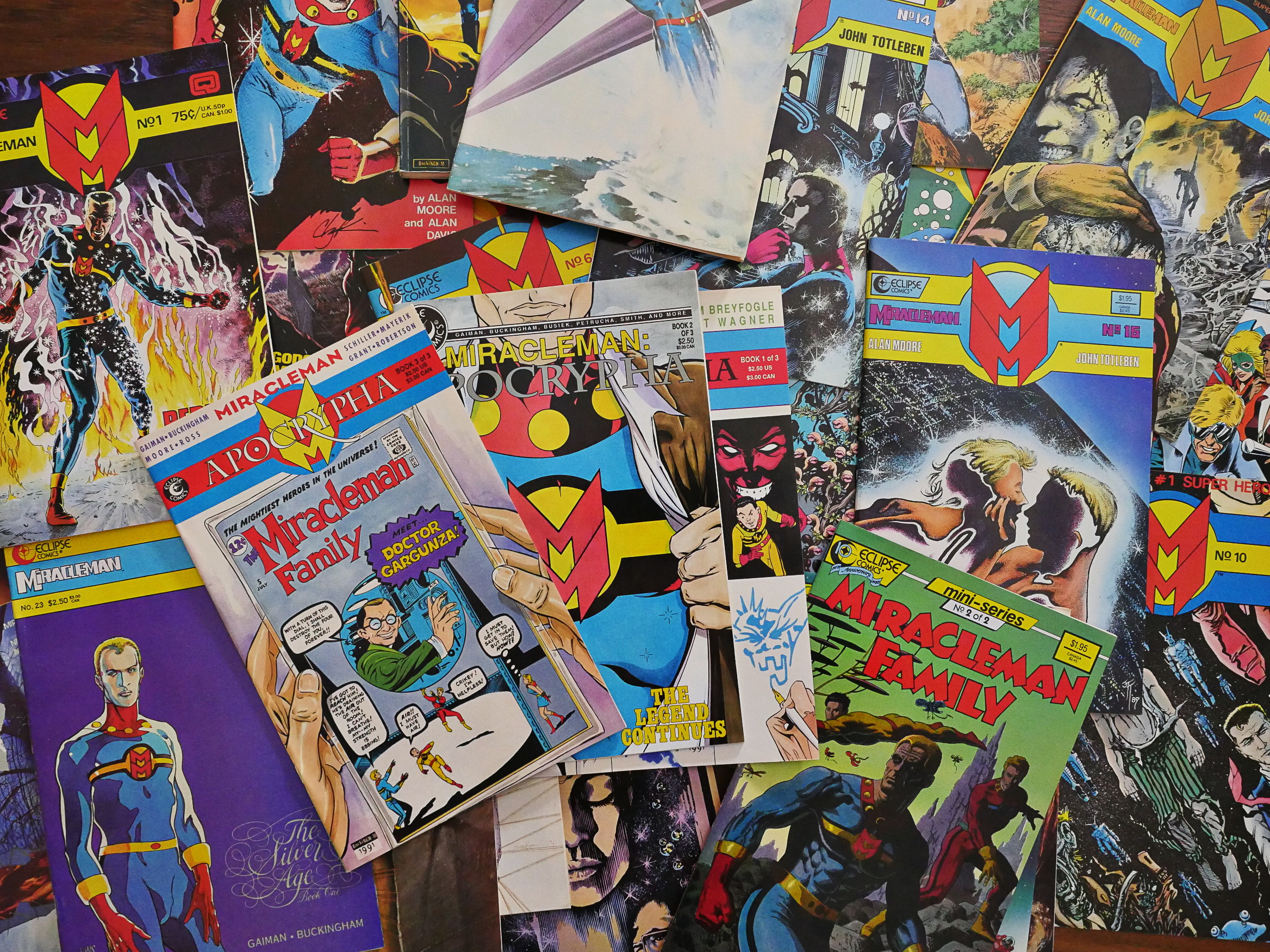
I recently read the Marvel editions of the entire Miracleman saga for some reason or other, so I’m not going to re-read it again. Sorree! Besides, it’s Eclipse’s most famous comic book, and everybody’s already read it, so there’s not that much point in me wittering on about it as well.
So this post’s going to be short, eh? Nope. Instead of writing (much) about the main Alan Moore saga, I’ll do the backmatter and the other comics that followed Miracleman. Perhaps there’s something of interest to talk about there!
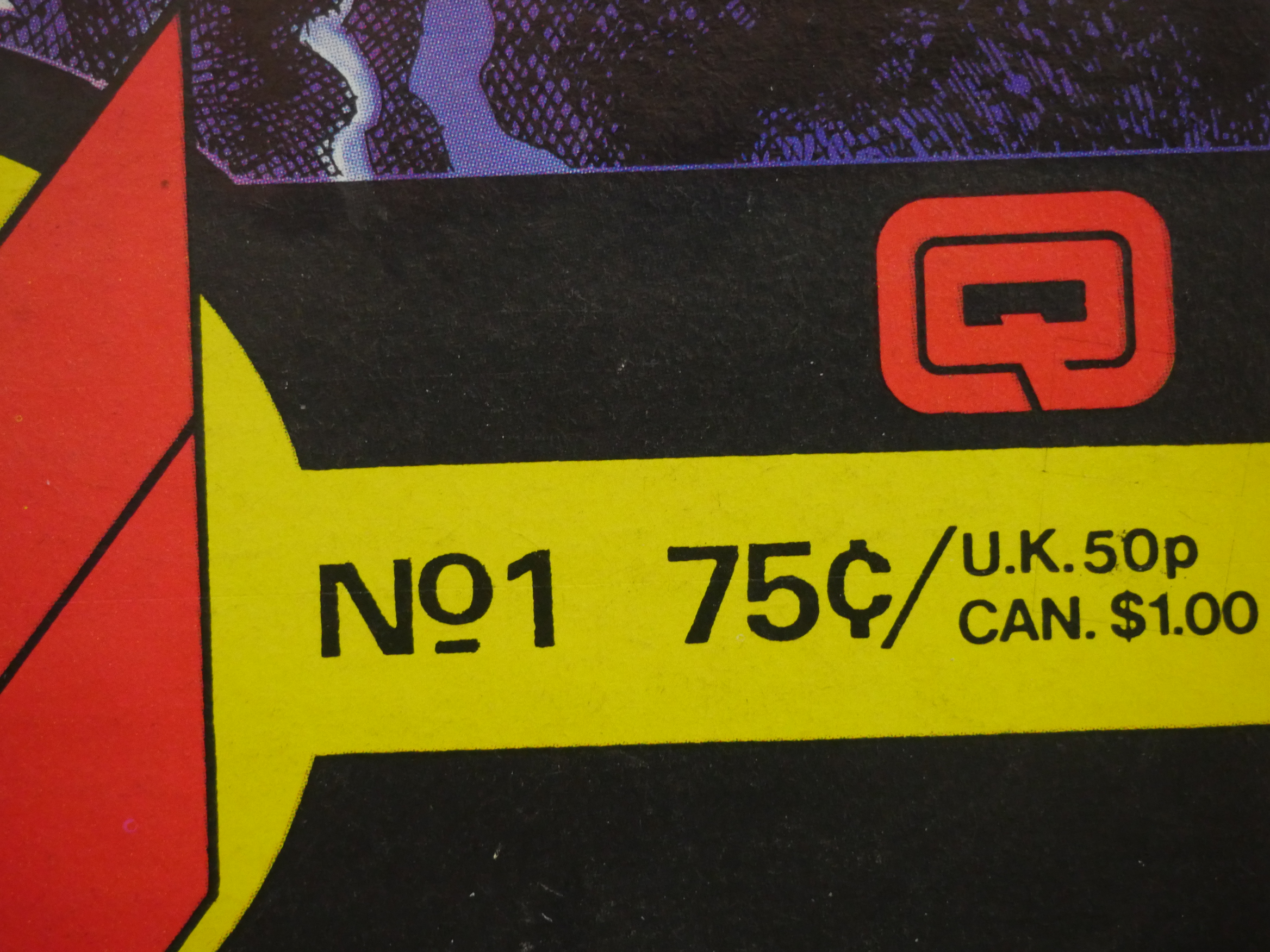
Eclipse experimented with printing their cheapest comics in Europe around the time to bring the costs down, and in addition this book was also co-published by Quality Communications. Well, they were reprints of stories that had appeared in Warrior magazine from Quality, but I think these were also published in the UK at the time, so there was… gang-pressing or something going on. I forget the details and it’s too late now to do research since I’ve already finished with this paragraph.
Eclipse inherited the American Miracleman project from Pacific Comics when Pacific went bankrupt. I have no idea whether the printing project was part of that or not…

The indicia says that it’s printed in Finland, and “NOT FOR SALE OUTSIDE NORTH AMERICA” which seems to support my conjecture, which makes research even less necessary, right?
Anyway, the European printing venture was a disaster, with many copies of Miracleman being chewed up during transport over the ocean(s). I think Miracleman #1 was the only comic that was done in Europe when all’s said and done? (New DNAgents #1 was supposed to be, too, but Eclipse pulled out after Miracleman #1.)
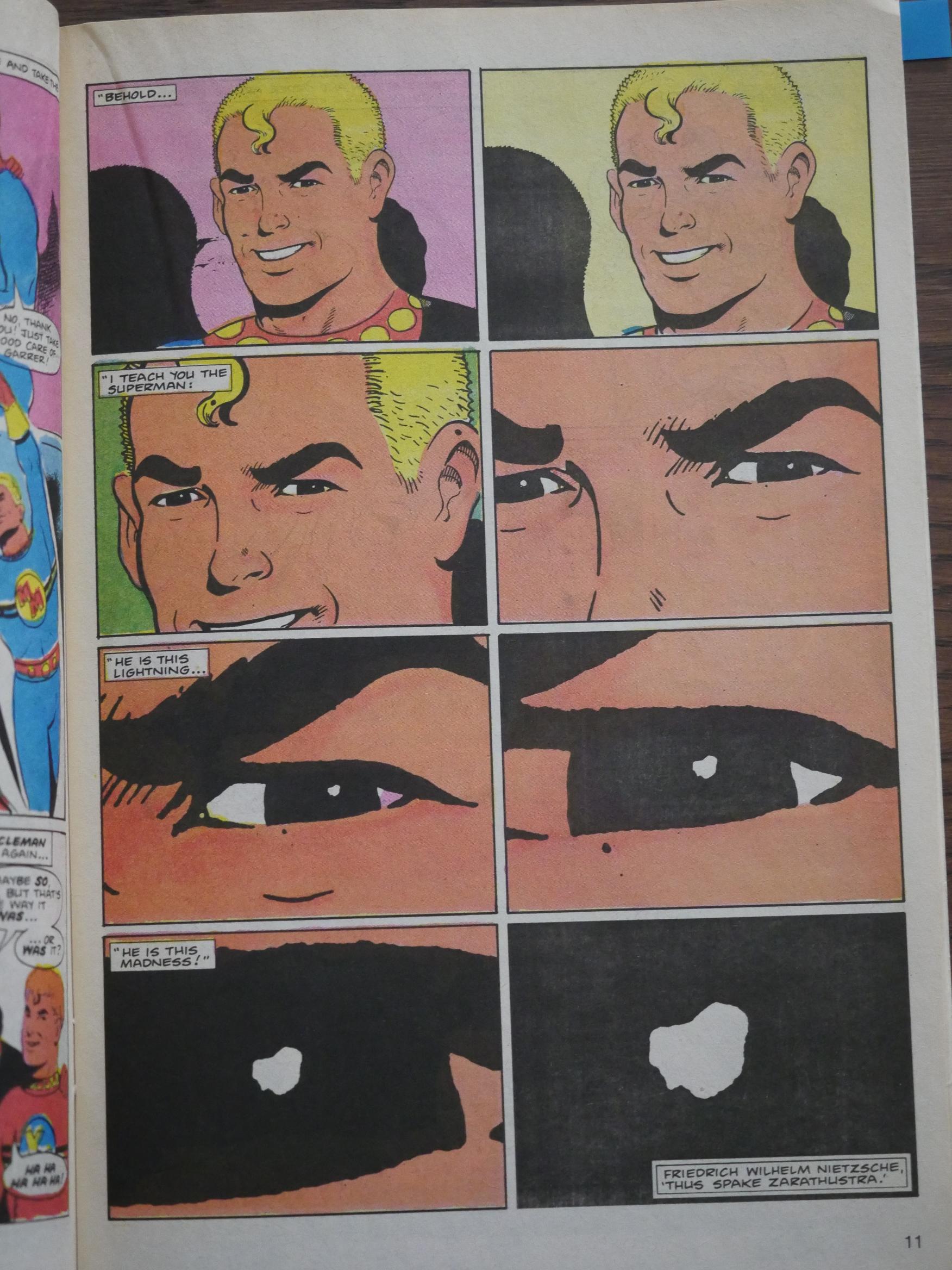
Anyway, Miracleman (or Marvelman as he was called in the UK) was another one of the many young children’s comics Alan Moore decided to deconstruct and turn into kinda gruesome comics for slightly older children, here represented by the reader looking deeeeply into Miracleman’s eyes. What horrors lurk there!
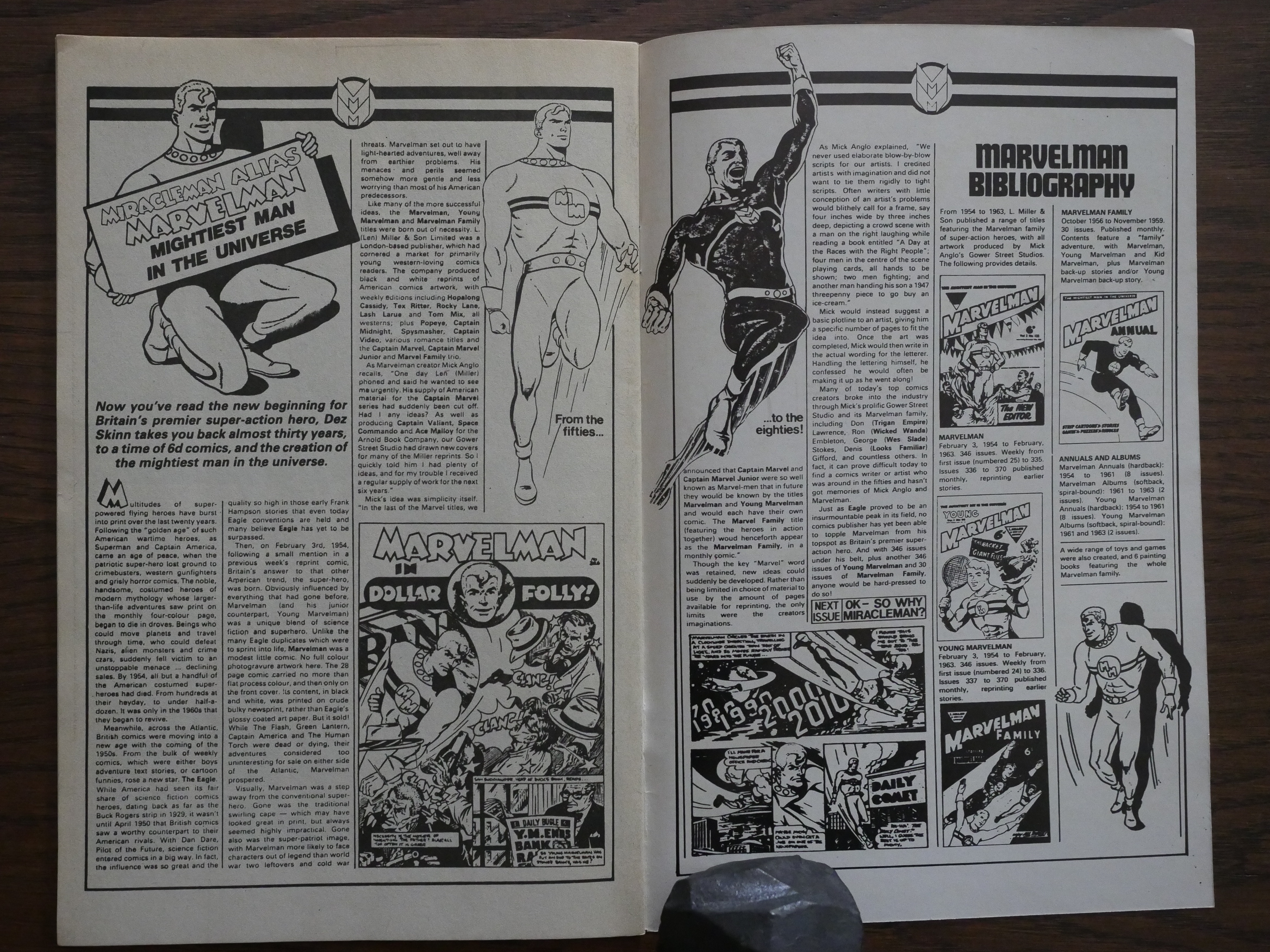
Dez Skinn (who had bought the rights, he thought, to Marvelman) writes an introduction. The story of who owned what turned out to be not as straightforward as that, which is why Miracleman lay fallow for 20 years after Eclipse ceased publication.
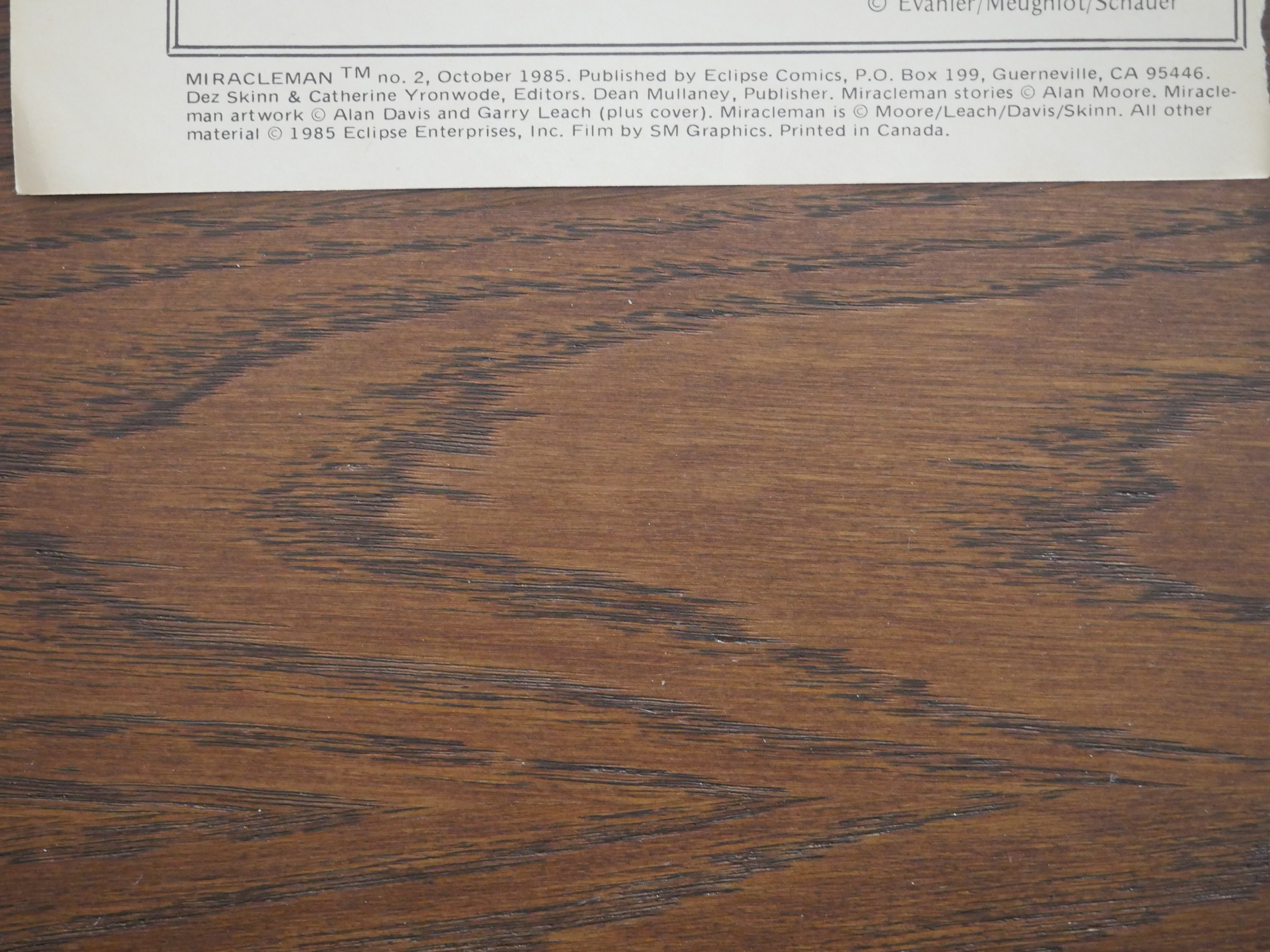
#2 moves to Canada.
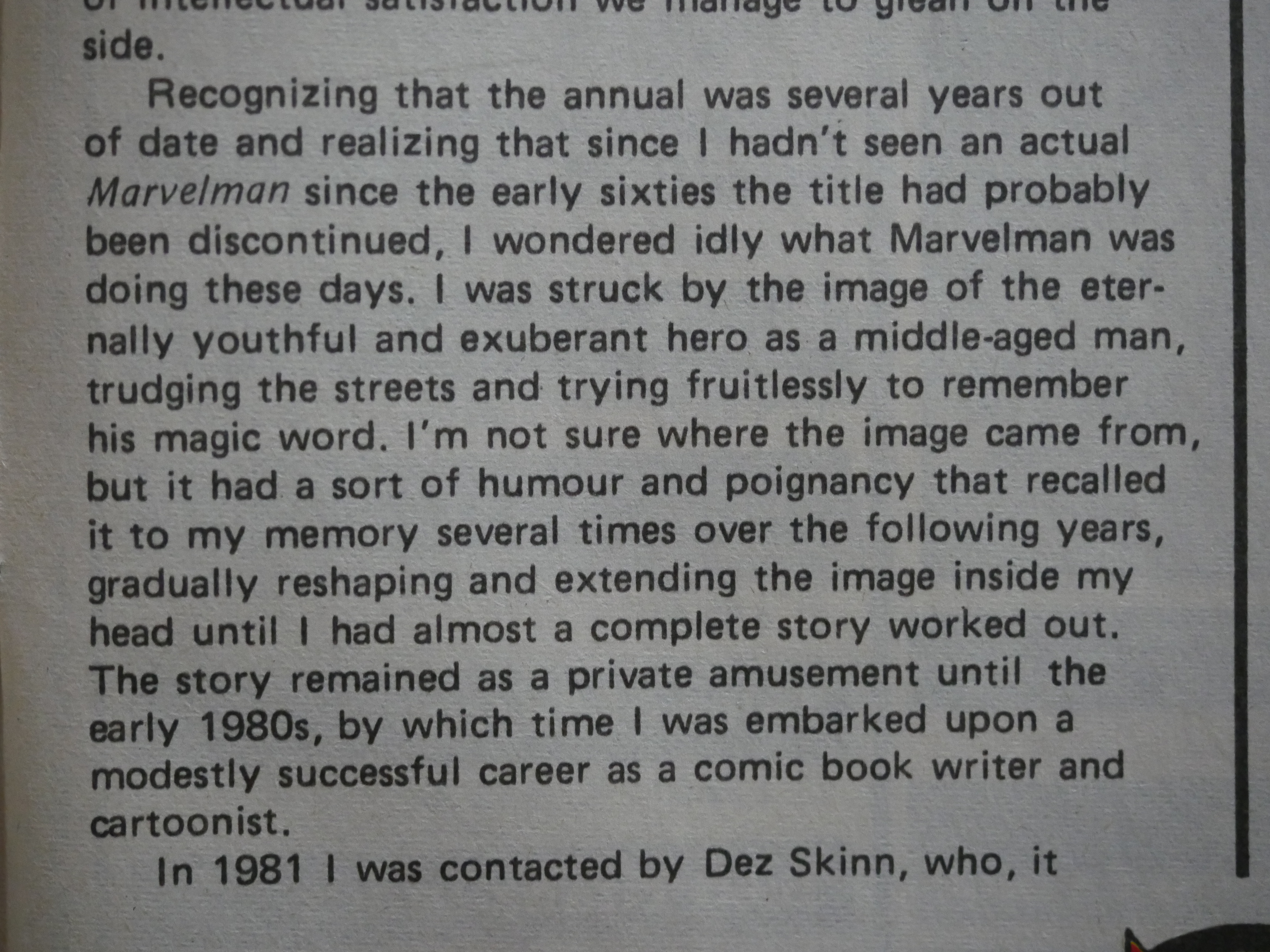
Alan Moore is strangely absent from the editorial pages. The letters pages are all done by an ever-shifting number of Eclipse editors, and this is Alan Moore only thing he contributed outside the main storyline. It rather leaves you the impression that he’s only reluctantly participating in this venture.
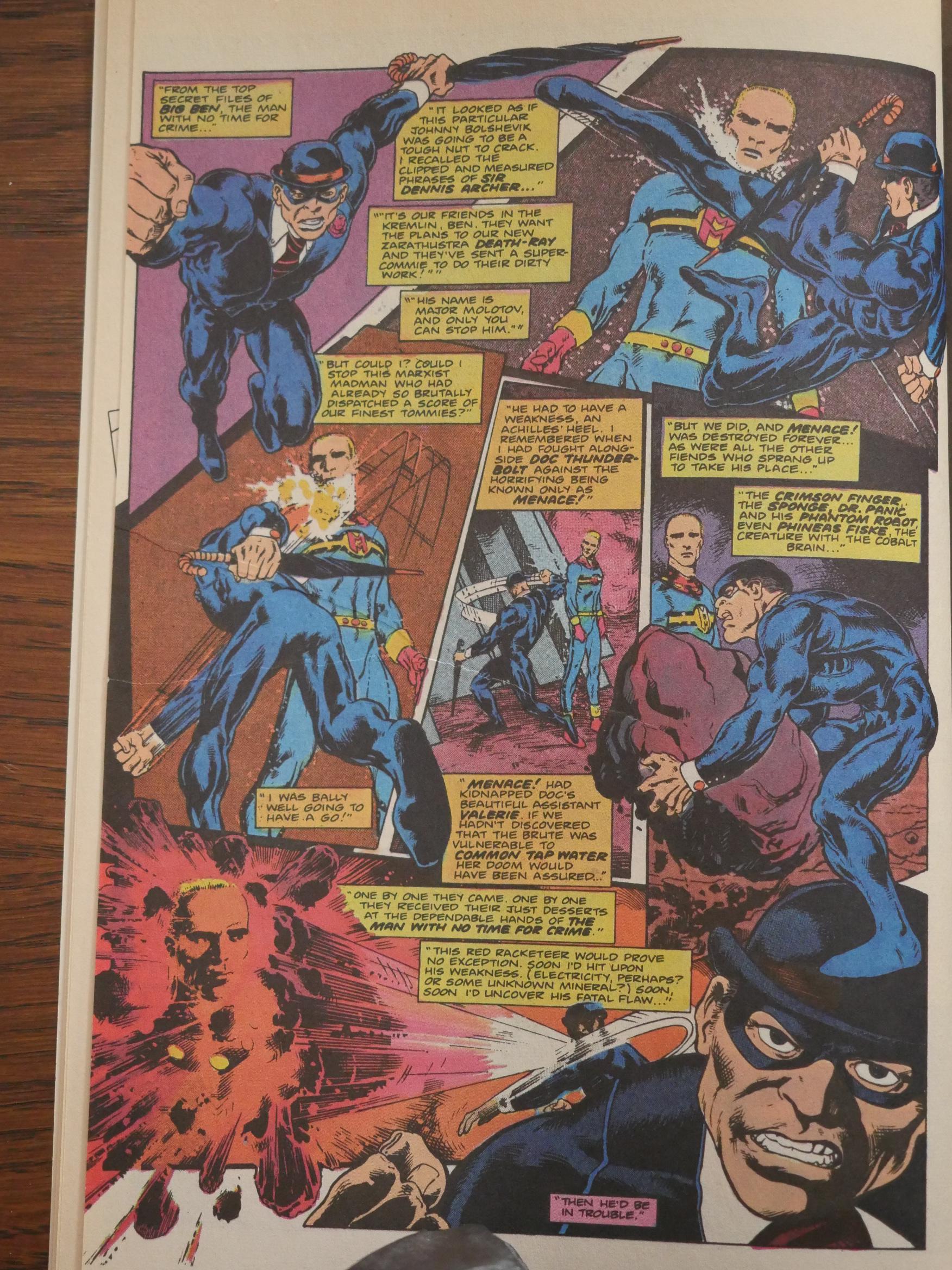
The series was originally printed in black-and-white, and the results of the colouring job often leaves you with a rather muddled and confused impression of what’s going on.
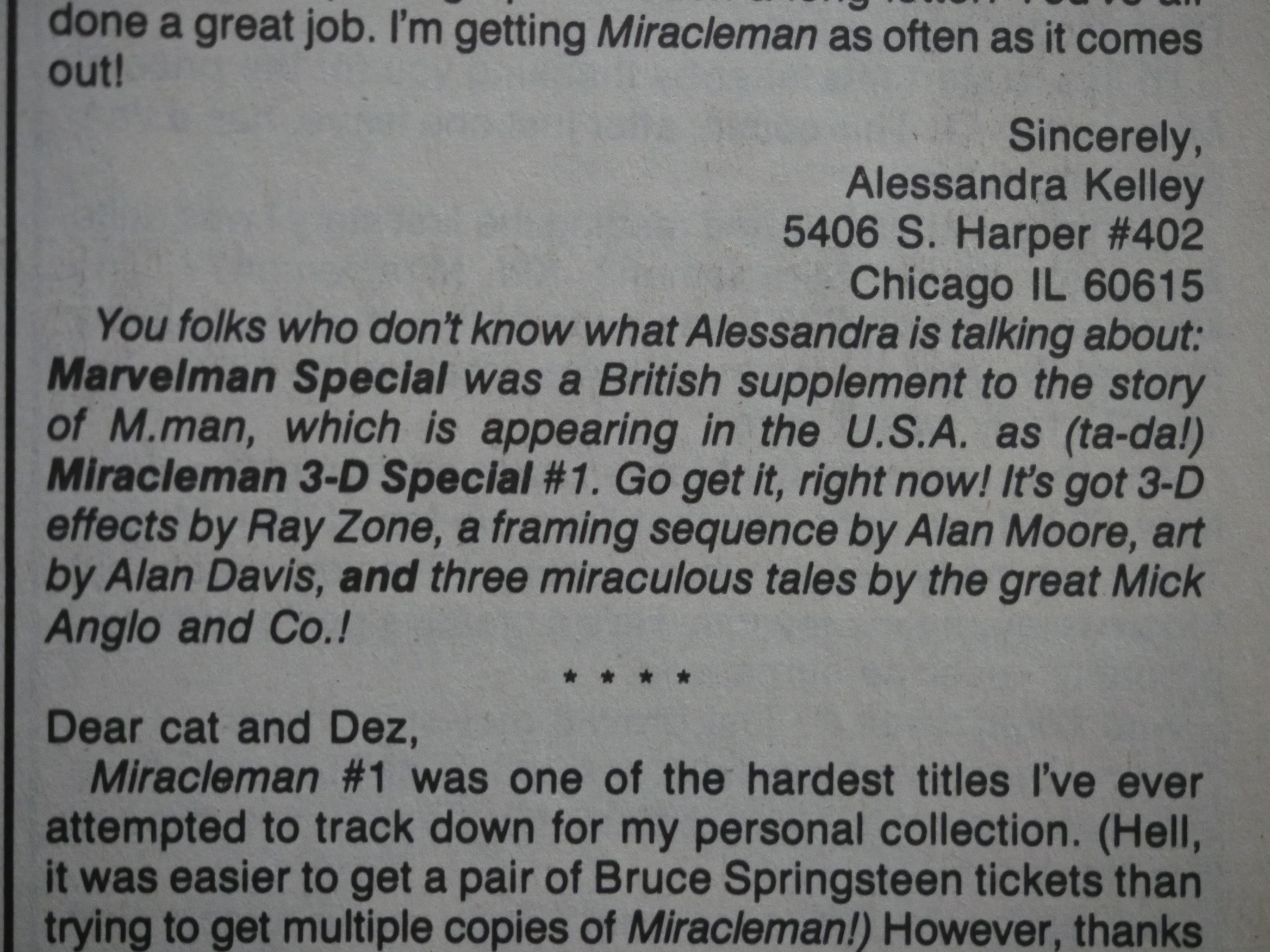
Right, so Quality published a Marvelman Special, which was also printed in the US, but in 3D?
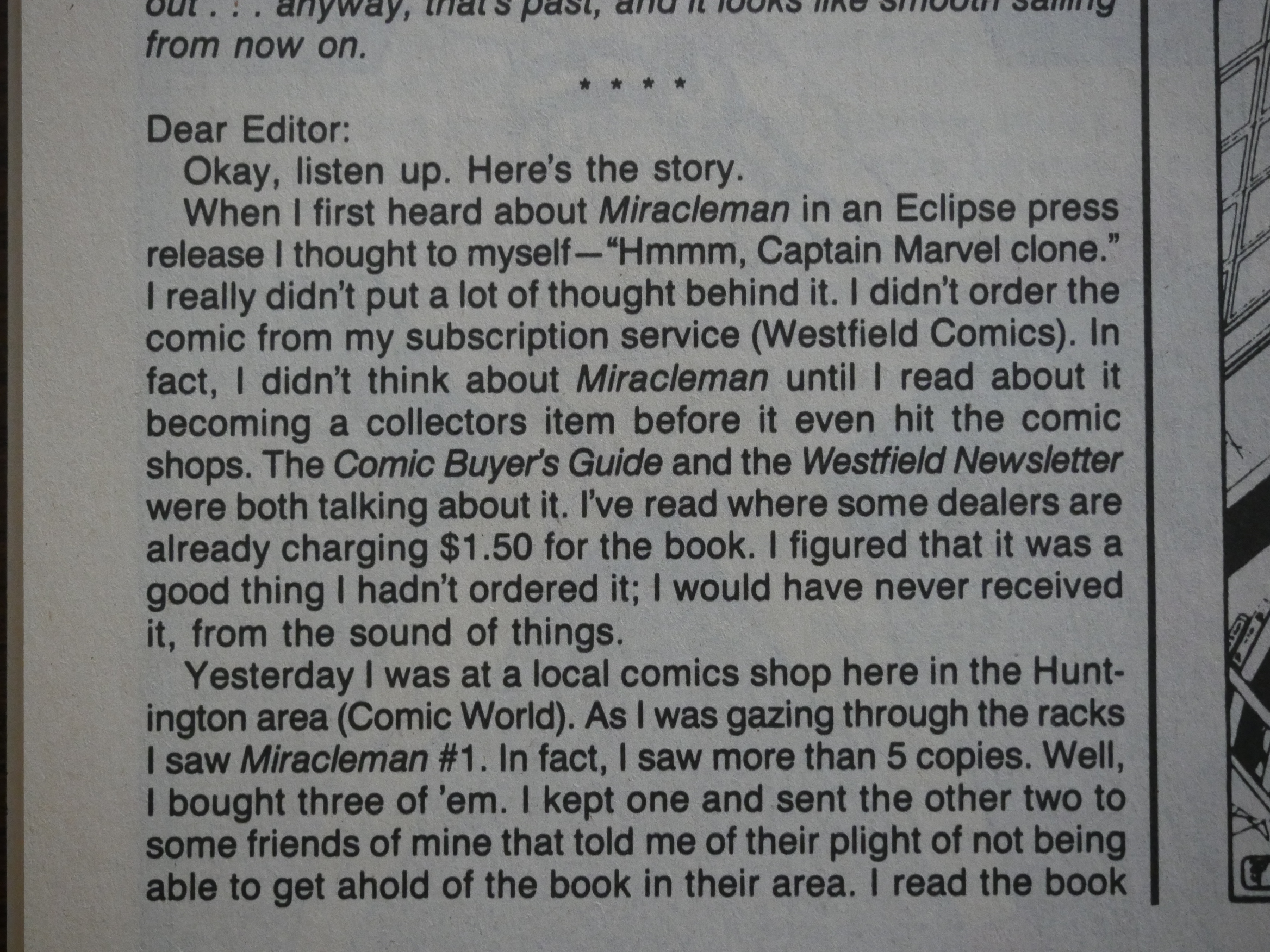
After the shipping problems, Miracleman #1 became the subject of speculator frenzy, but apparently not extremely rabid. “some dealers are already charging $1.50 for the book.” Where’s mah pearls!
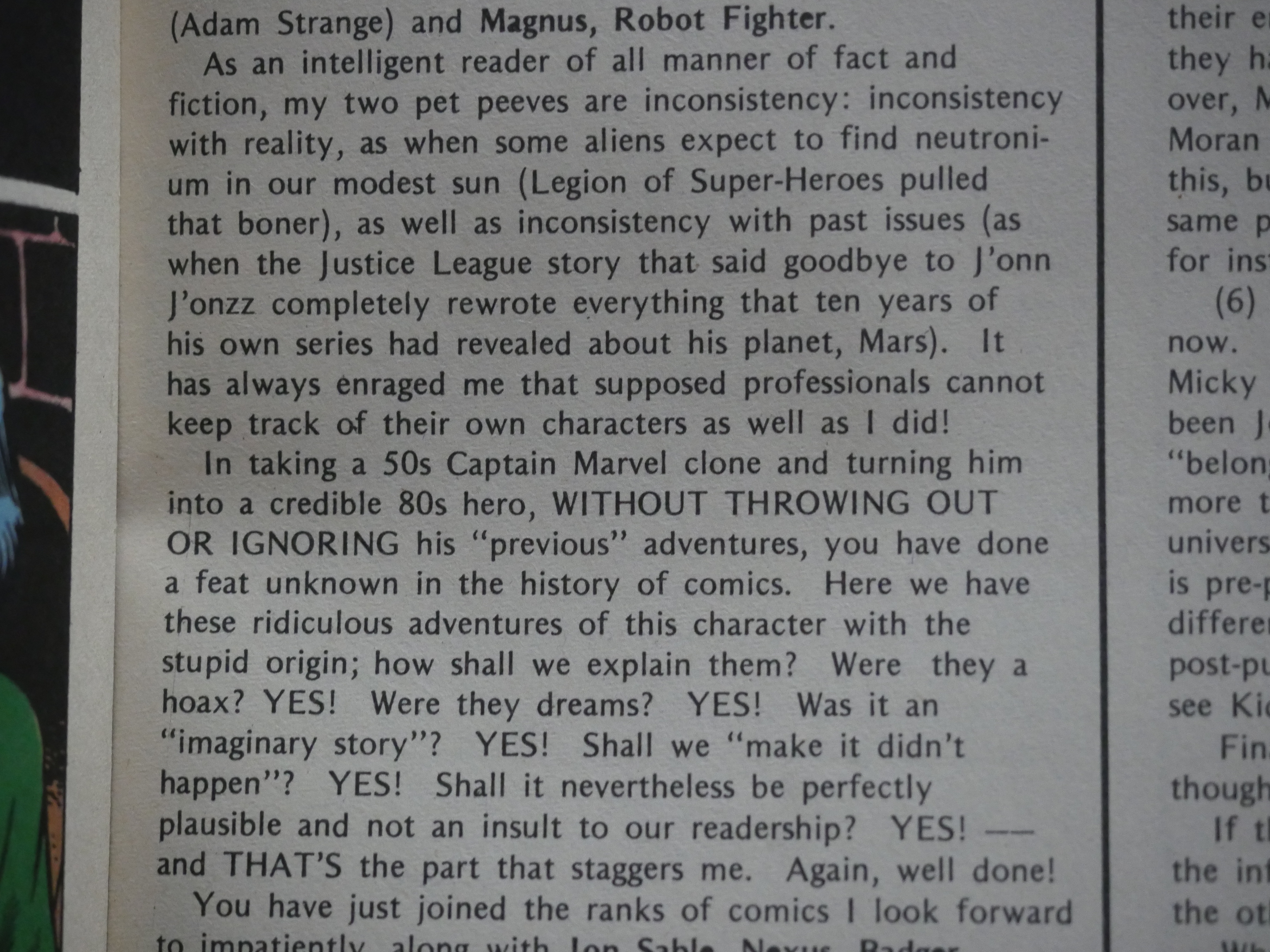
The letter writers are a rather odd mixture of super-hero fans and more indie-minded people, but there you have somebody complaining about J’onn J’onzz retrofitted origin story to compliment Alan Moore on his more elegant way of doing it.
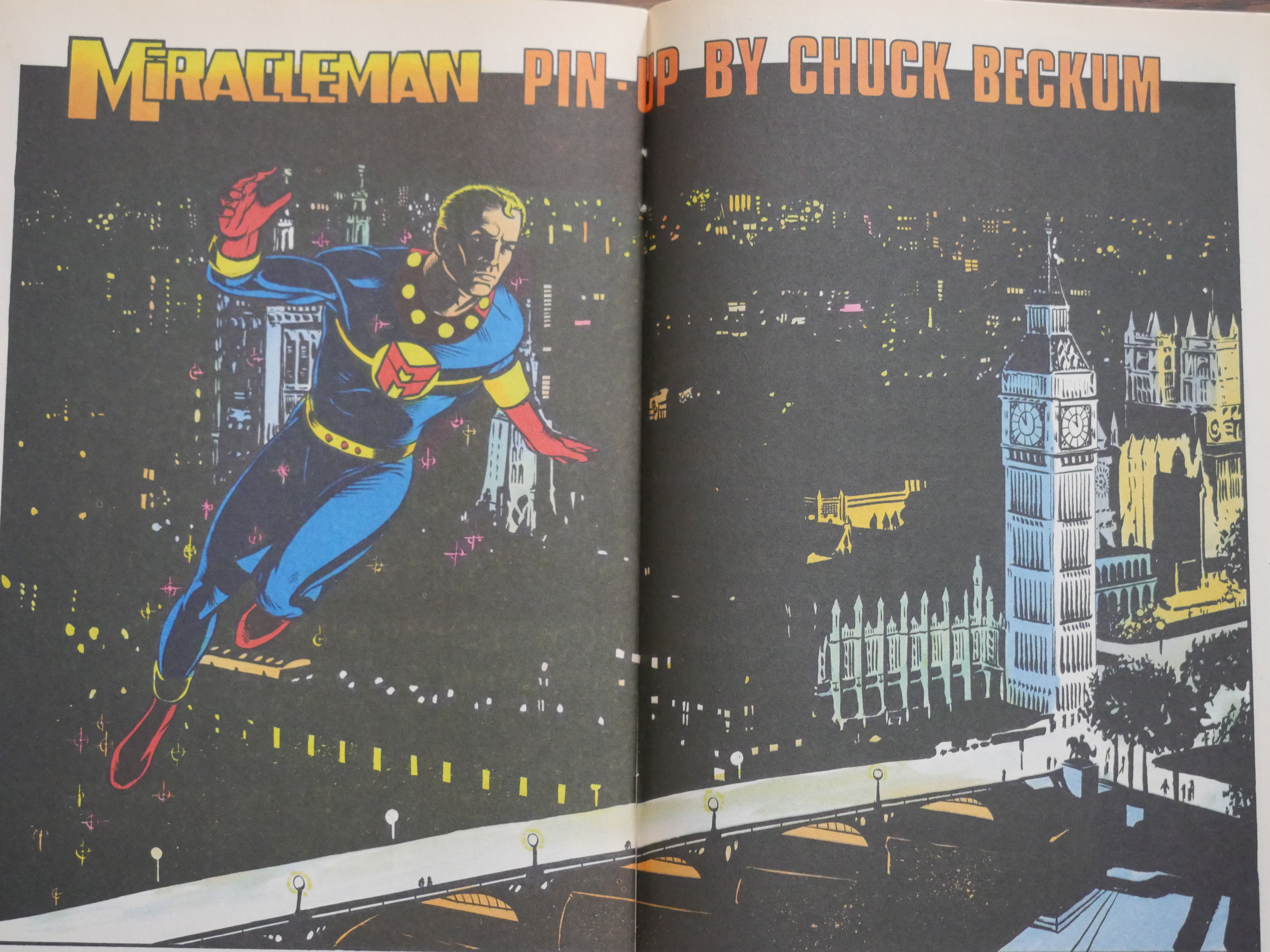
After six issues, Eclipse ran out of reprints and Chuck Beckum was supposed to continue illustrating Miracleman. I read the series as it was published back in the 80s, and my recollection was that Beckum did a whole number of issues, and I was not looking forward to sifting through those issues…
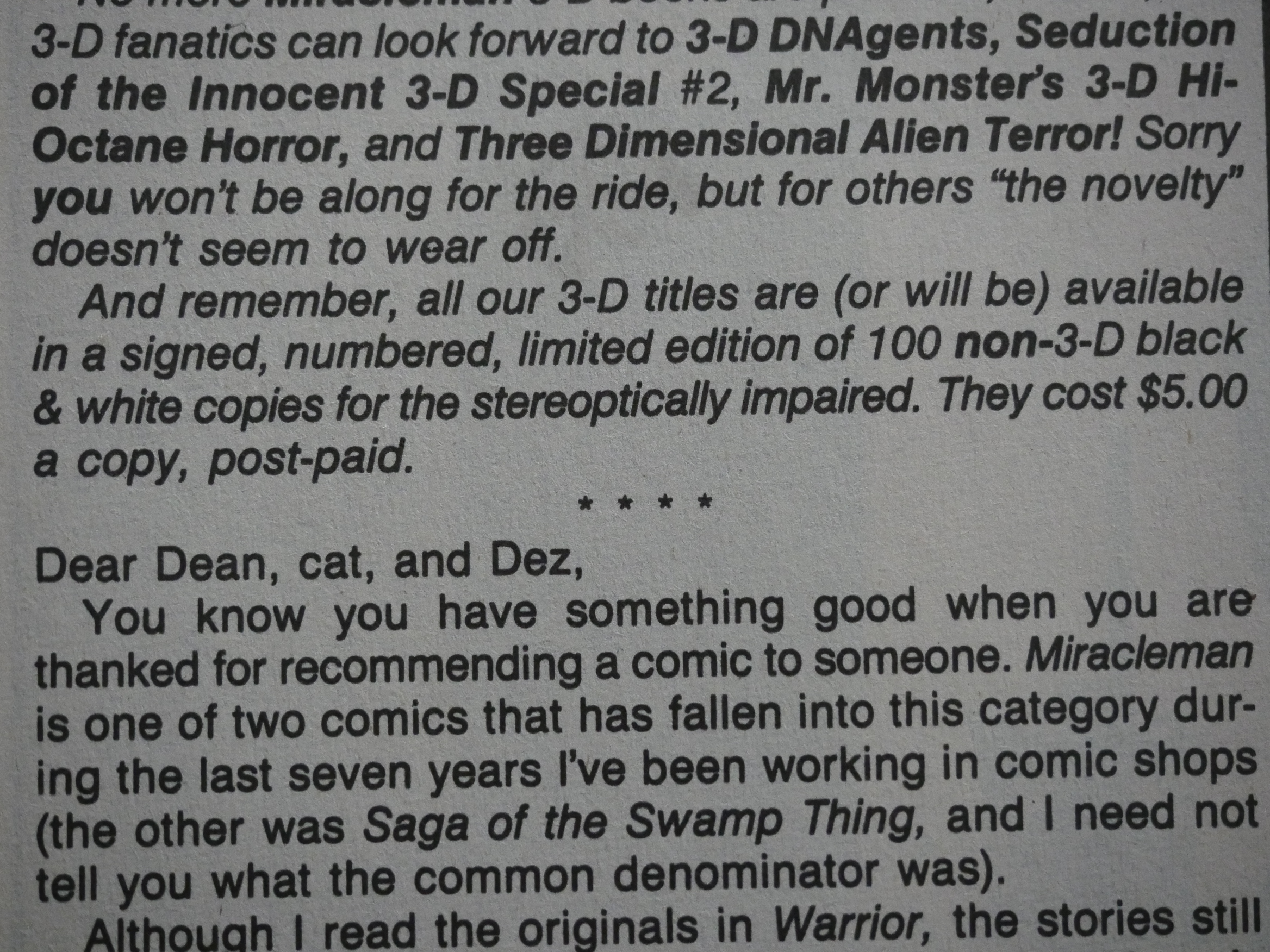
Huh. Eclipse published all their 3D comics in black-and-white editions, too? Signed and limited to 100 copies? I’ve never heard or seen of those: If they exist they must be some of the rarest alternative comics of the 80s…
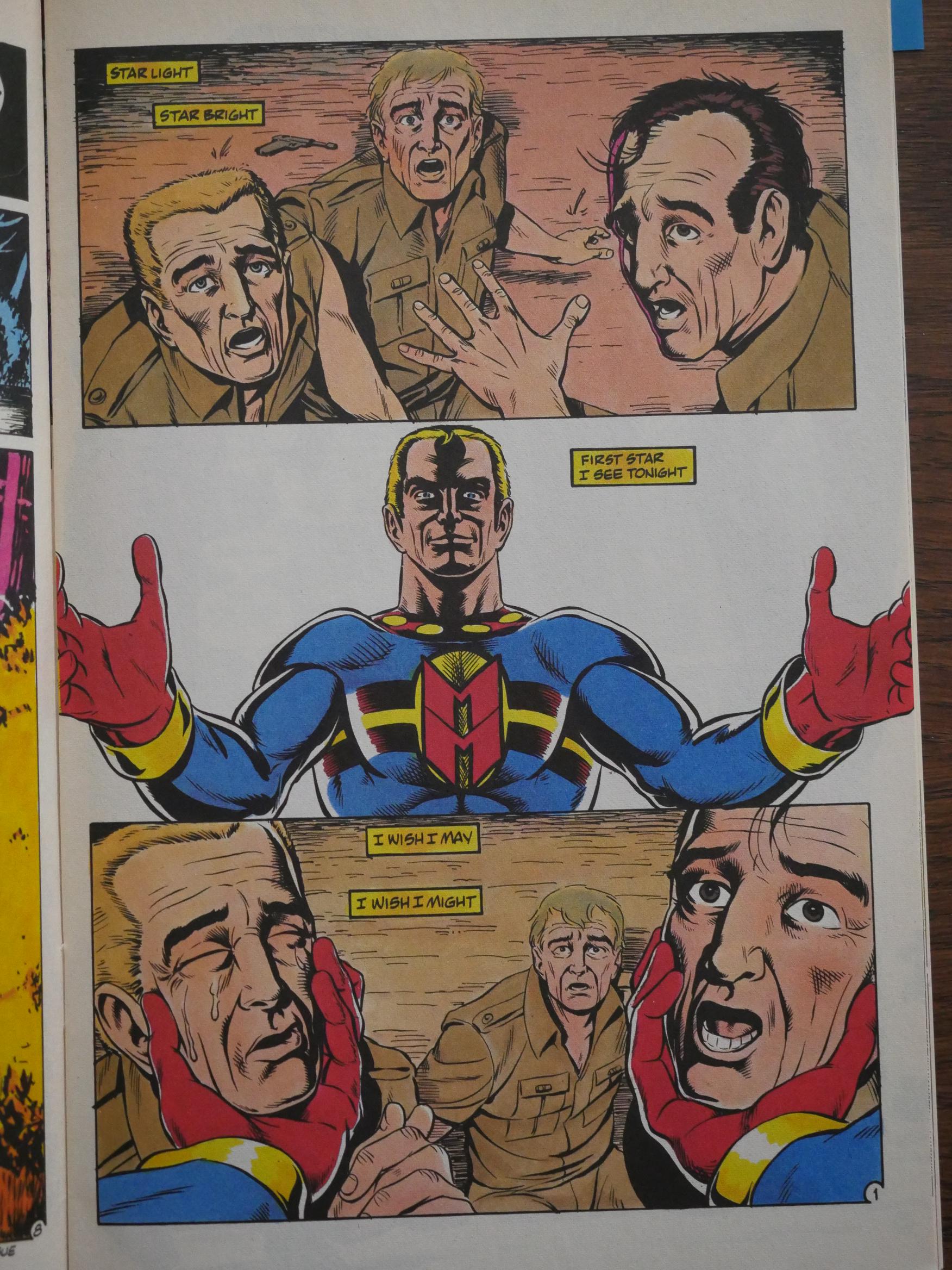
Yes, that’s Chuck Beckum all right. He’s not the most inspiring of artists, in my opinion.
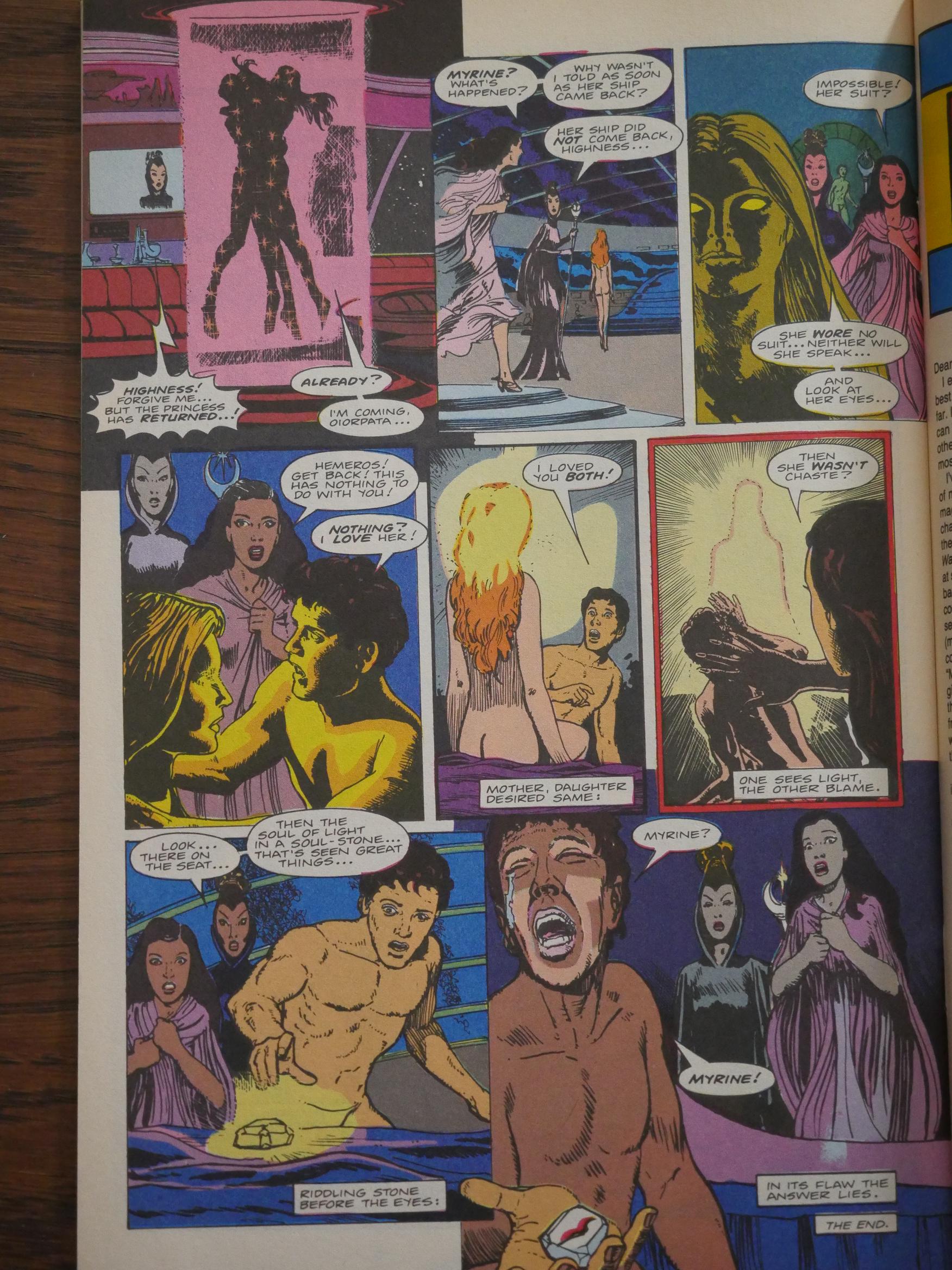
With this issue, Eclipse started running backup features of very variable quality to pad out the pages. Here’s Steve Moore and John Ridgway .
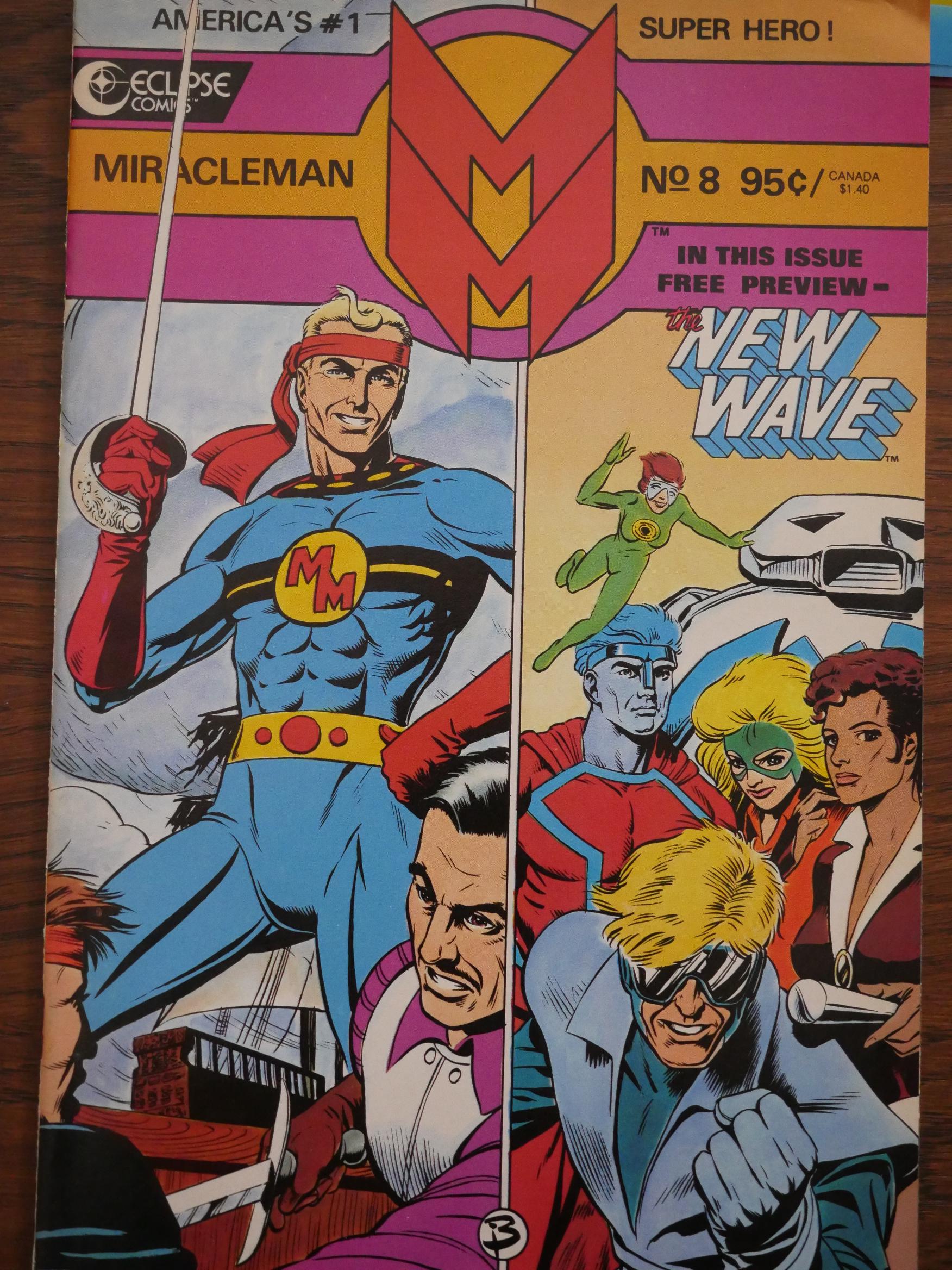
By this point, the Quality logo has gone, and we get a sudden fill-in issue:
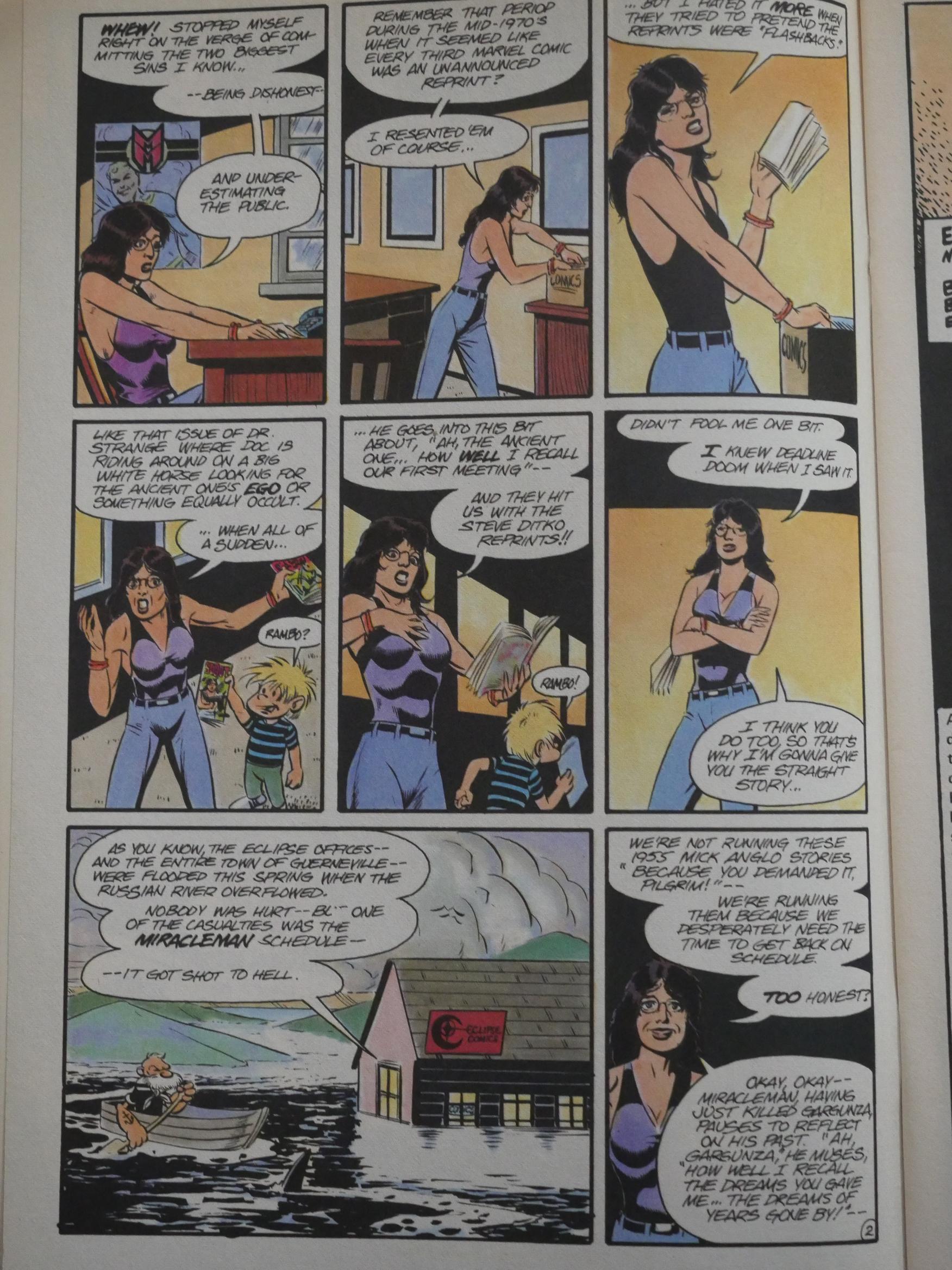
Editor yronwode explains that they had to do a fill-in issue because their offices had been flooded. Which sounds… odd… since they didn’t do this with any of their other comics around this time.
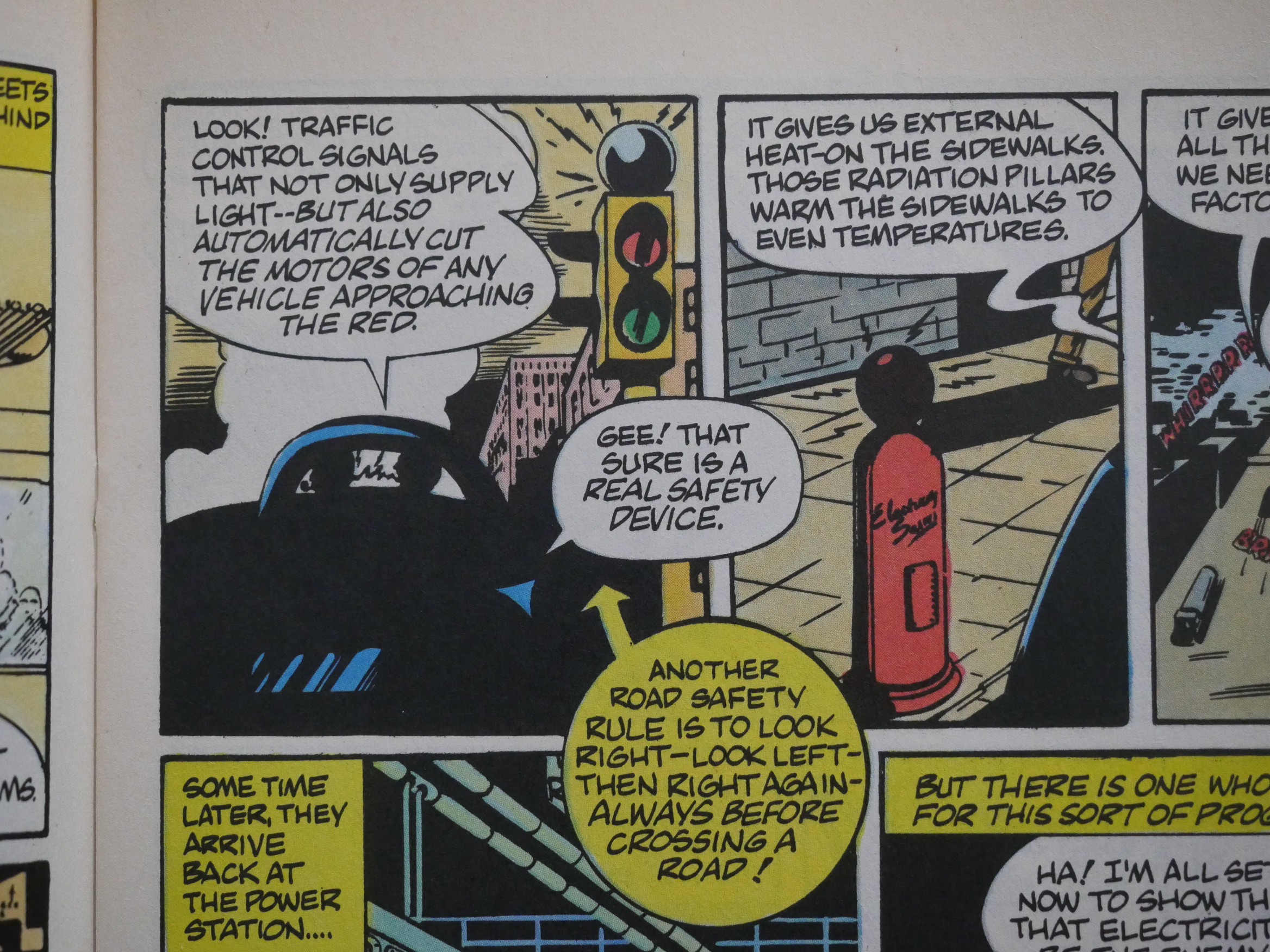
In any case, we get some old Mick Anglo Marvelman stories from the 50s and 60s, and they’re kinda fun. I mean, they’re not good or anything, but the extreme mundanity mixed with the sci-fi trappings is amusing.
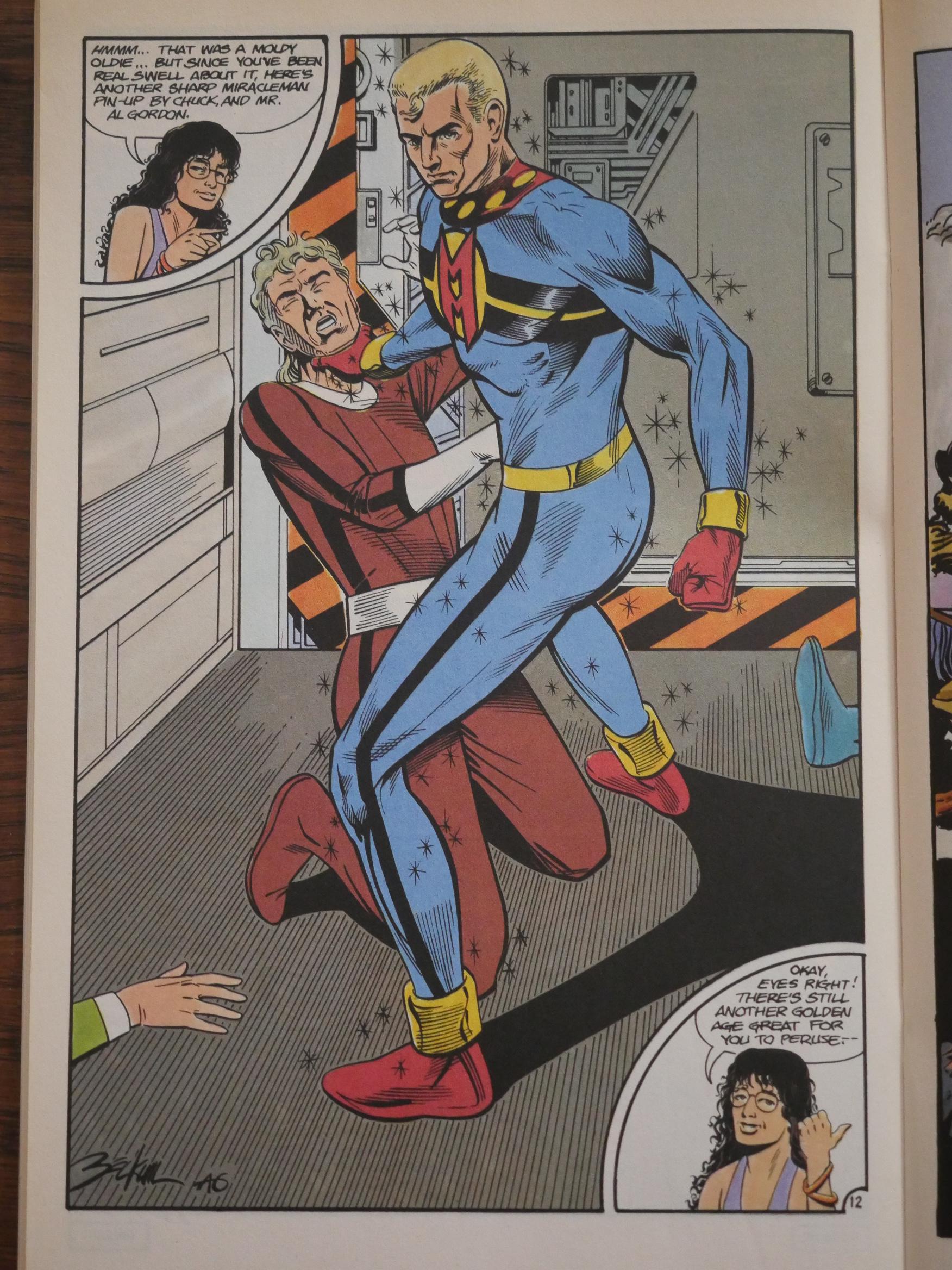
And we get a Chuck Beckum pin-up.
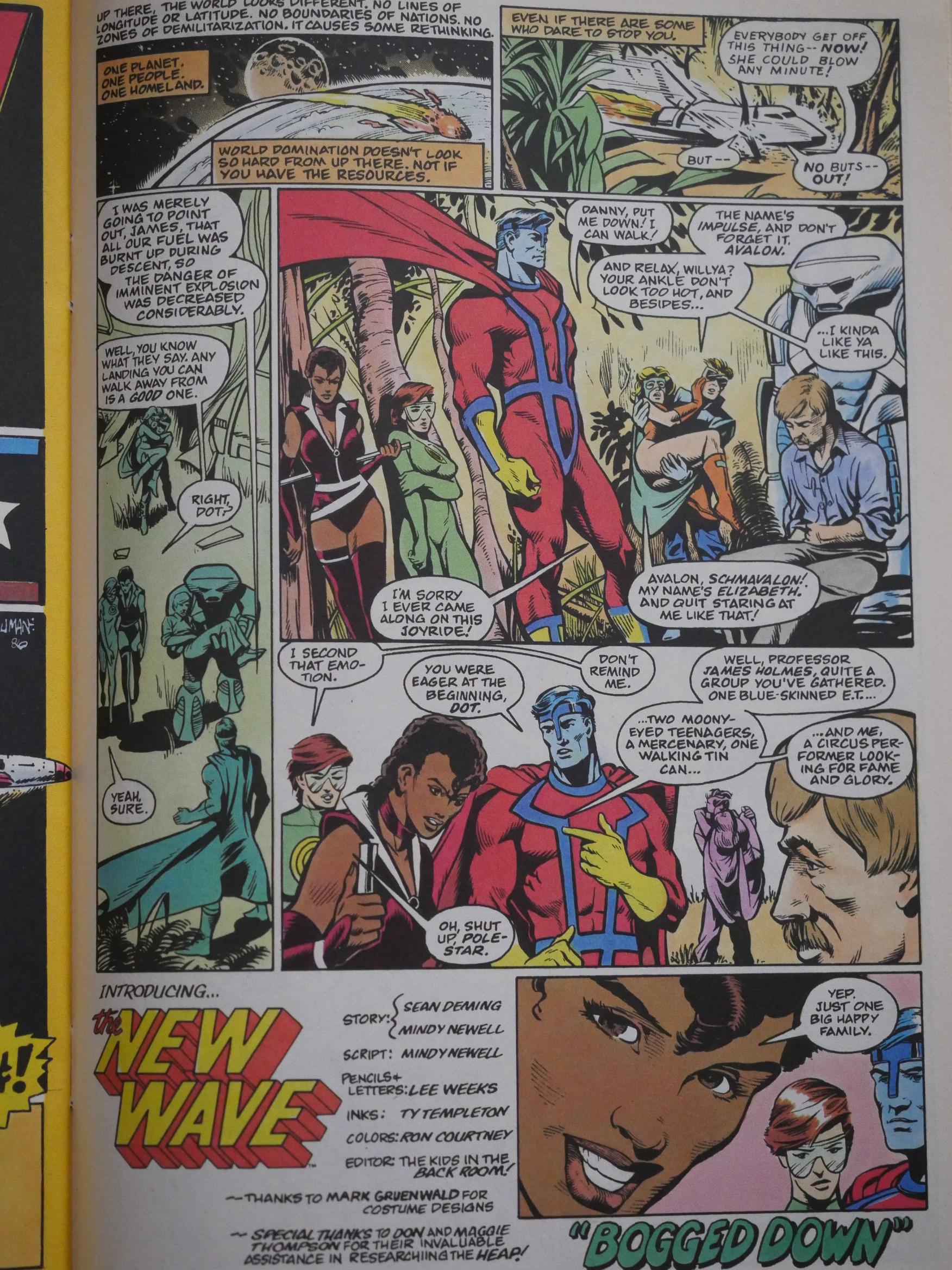
And to pad out the fill-in issue, we get introduced to a new, dire-looking super-hero book called The New Wave. It’s a very confused little story, what with them all bickering like a parody of a bickering super-hero group comic.
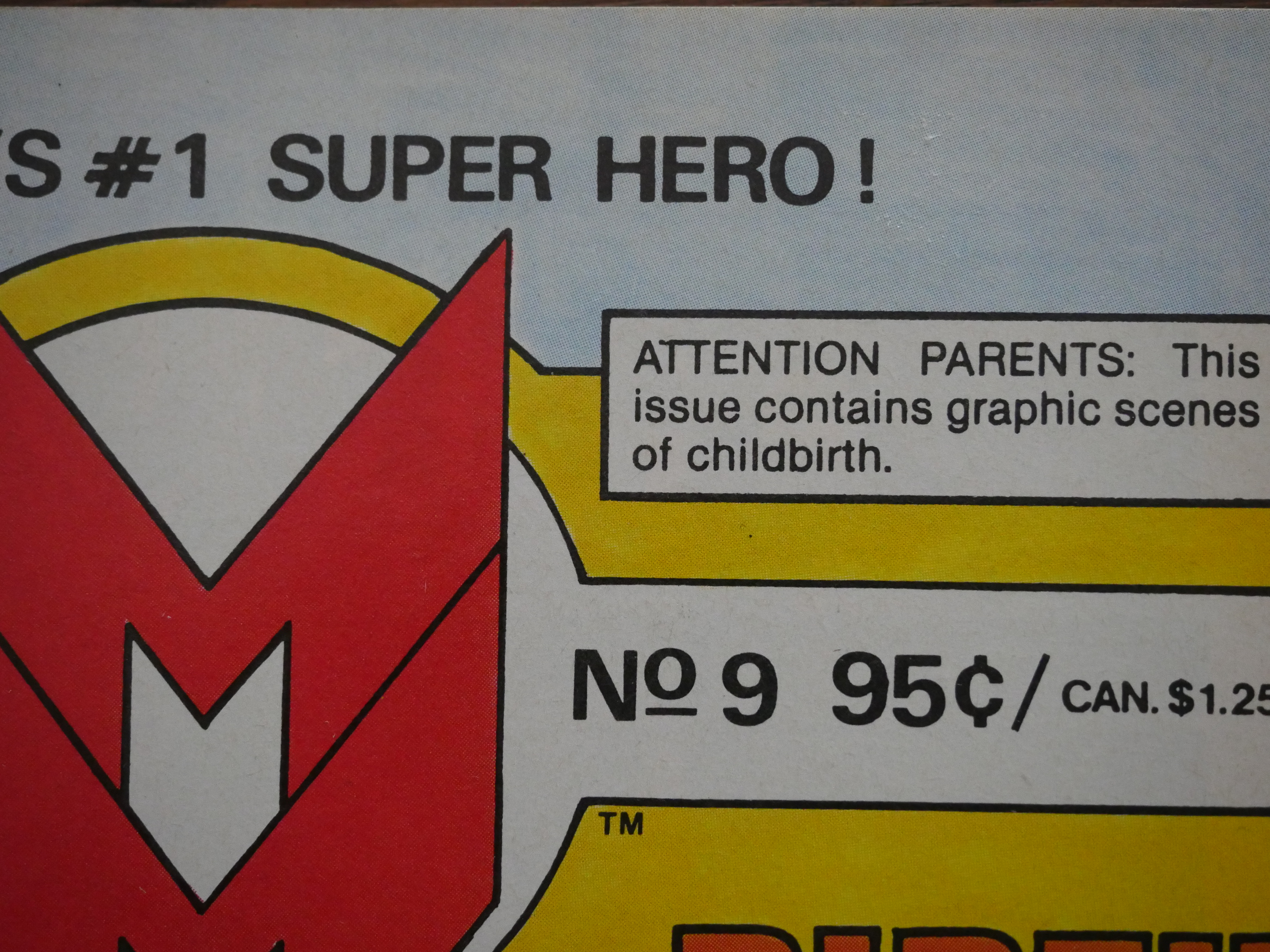
Ah, yes, this was very controversial. It’s Eclipse’s third comic that has a woman giving birth, but this time it was more high-profile. After all, Miracleman’s America’s #1 Super Hero (!).
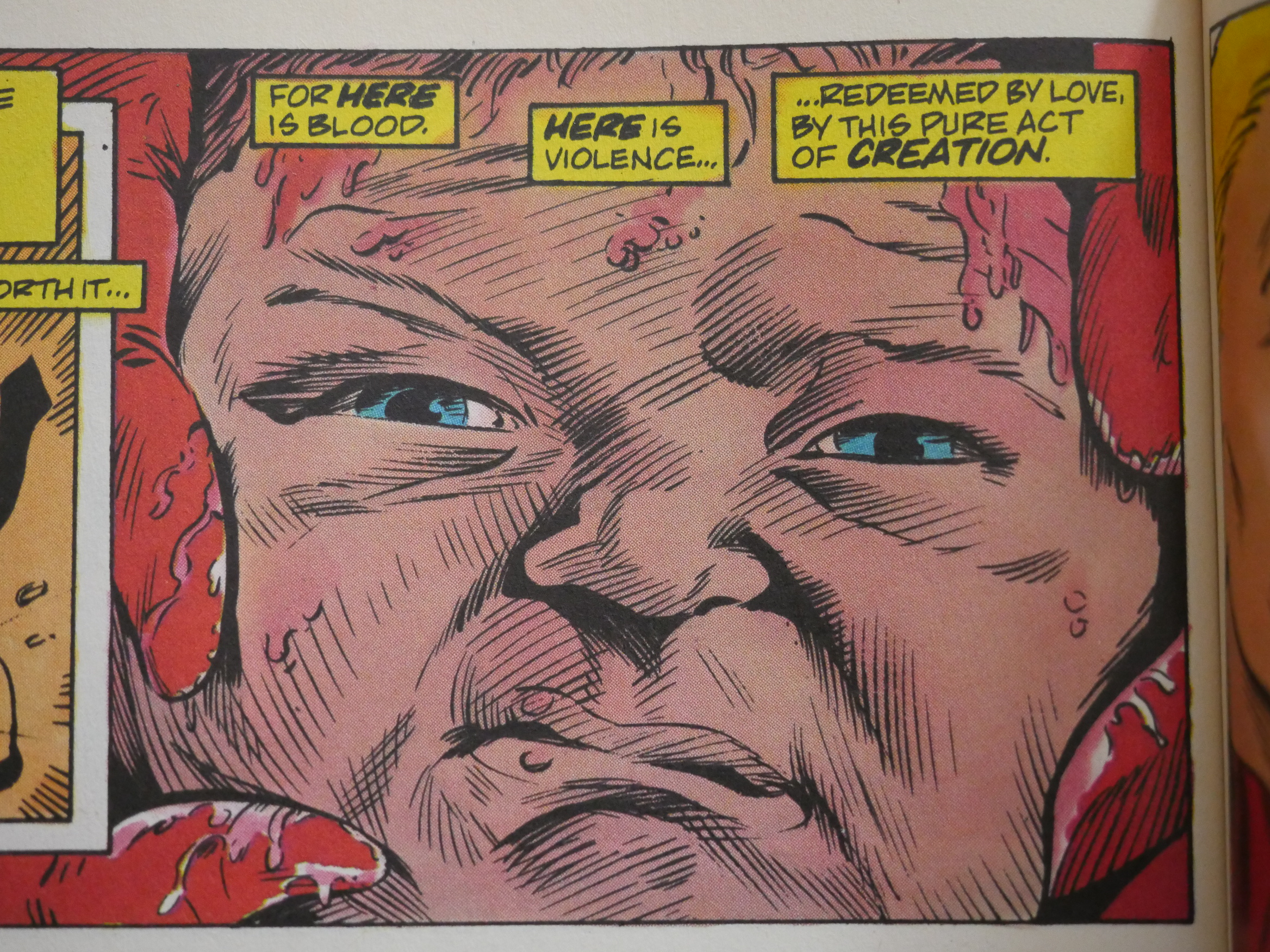
But where’s Chuck Beckum? Yes, he’s gone after just illustrating one issue (and doing a few pin-ups). Instead Rick Veitch steps in and draws the childbirth. (Well, and the rest of the book.)
No explanation for the departure is given, and it paints that fill-in issue with yronwode’s explanation in a kinda peculiar light. Did they have that pause because they were looking for a new artist? Or did something else happen?
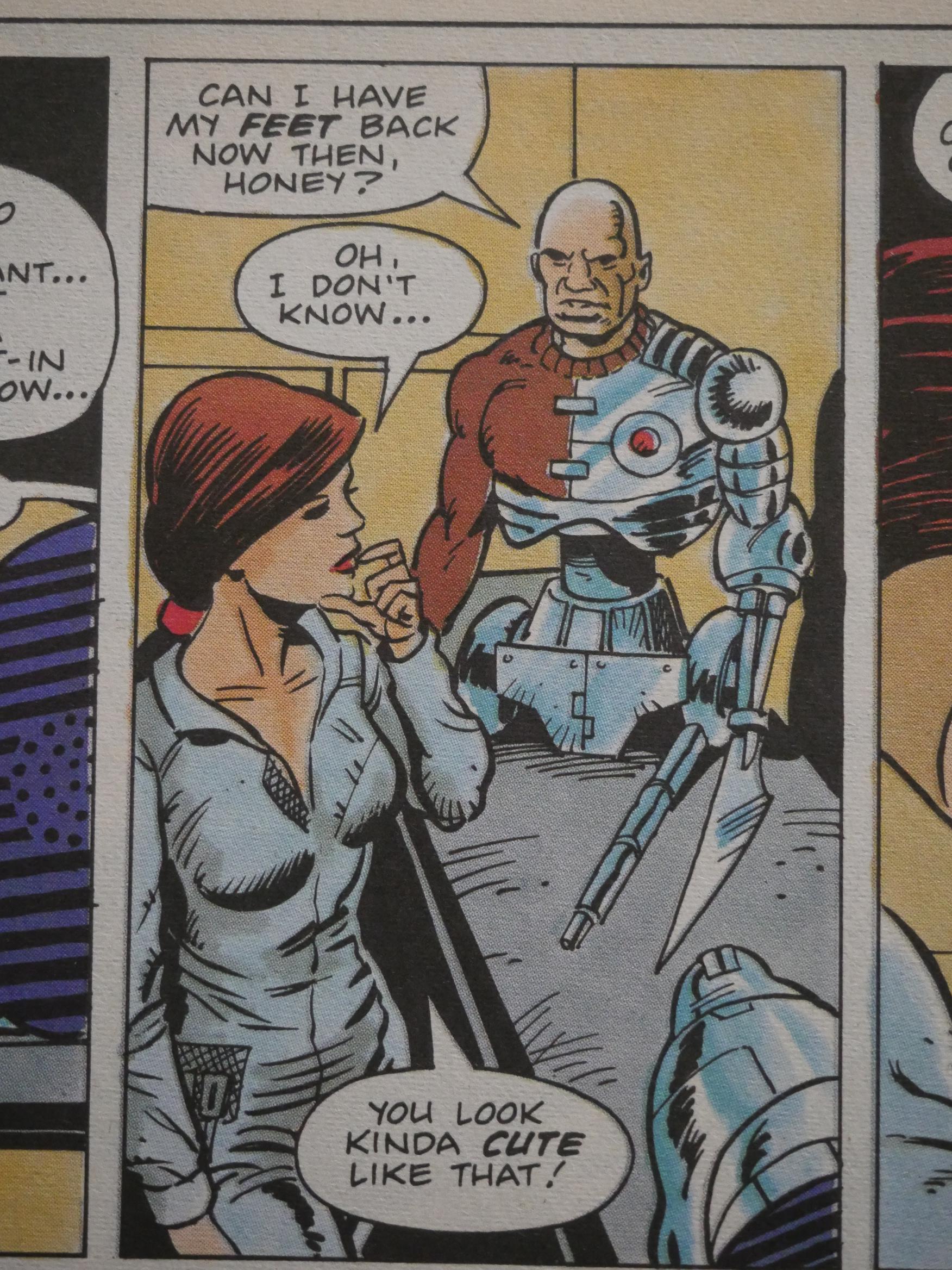
The most regular back-up feature was Axel Pressbutton by Steve Moore (again) and Mike Collins et al. The first one was rather confused, but the second one had a twist on time travel that was most amusing.
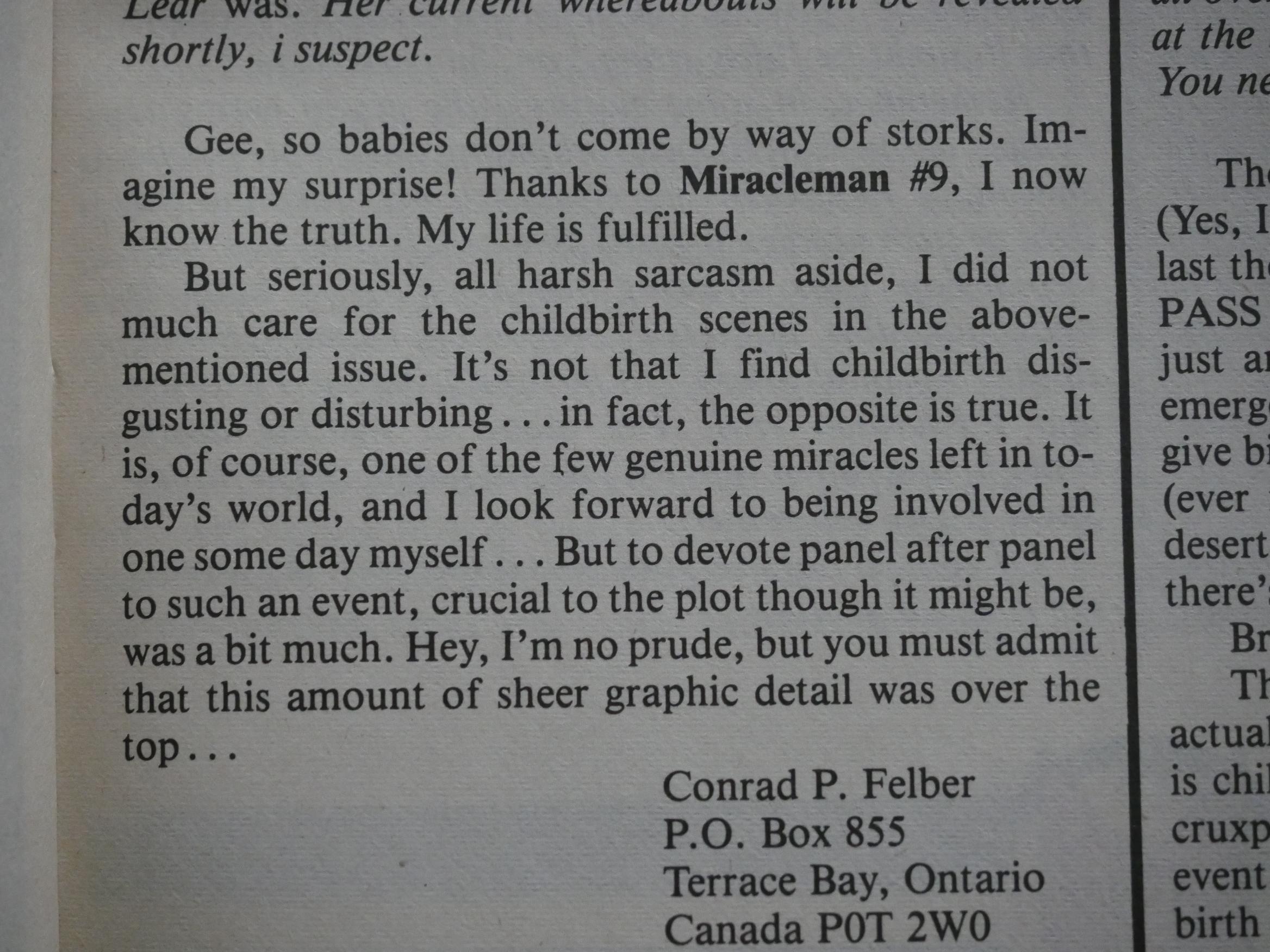
The reactions to the birth scenes roll in, and not everybody liked it.
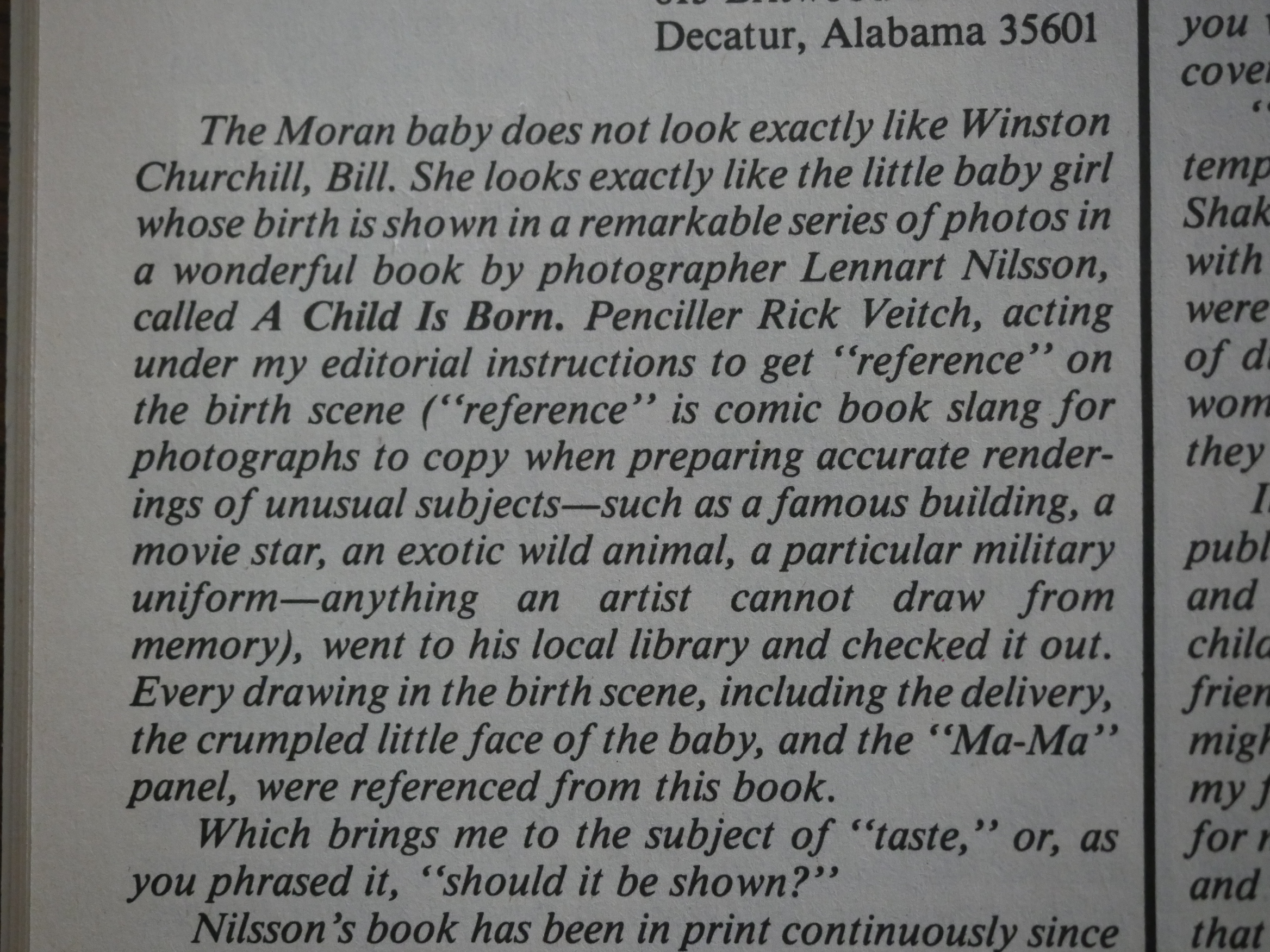
Rick Veitch’s version of the baby looked a lot like Winston Churchill, but that was only because he’d used A Child Is Born as a reference, and the baby there looked a lot like Winston Churchill, is what I think she’s trying to explain here.
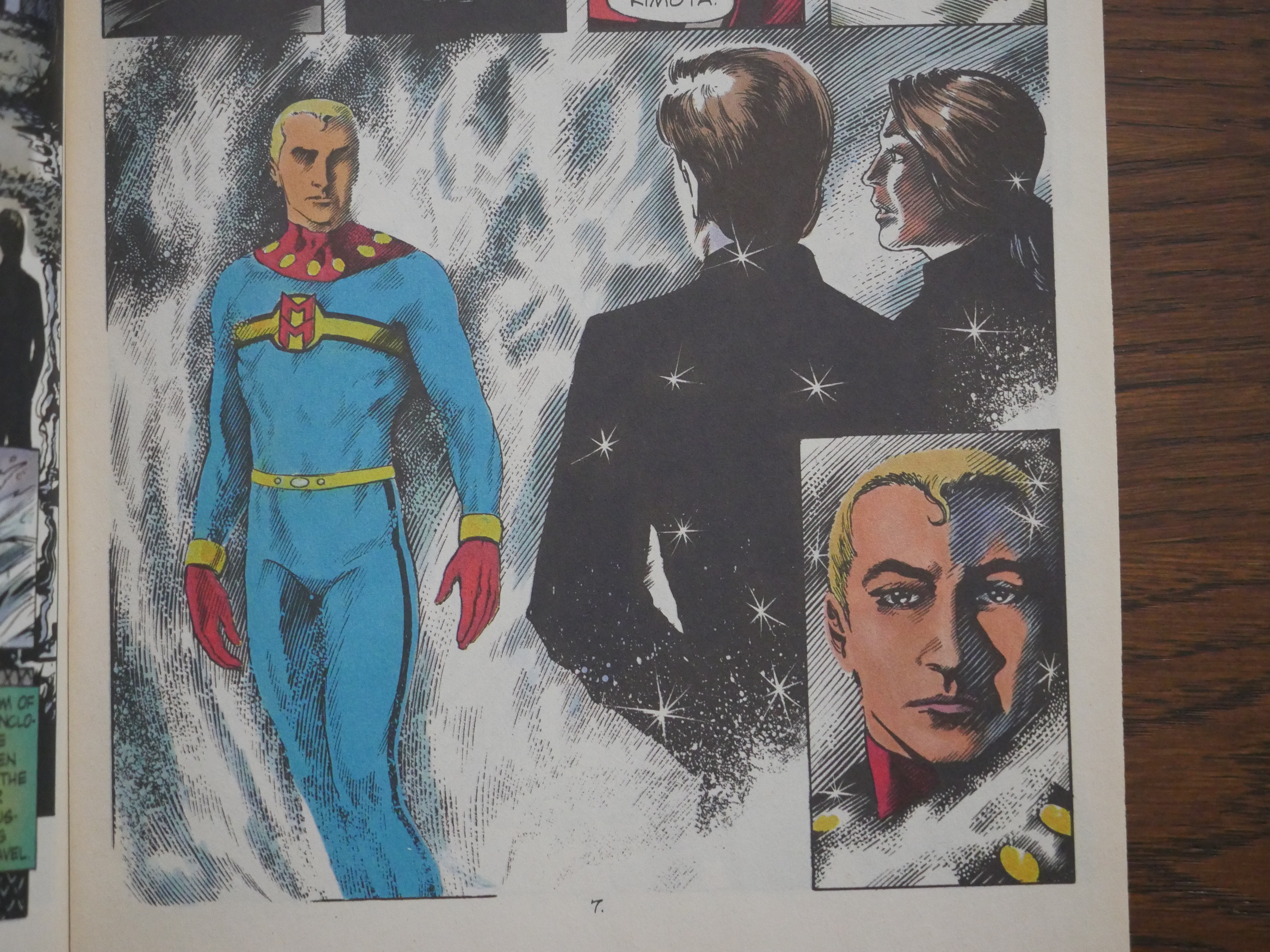
And then the final Alan Moore arc starts, with John Totleben doing the artwork. The issues at this point typically trickled out about twice a year, and each issue only had 16 pages of Miracleman.
But with artwork like that, I guess it takes as long as it takes. It’s rather inhuman in its perfection.
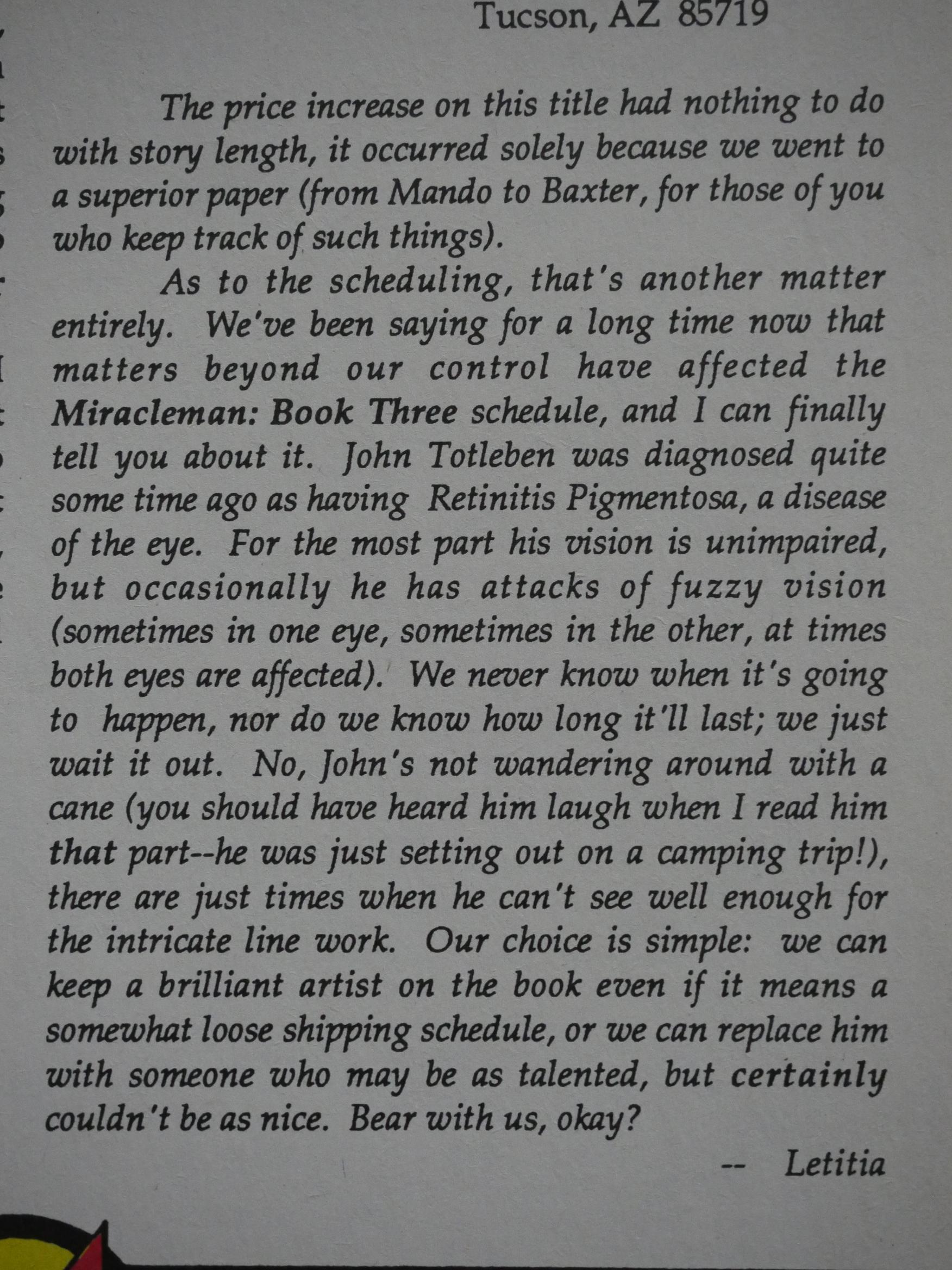
The editor explains that Totleben had eye problems, which is apparently the cause of the erratic schedule.
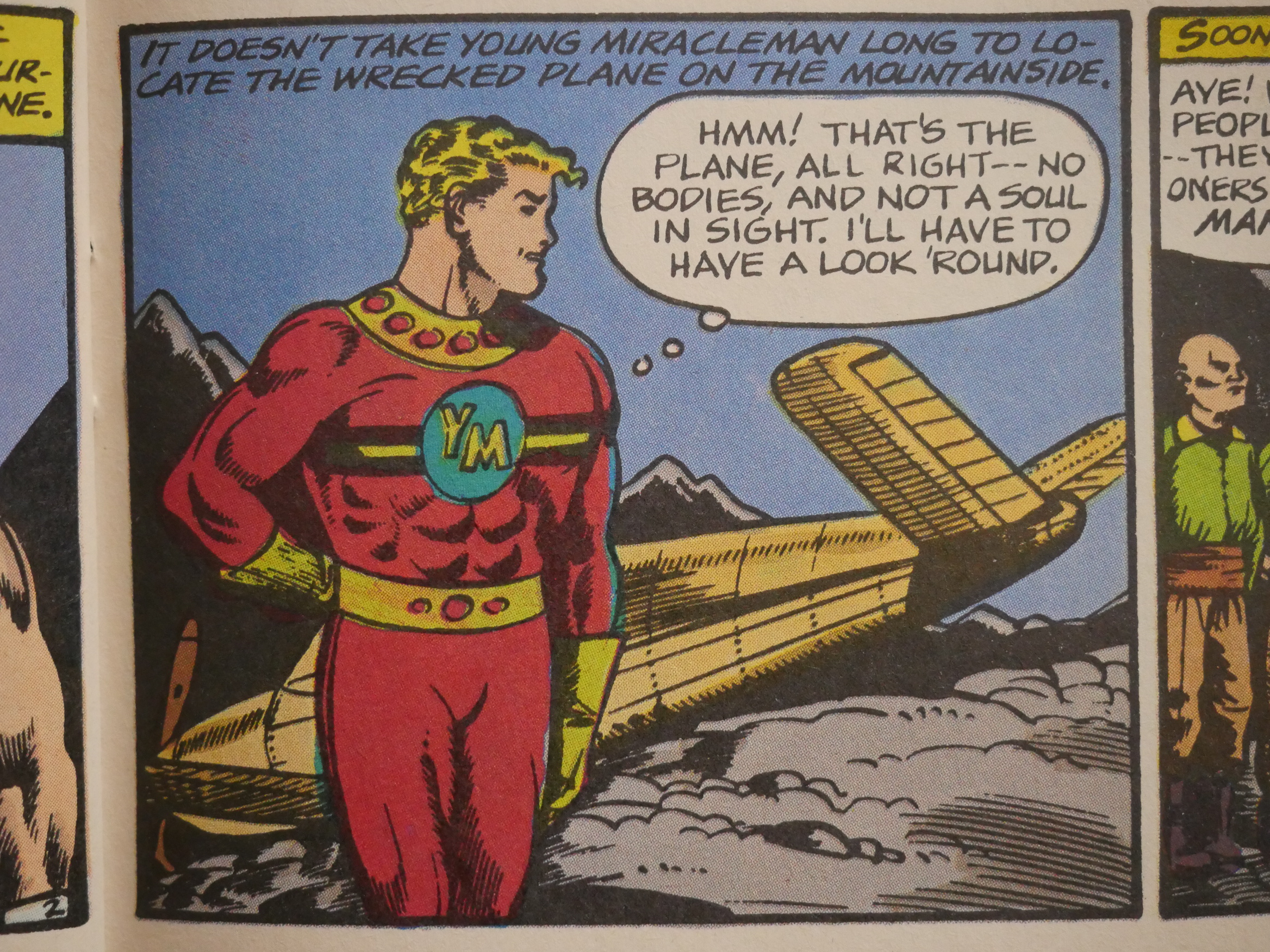
So Eclipse piles on the backup features even more, so we get more old Marvelman reprints…
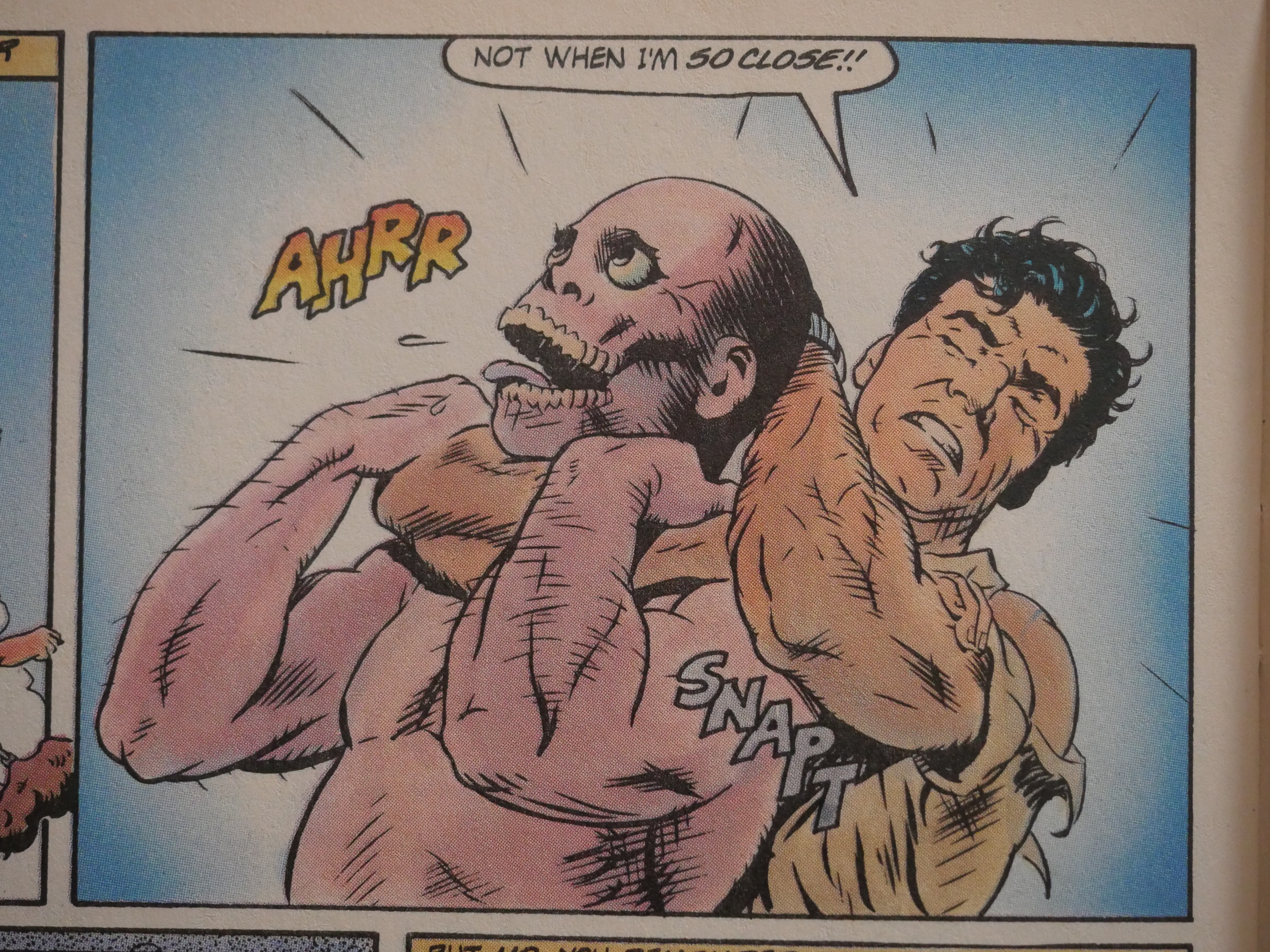
And this completely incongruous strip by Doug Moench and Jim Sullivan, which would have fit perfectly in Alien Encounters, but has nothing to do, aesthetically or thematically, with Miracleman. Perhaps it was just something Eclipse had lying around the office?
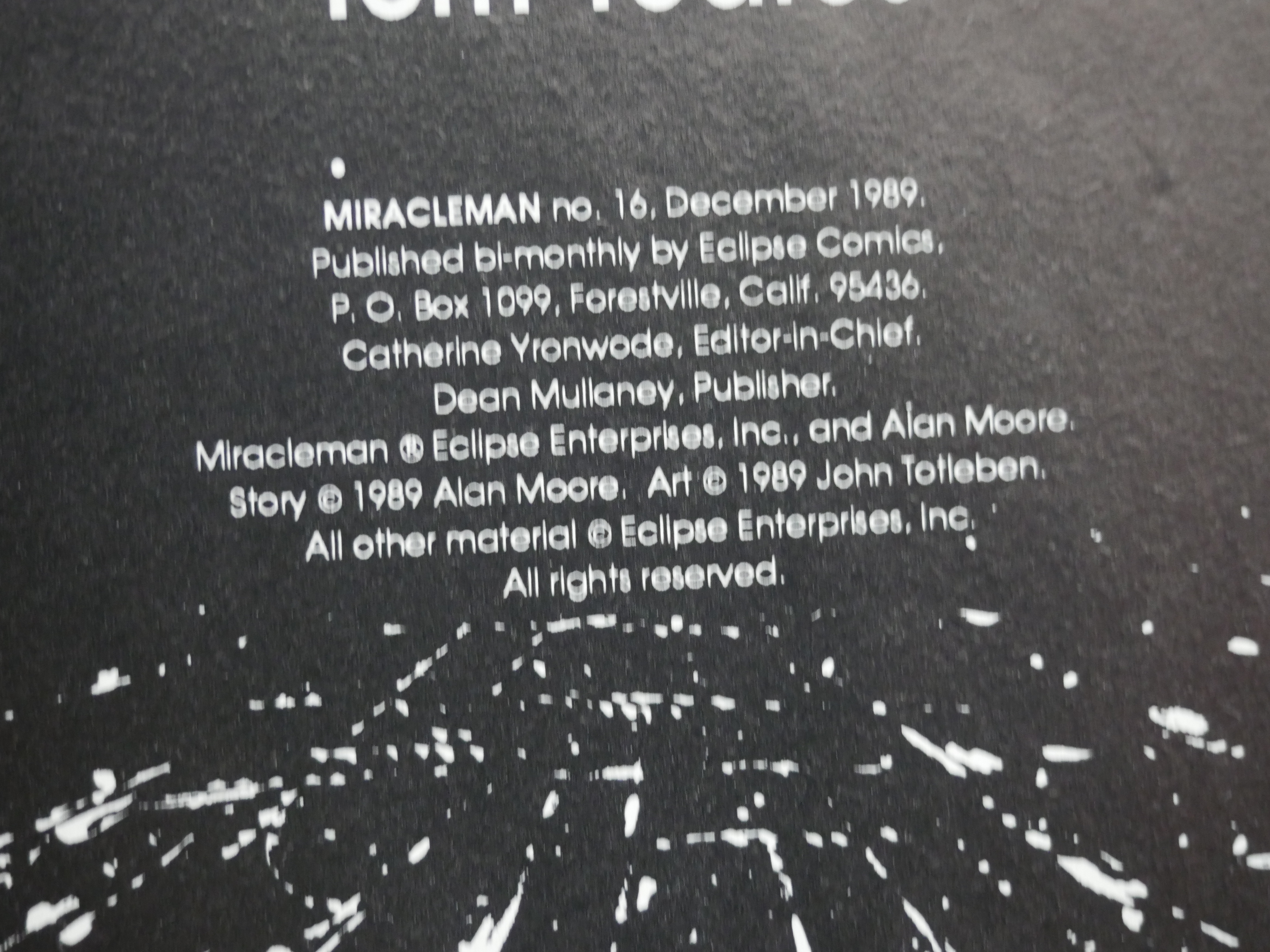
Eclipse are still pretending that Miracleman is published bi-monthly, for some reason or other… There was a one year gap between the last two Totleben (and Alan Moore) issues.
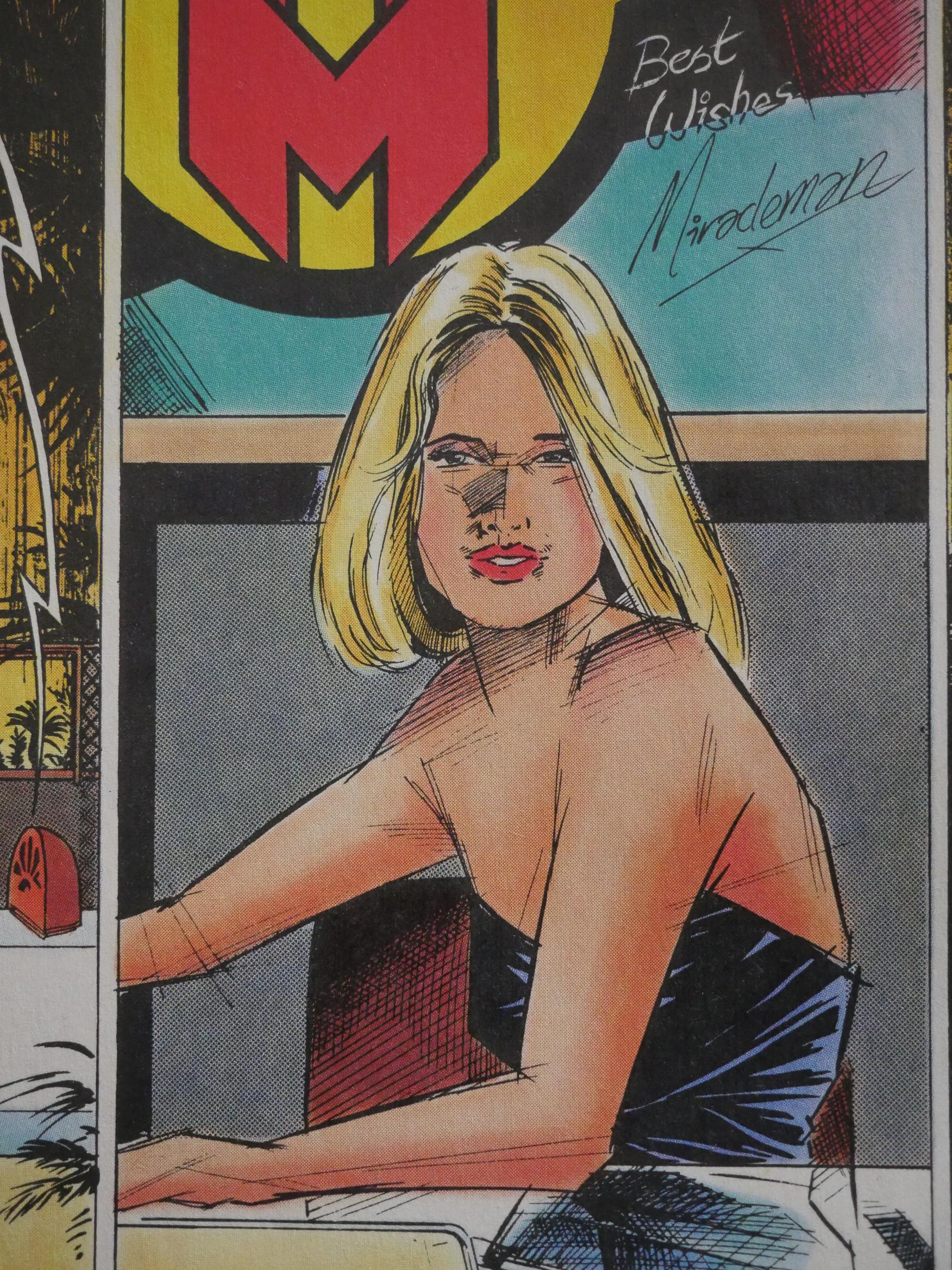
Because then Neil Gaiman and Chris Buckingham took over the book, and stayed with it until Eclipse went bankrupt. But only lethargically, with an issue showing up now and then.
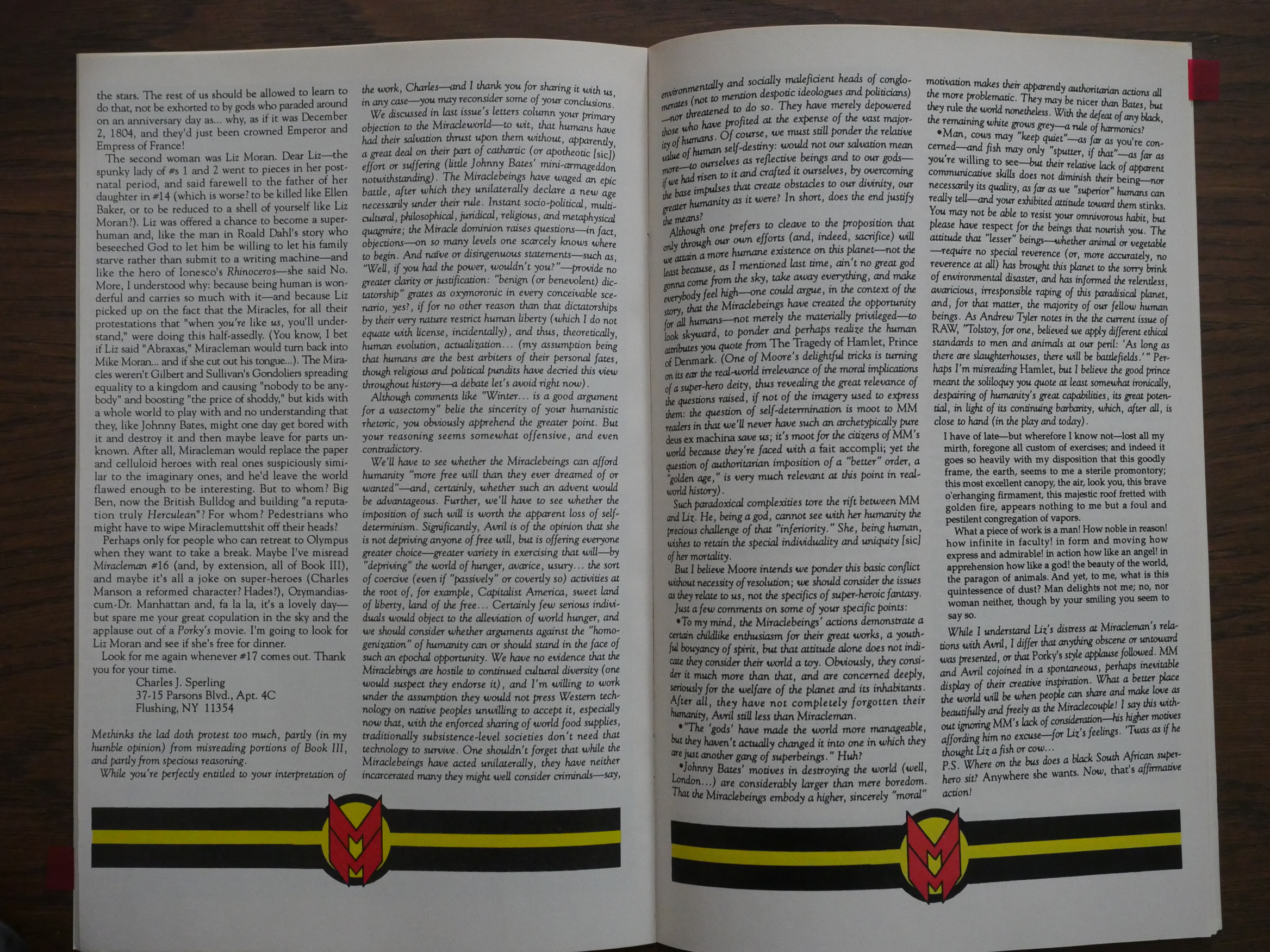
The book at this point is about what a world with a god-like creature at the helm would look like, and the letters pages are full of discussions about god and stuff. Here’s editor Greg Baisden’s response to a letter as an example.
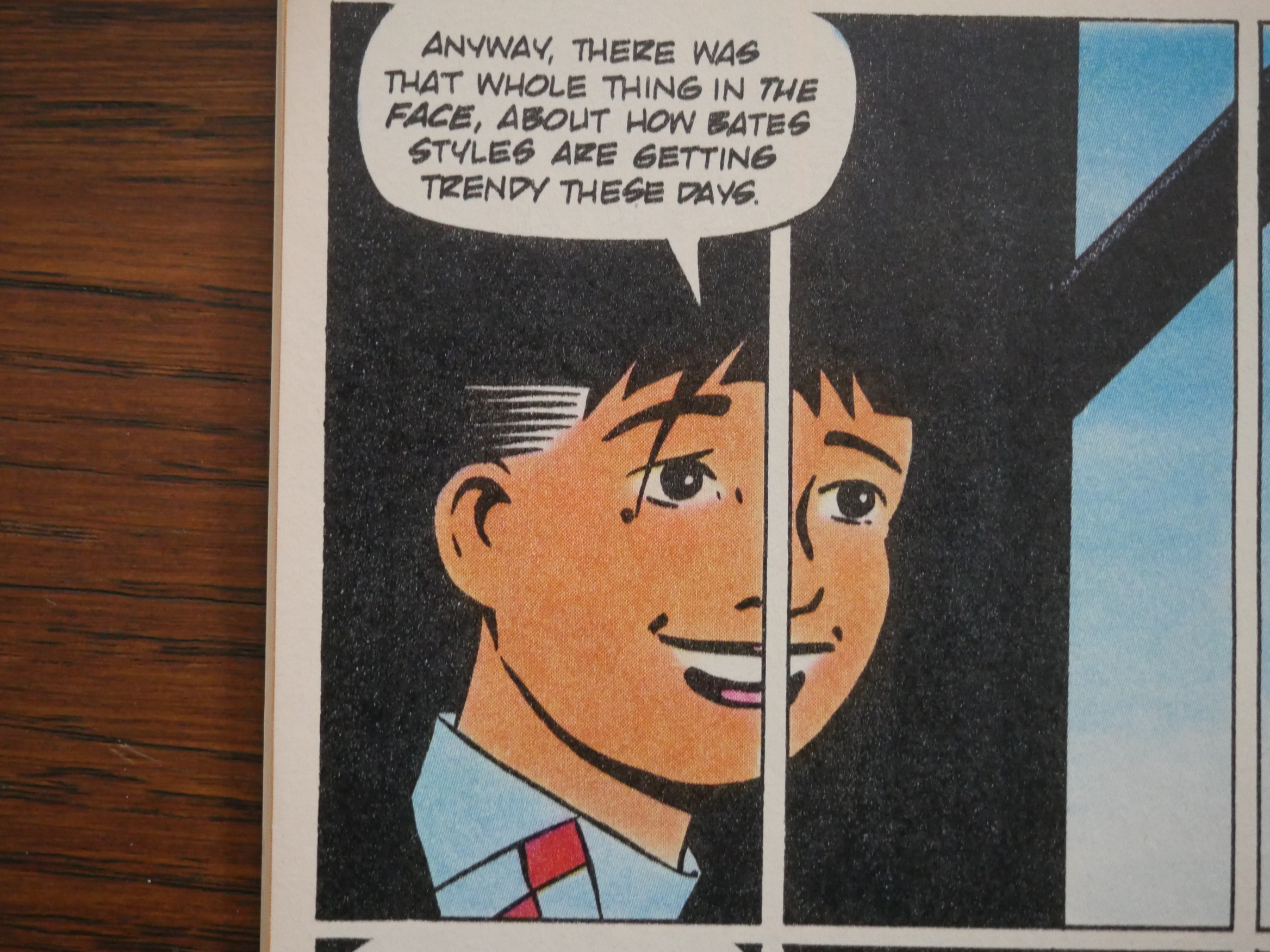
Buckingham is a chameleon artistically. Here’s he’s doing Jamie Hernandez…
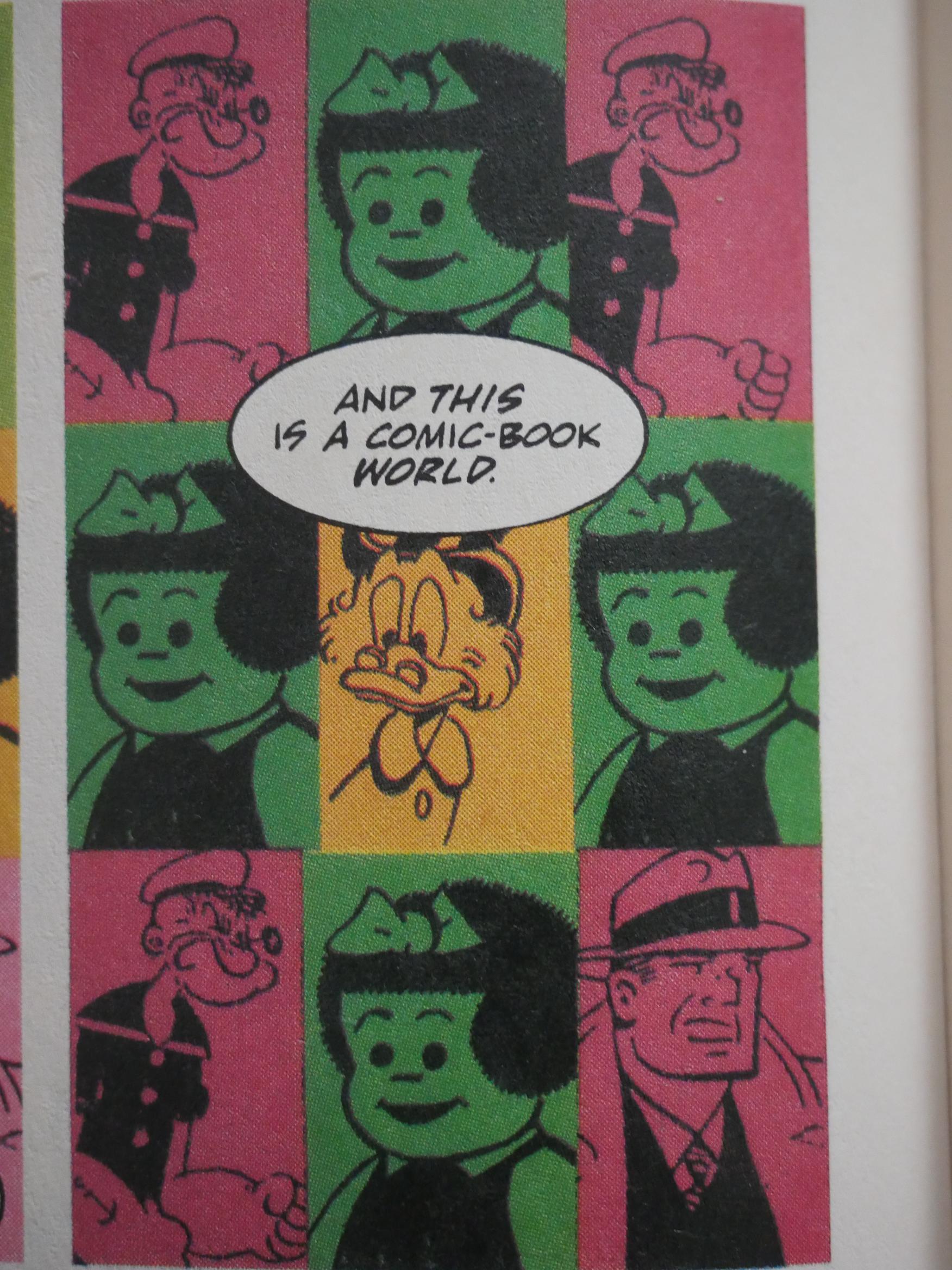
And here’s Mark Newgarden. I mean Andy Warhol.
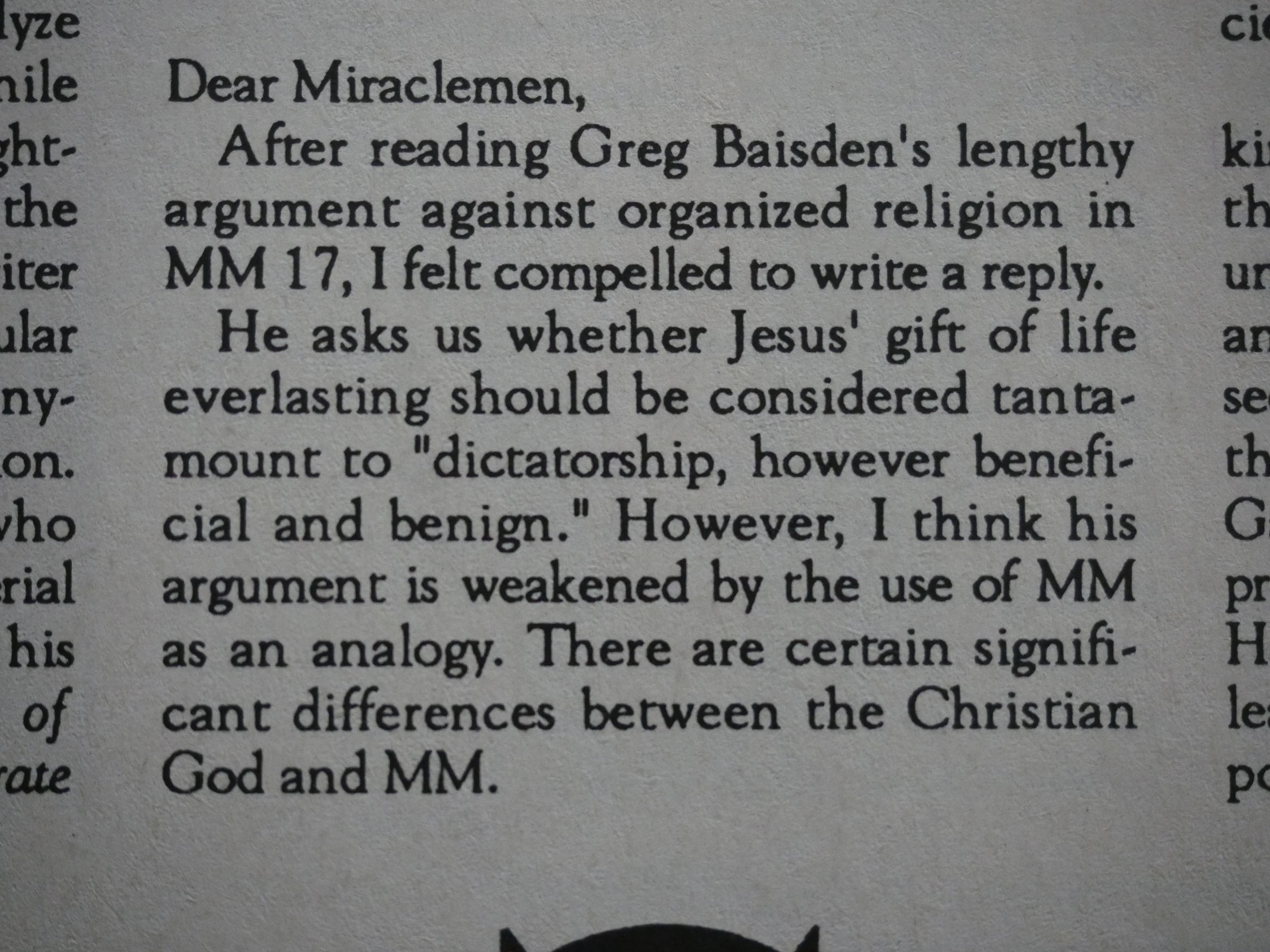
Critic Ng Suat Tong shows up in the letters pages with a defence of religion or something. But otherwise few famous people.
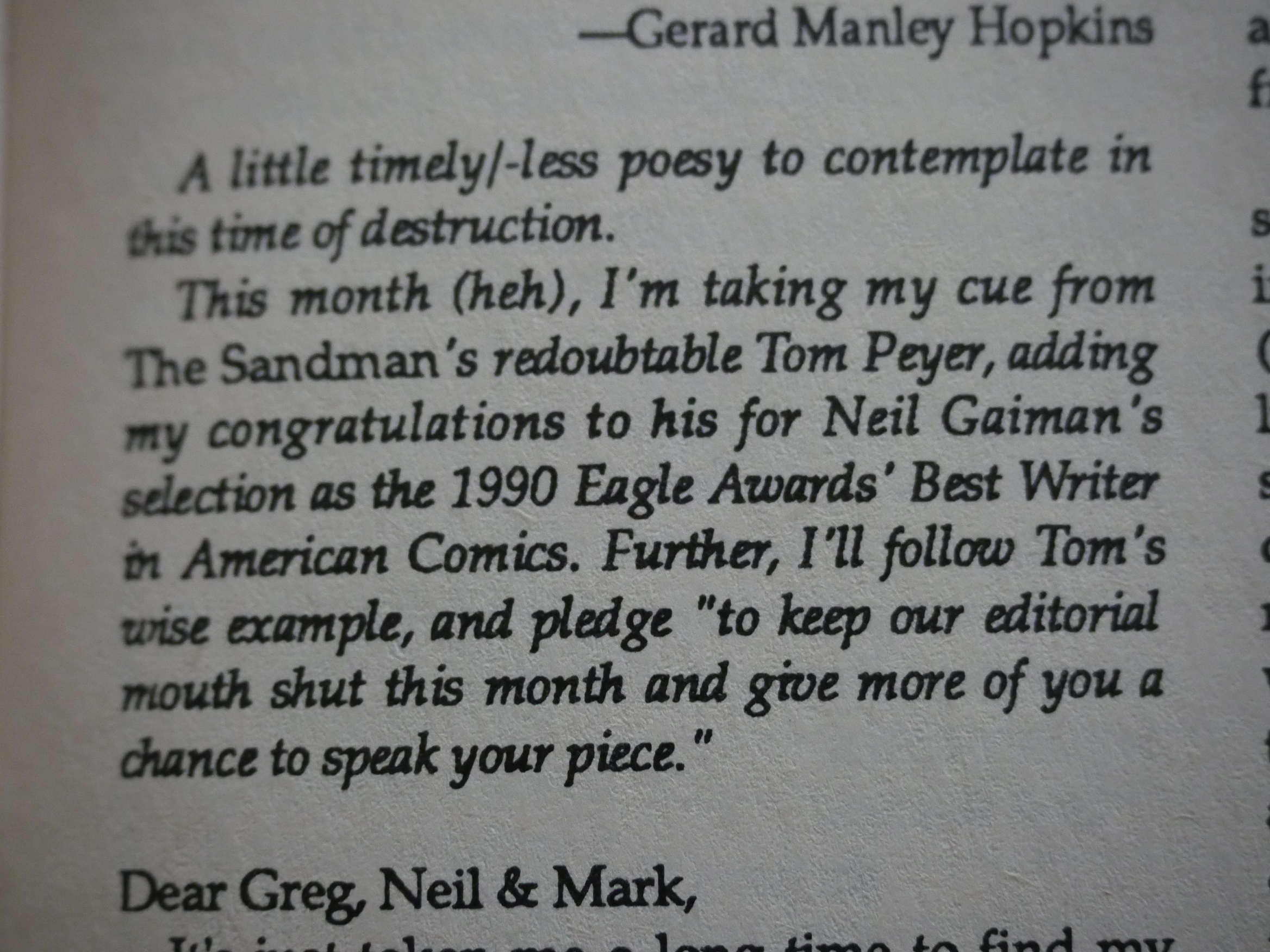
Baisden promises to discuss religion less, and then he left and was replaced by a new editor. Also during these latter years, the paper quality and the covers and the printing methods seem to shift from issue to issue, with some cardboard covers, one issue on shiny paper, one with a weird new colour separation method, etc. I guess Eclipse were at the move-to-a-printer-we-don’t-owe-money-with phase economically…
I’m just guessing!
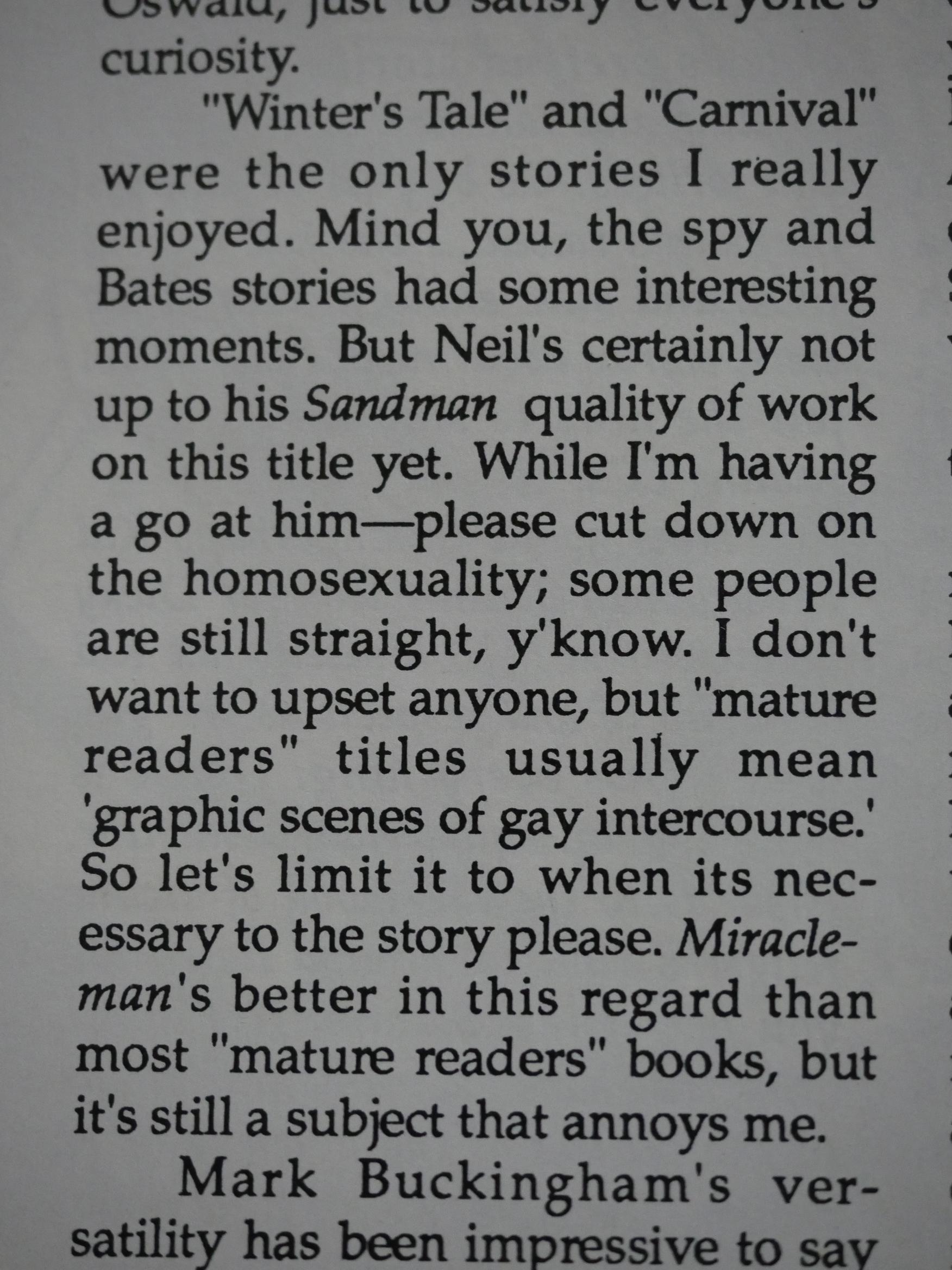
A reader reacts negatively to Andy Warhol being in a comic book. “Some people are still straight, y’know.” Huh. I did not.
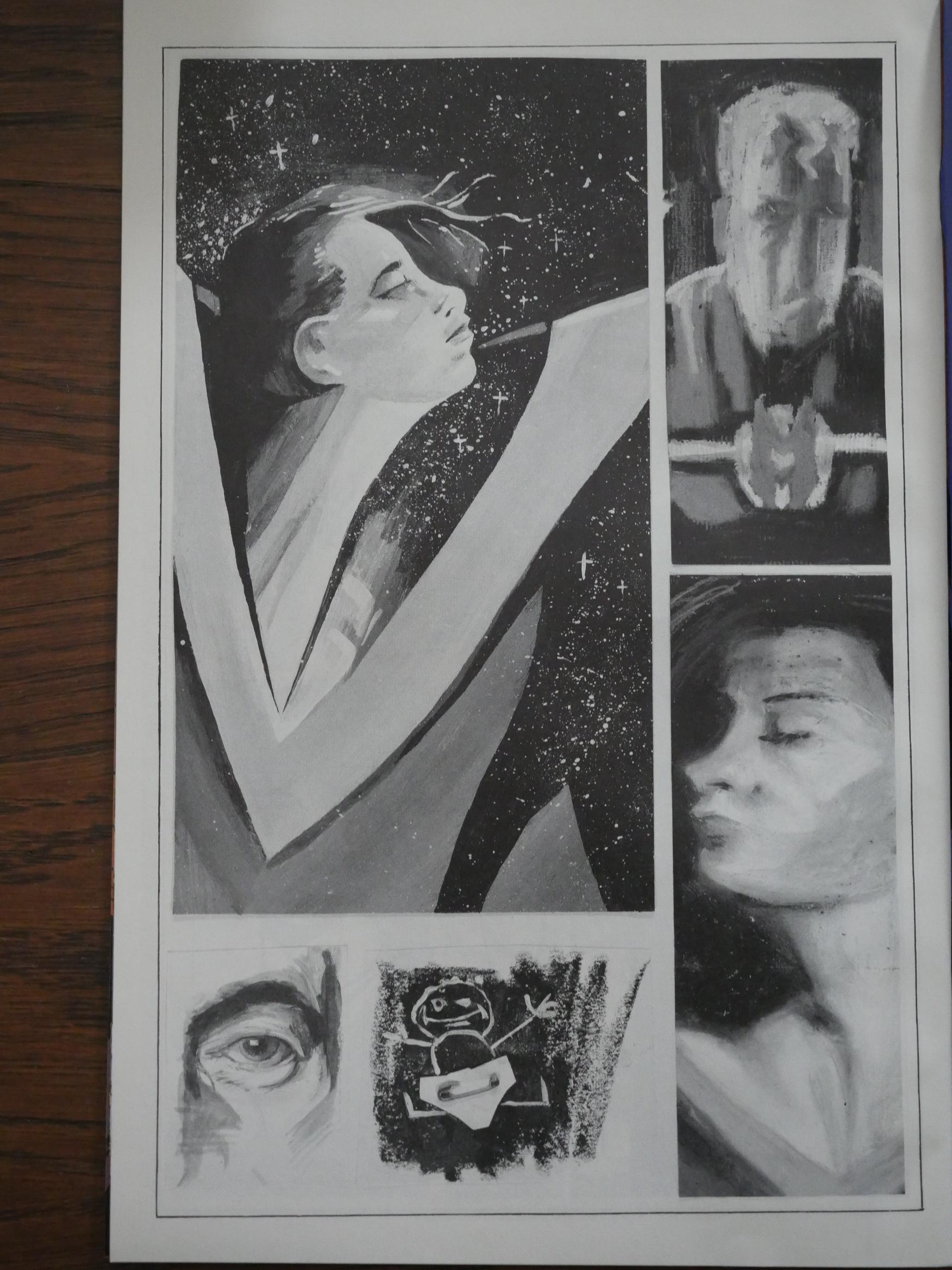
And then Miracleman ends. Here’s some sketches.
But wait, there’s more.
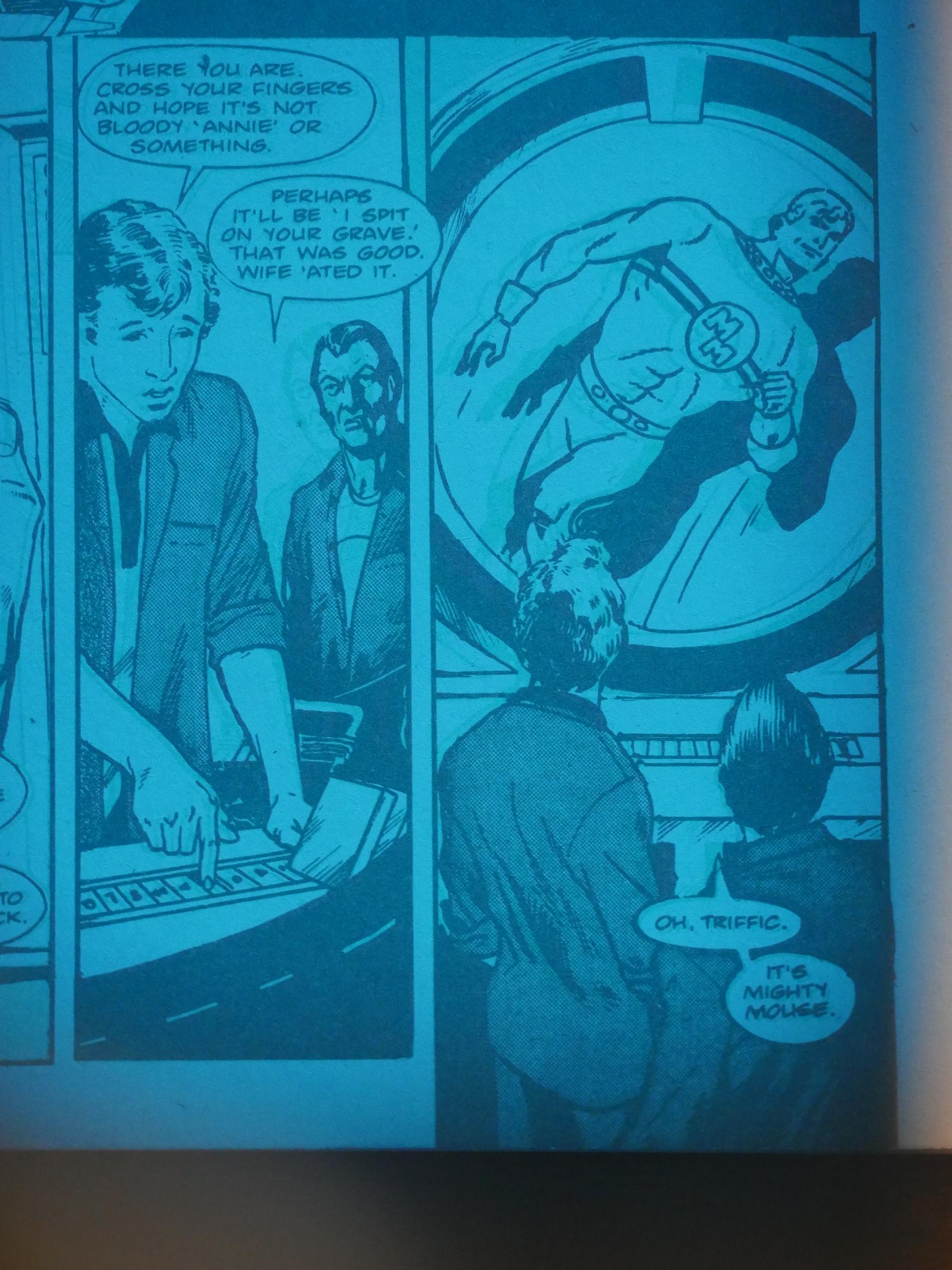
First there’s the 3D special which reprints old Mick Anglo stuff, but with a framing story by Alan Moore and Alan Davis: Two janitors watch old Miracleman movies.
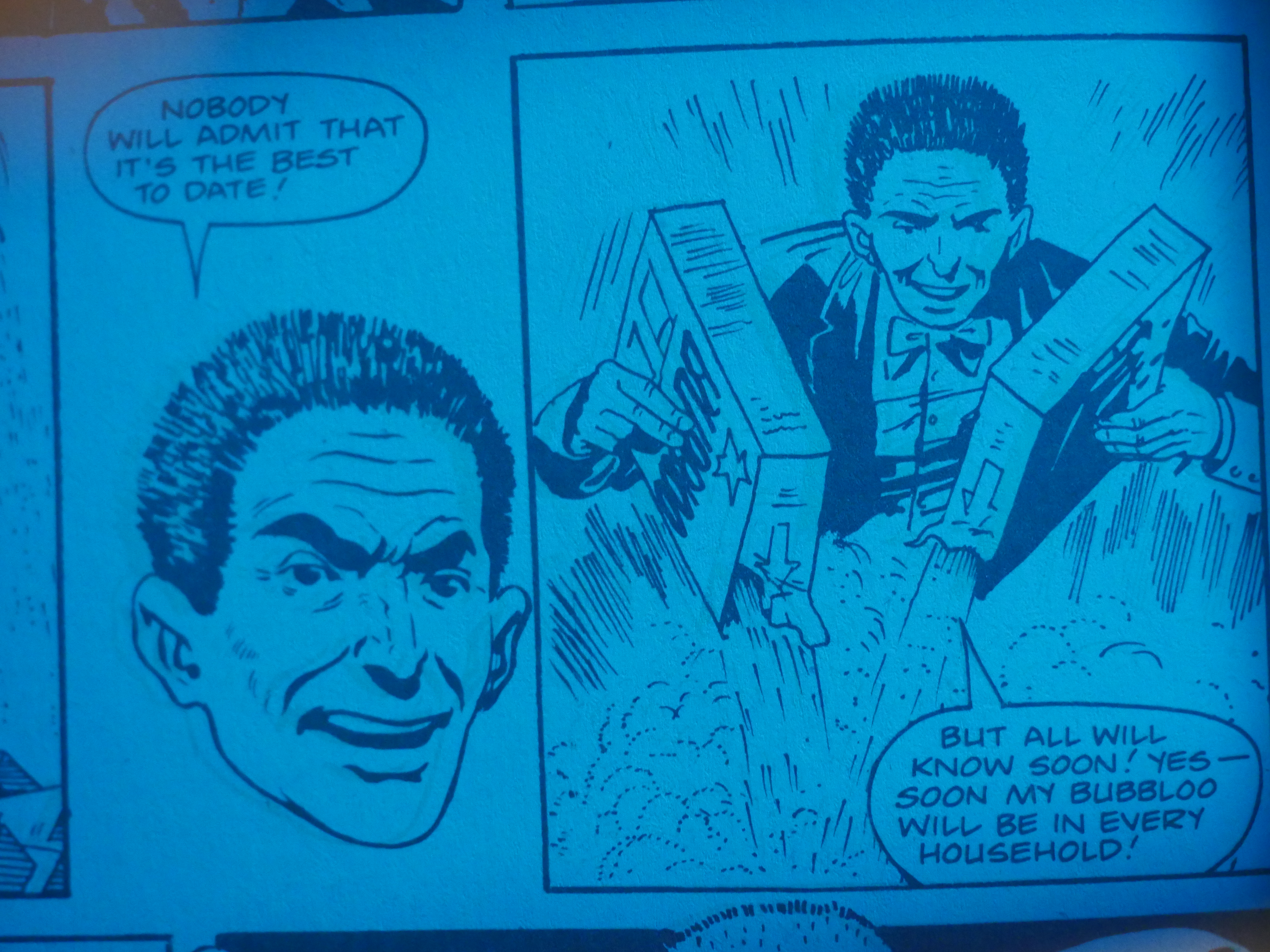
And they’ve chosen some pretty wacky examples, like this with the frustrated detergent creator. Things go awry as you can imagine, and it involves a lot of bubbles.
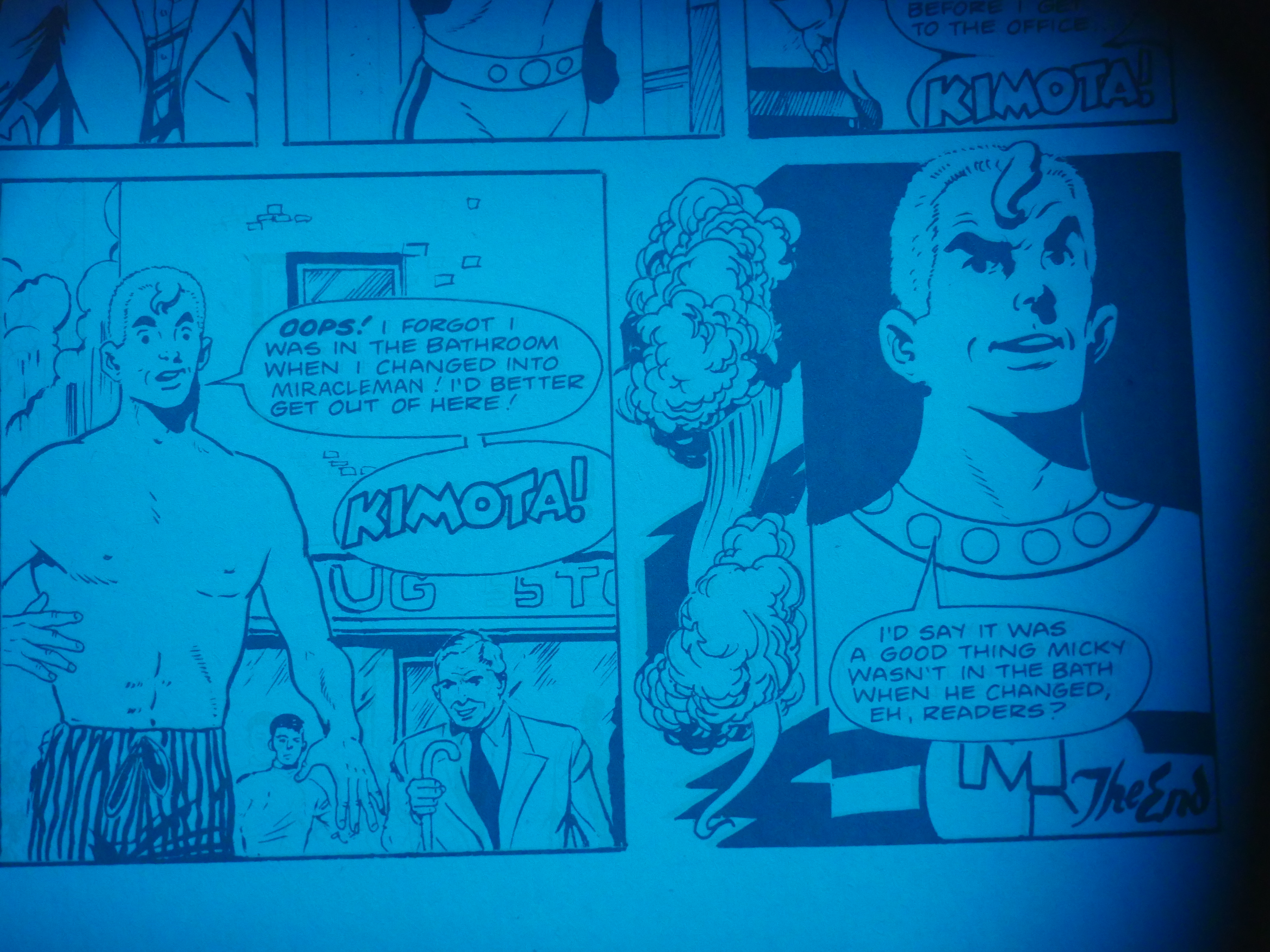
I’ll say! Eh? Eh?
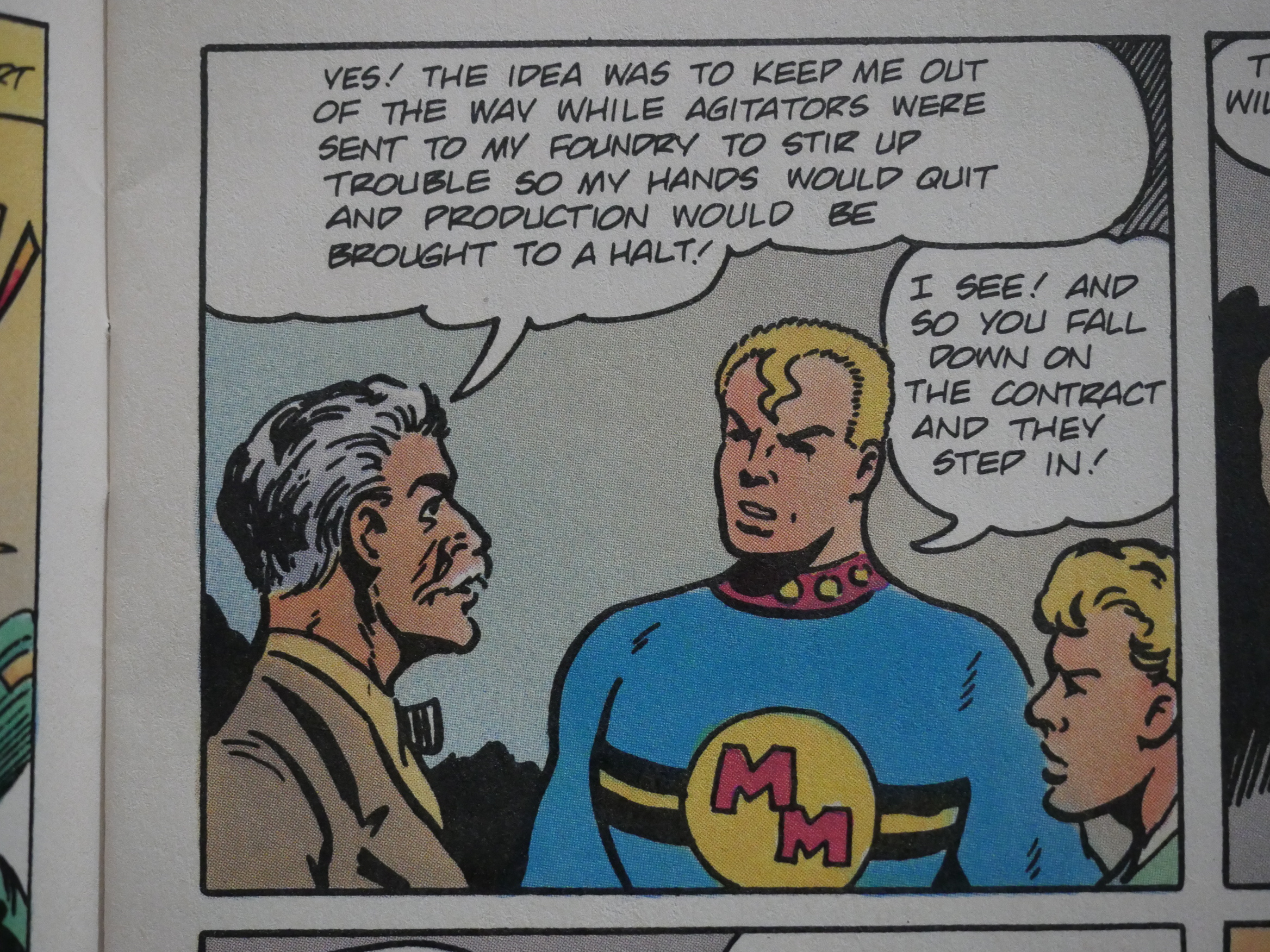
Then there’s two issues of Miracleman Family, which is all Mick Anglo reprints, but without a framing story. I wondered what the politics of these boys’ stories were, and I went “hmmm!” in this one where Young Miracleman apparently becomes a unionbusting scab!
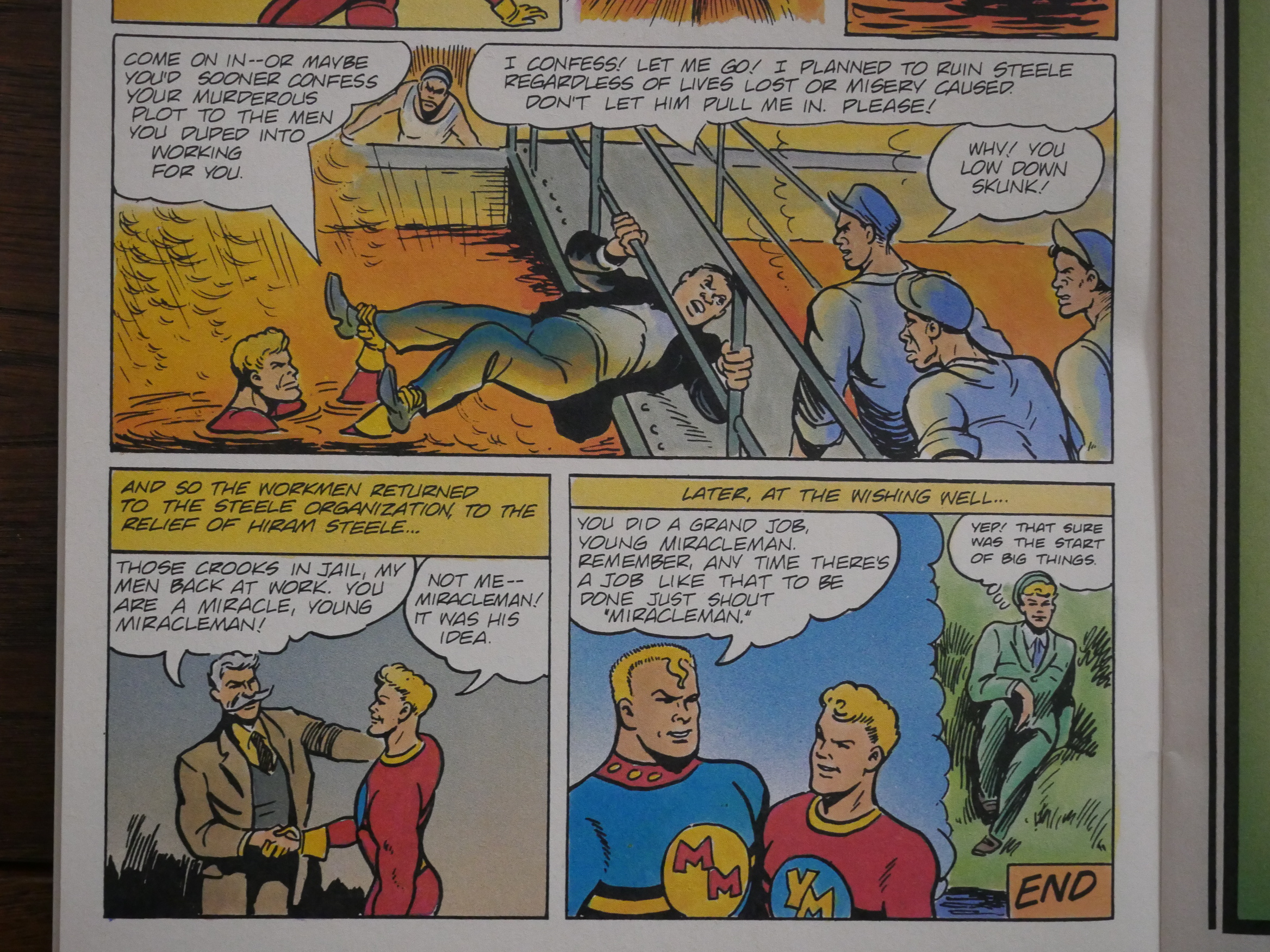
But then it turned out that the workers had just been duped by an evil factory owner, i.e., a capitalist.
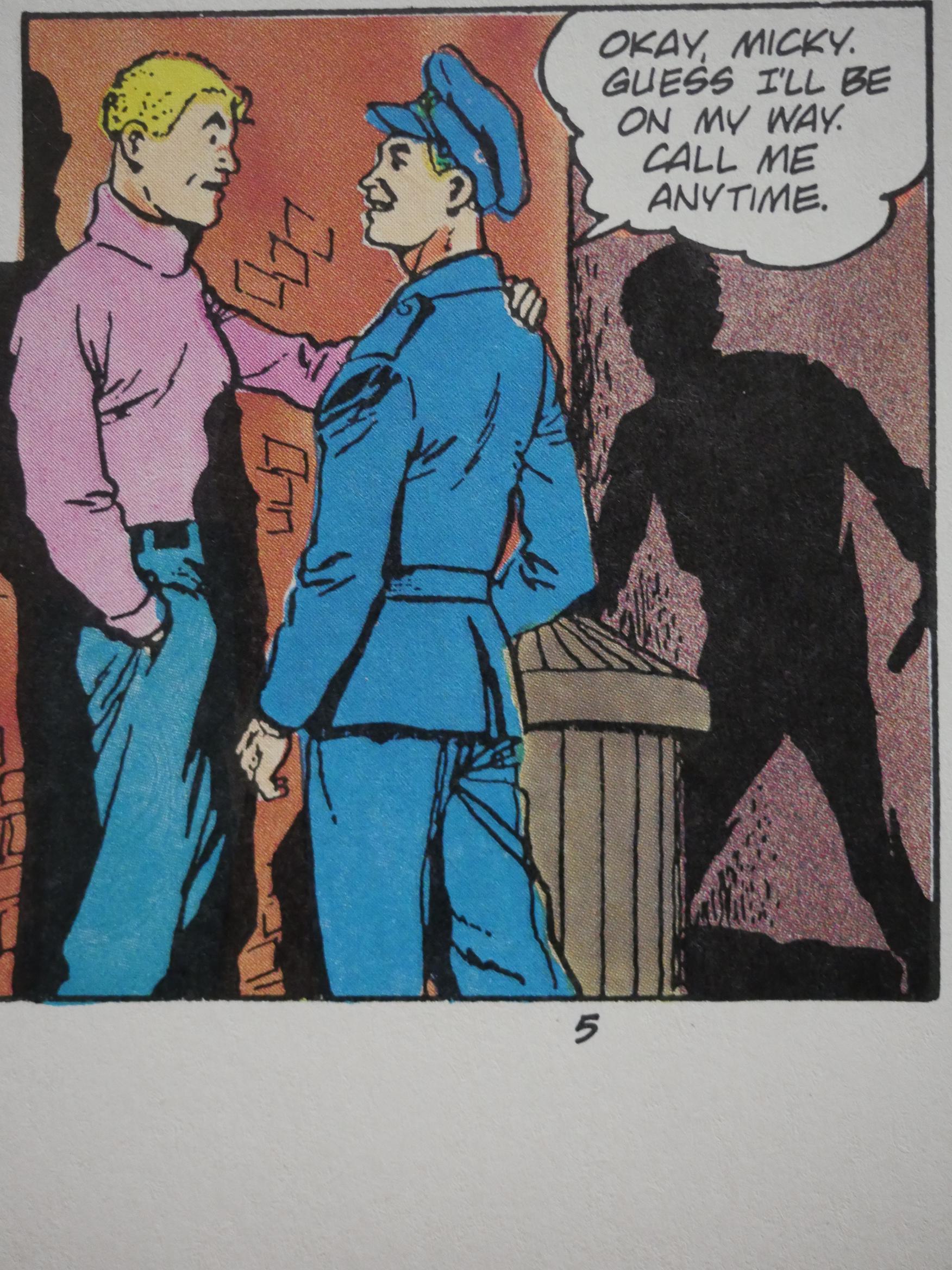
I think this panel works best without any comments.
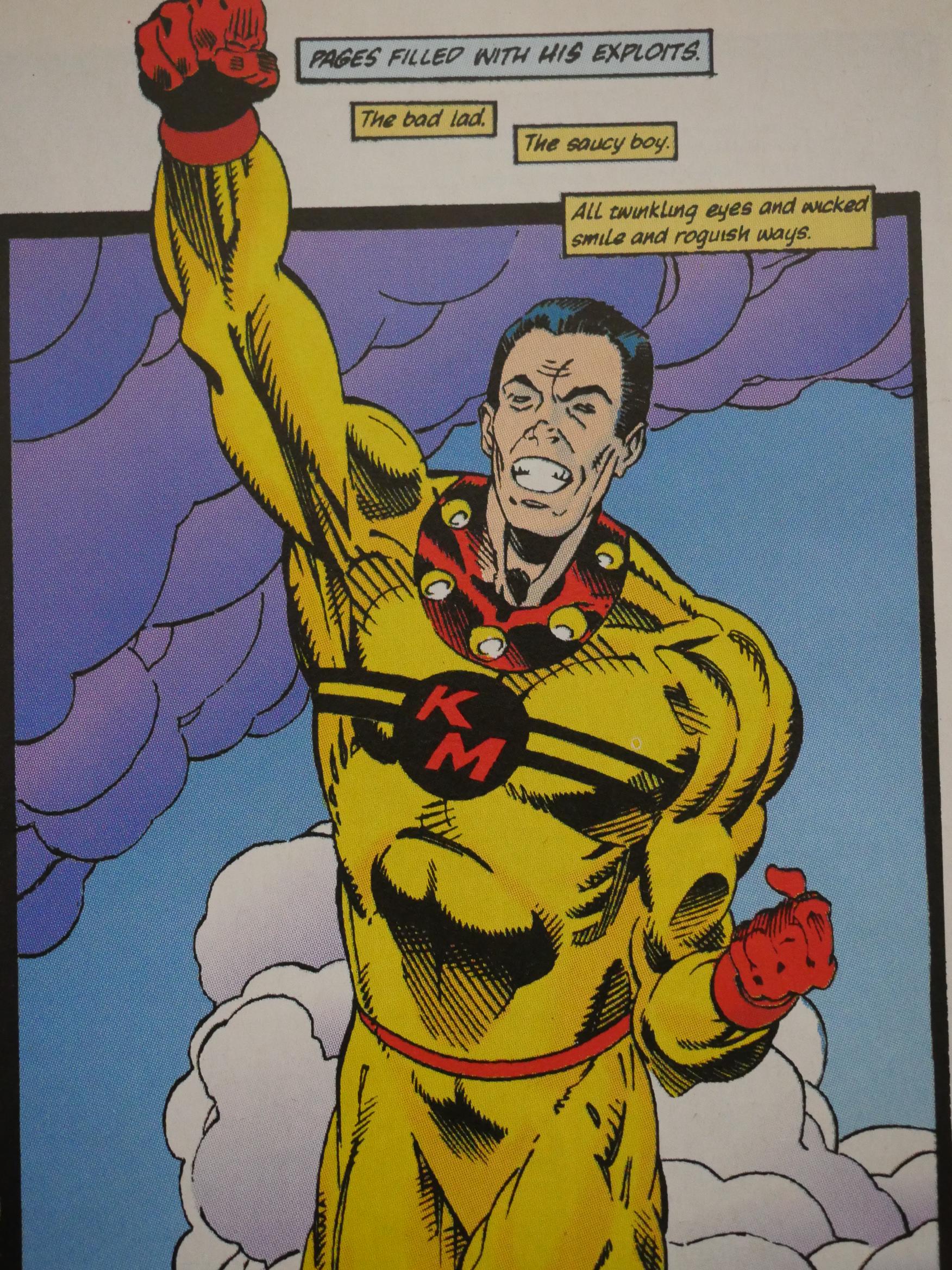
Finally, we have three issues of Miracleman Apocrypha, where all the stories are created by people who are not Alan Moore nor Neil Gaiman.
The schtick here is that Miracleman reads comics about the Miracleman family to get a grip on what the people in his world relate to and understand their new reality. So it’s slightly metafictional: Are we to interpret these stories as straight-up normal “here’s some people having fun with the Miracleman characters!” or the more complex “here’s people imagining what people living in Miracleman’s world would write about Miracleman”?
Which makes a huge difference in how you, the reader, would interpret the stories, right?
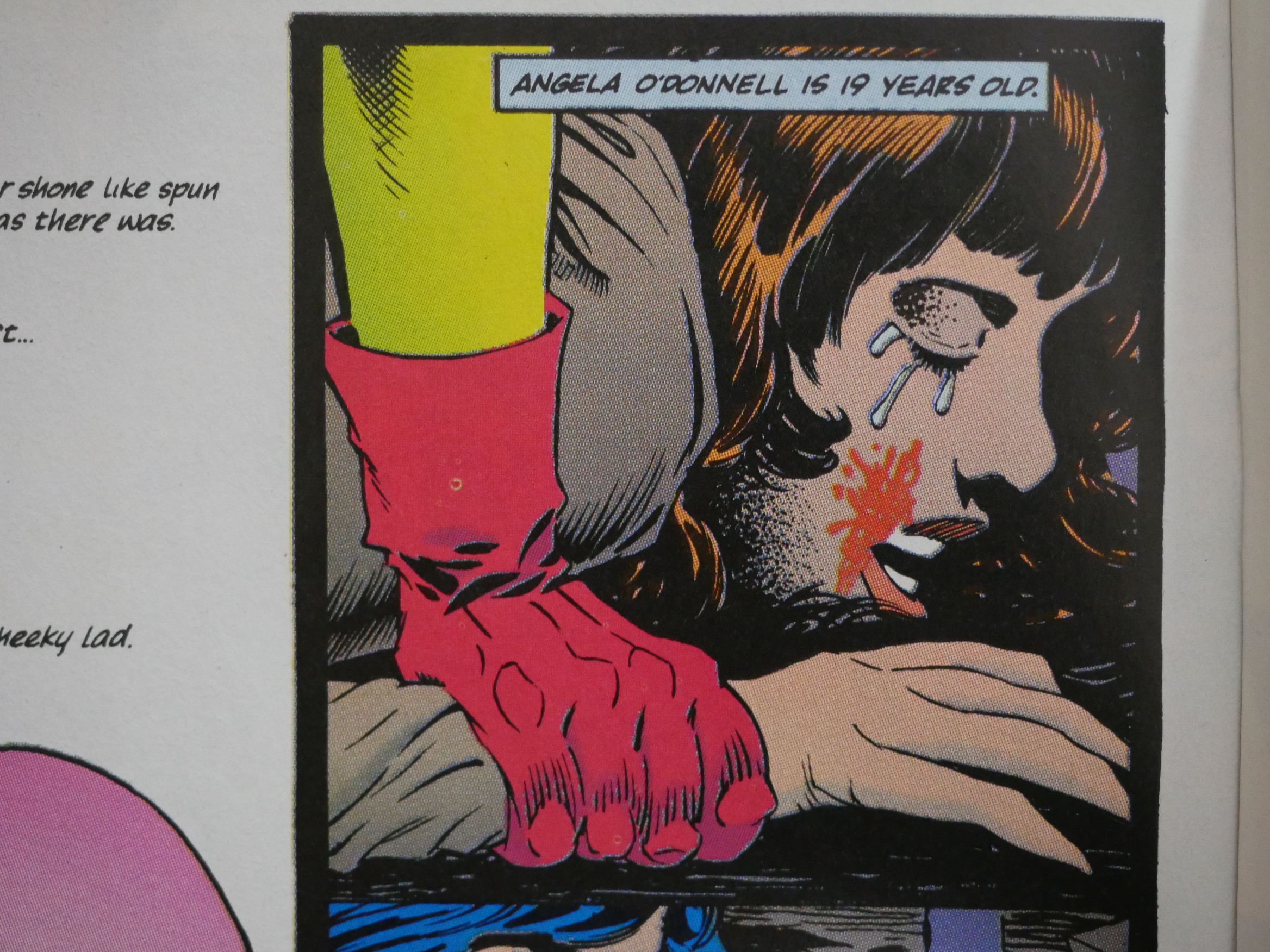
Because if it’s the first, James Robinson and Kelley Jones’s Kid Miracleman story is downright indefensible. Here’s the story: Kid Miracleman rapes and kills a woman. Graphically. The end. If it’s the first interpretation, then Robinson thought to himself, “huh, it would be really cool to have Kid Miracleman be even nastier than Alan Moore depicted him! How ever will I top Alan Moore!”
If it’s the second, you can almost see this as interesting: “People in Miracleman’s world live in a utopia, but still they feel compelled to create vile comics where Kid Miracleman is depicted as raping and killing women. What does that say about that world?”
On the third hand, writers write what they want to see on the page, and Robinson wanted to serve the readers this shit burger on one level or another, so, like, fuck him.
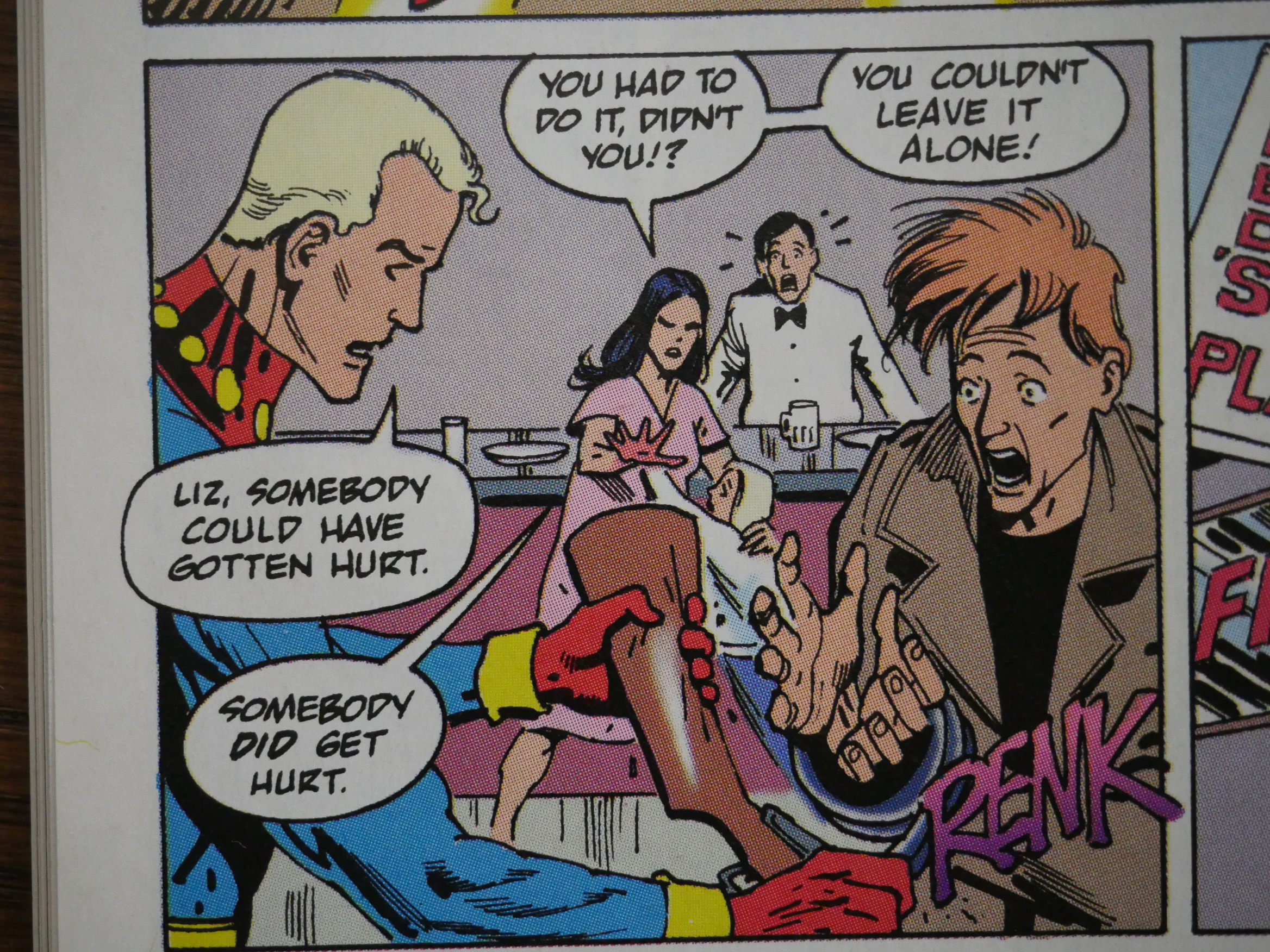
The one where Miracleman’s wife is a scolding shrew (Sarah Byam/Norm Breyfogle) is tiresome, too, but it’s not all bad:
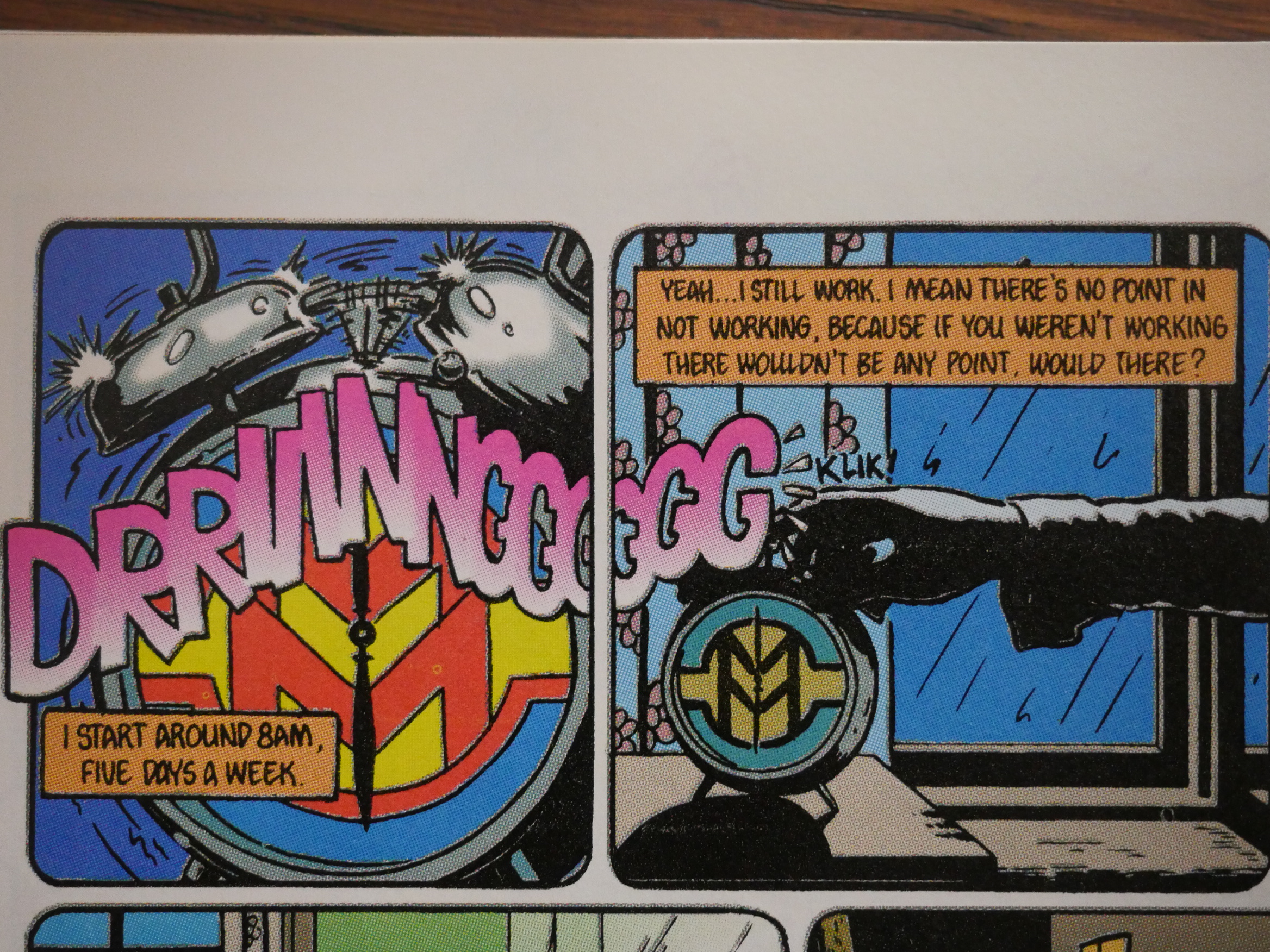
Dick Foreman/Alan Smith/Pete Williamson’s story about a janitor in Miracleman’s palace is amusing, even if it’s a story that’s been done so many times before.
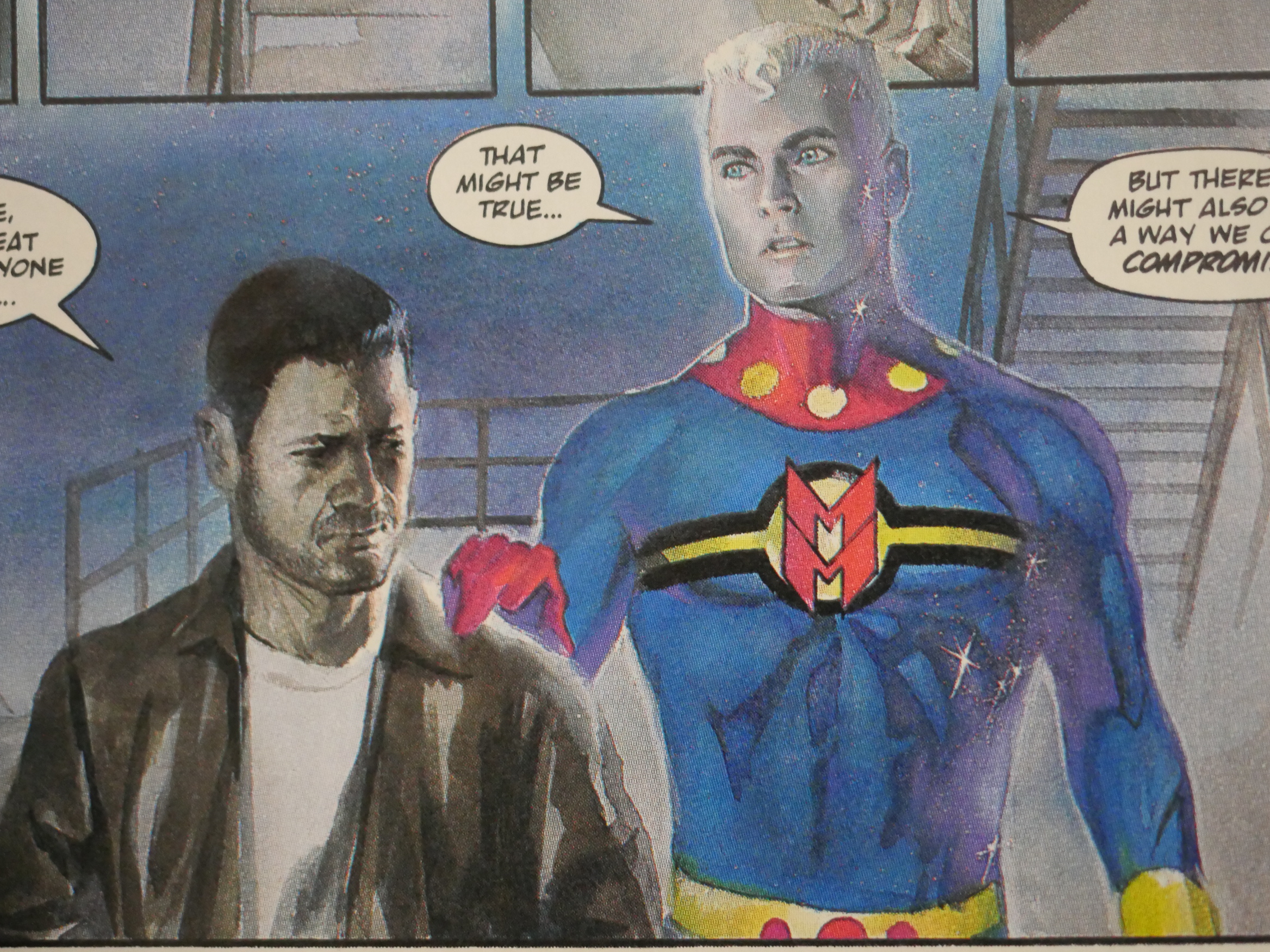
Alex Ross looked at the wrong model sheet, I think. Instead of Aryan superhuman he looked at the Scooter publicity pictures, don’t you think?
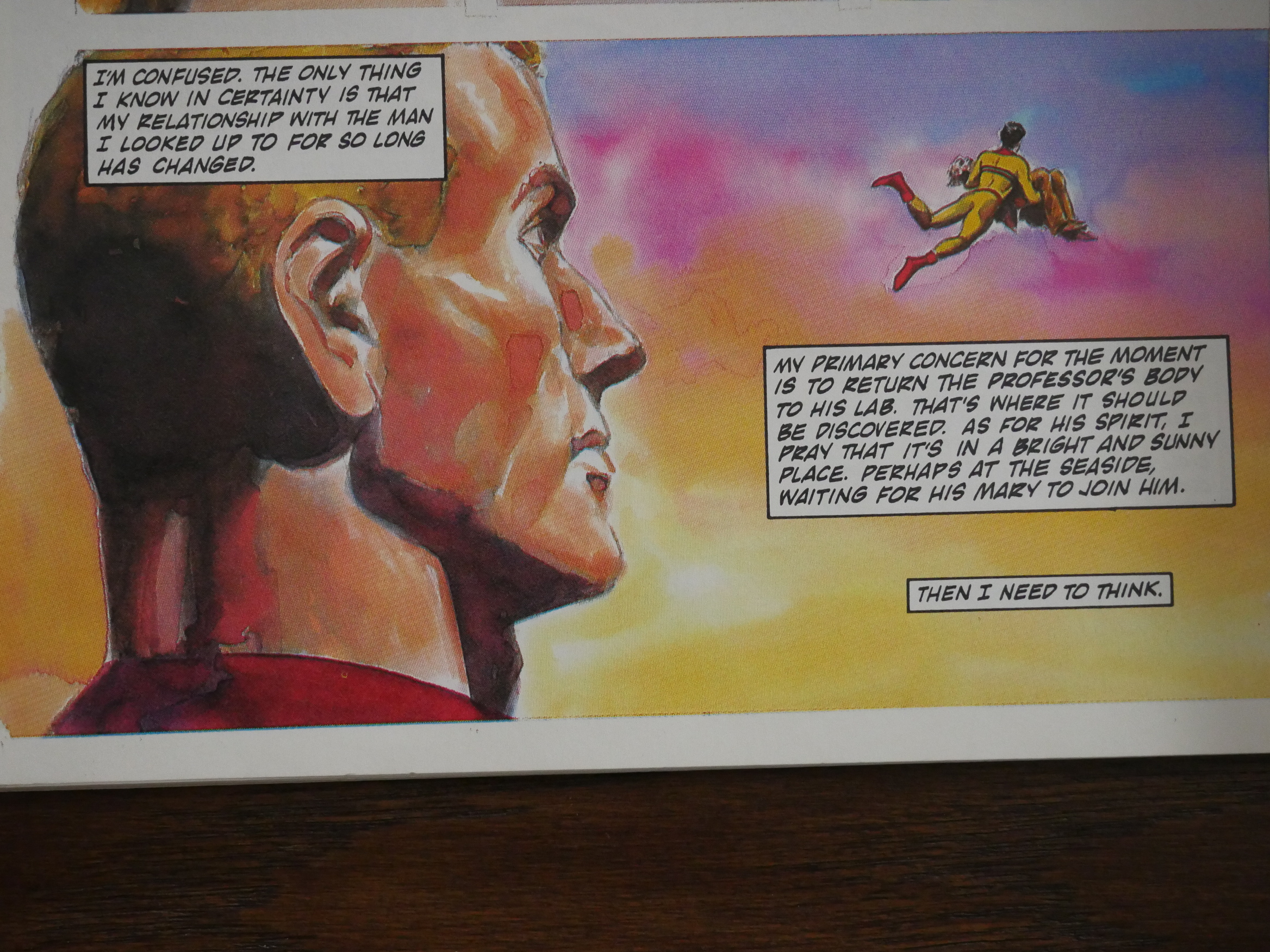
Val Mayerik is somebody that I haven’t kept up with, but his art style has definitely developed since the early 80s.
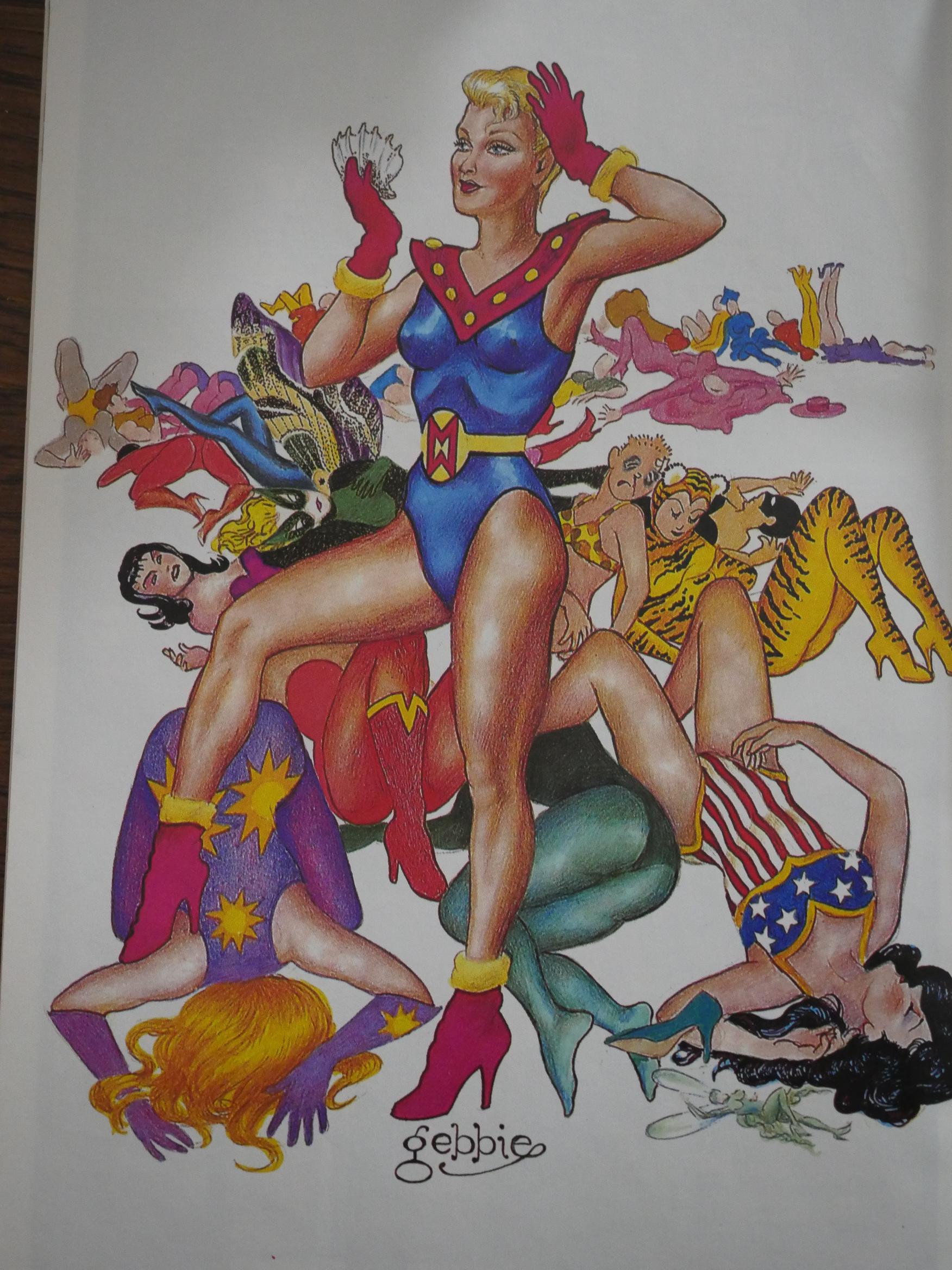
Melinda Gebbie provides a pinup, which is fun.
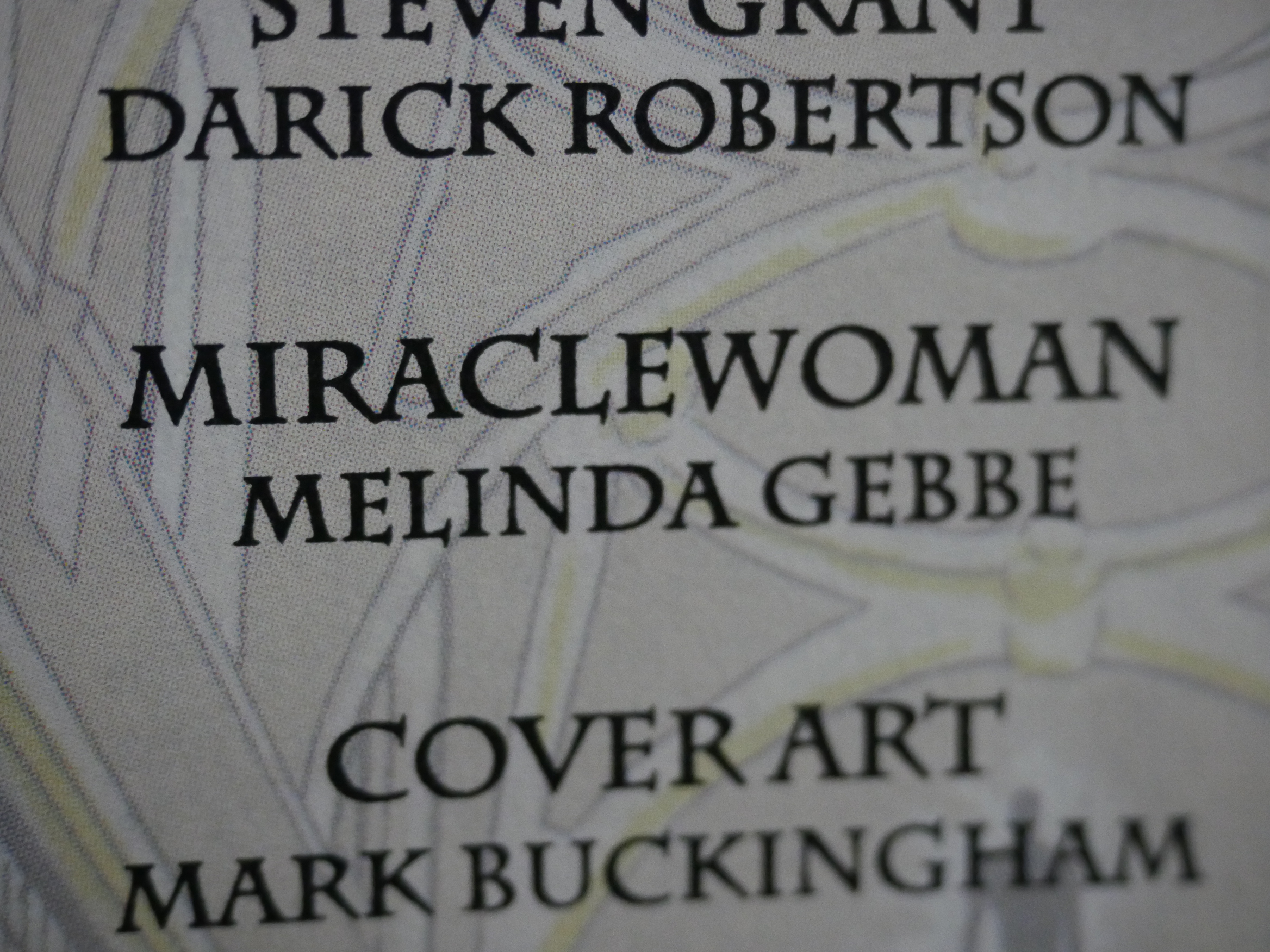
Or “Gebbe”, as Eclipse calls her.
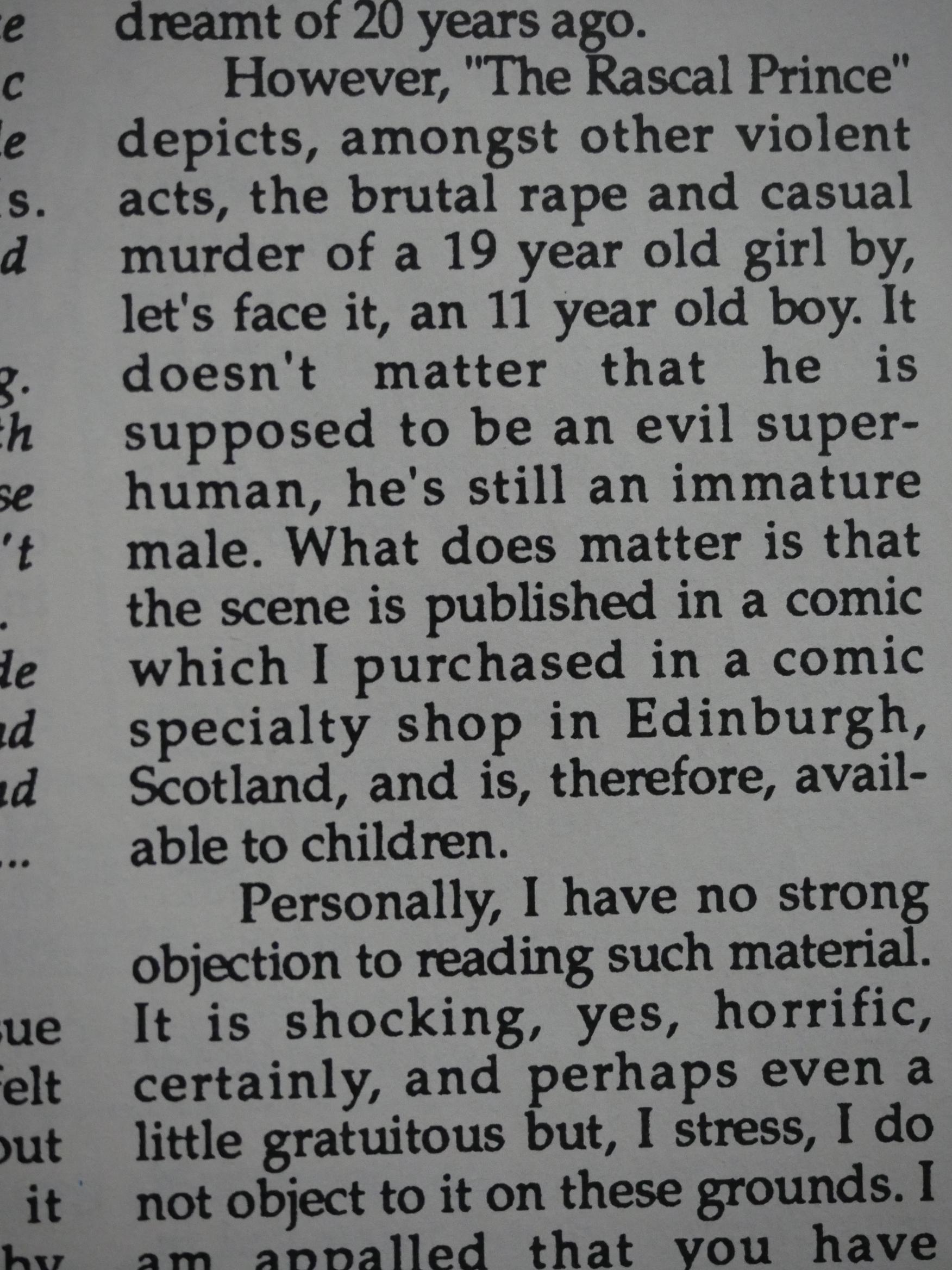
A reader writes in to say that he’s appalled by Robinson’s rape story… for all the wrong reasons. “WON”T ANYBODY THINK OF THE CHILDREN!” He only found it “perhaps even a little gratuitous”. Give me strength.
Eclipse managed to publish the first part of the next story cycle before going under, but it’s never been completed. About once a year, there’s rumours of Neil Gaiman and Chris Buckingham completing it, but nothing seems to be happening. If something happens, it will apparently be published by Marvel Comics, who now owns the property lock stock and barrel.
The Comics Journal #172 has the news about Eclipse’s demise, and here’s the bits about Miracleman:
Campiti and Toren Smith are not the only creditors attempting to collect money from Eclipse. Yronwode told the Journal that she suspected several other freelancers had not been paid over the last few years.
Two such creators are Neil Gaiman and Mark Buckingham, whose Miracleman was Eclipse’s most popular title. “I got paid two, maybe three royalty statements in my four and half, five years working with them,” Gaiman told the Journal. “And each time it would begin with me sending faxes and end with grumpy upsets on their part, and eventually I would get a check out of them. I haven’t spoken to Dean since the very beginning of this year.
I think that what is symptomatic of the Toren Smith case is symptomatic of what happened with Miracleman: basically, there’s some very, very creative accountancy going on, with no royalties being paid unless they have to be.” Gaiman said that although he is unsure how much he is owed, he has definitely not received any payment for the HarperCollins edition of his Miracleman collection, The Golden Age. “And probably never the Eclipse edition,” he added. “My guess is, were I to audit Eclipse, I would probably find a great deal of money they owe me, but as it is, I can fall back on my immediate and obvious creditor IDC Comics, publisher of Gaiman’s Sandman.”
Gaiman also told the Journal that it is his understanding that every creator who has worked on Miracleman is owed something. “Alan (Moore, the series original writerl hasn’t been paid any royalties since #1, Mark Buckingham, the artist during Gaiman’s tenurel is owed for at least the last issue, #25. As far as I can tell, none of the artists have been paid any royalties: Gary Leach, Alan Davis, Rick Veitch, John Totleben, Chuck Beckett….” he said.
[…]
When asked if he is owed money by Eclipse, Moore replied, “Well, I never saw any royalties (from Miraclemanl, and from what I hear it was one of their bestselling books.”
Well, that puts rather another spin on the whole “why is it never on schedule” question: If Eclipse were stiffing the creators, you can see why they wouldn’t make it their first priority to get the material to Eclipse.







































































































